A PERFECT WEEKEND IN MAINE

 JOANNE CHANG’S HEAVENLY PIES
JOANNE CHANG’S HEAVENLY PIES
HADESTOWN: A VERMONT CINDERELLA STORY






GROWING UP MIKAELA SHIFFRIN













 JOANNE CHANG’S HEAVENLY PIES
JOANNE CHANG’S HEAVENLY PIES
HADESTOWN: A VERMONT CINDERELLA STORY






GROWING UP MIKAELA SHIFFRIN










































74 The Road to Hadestown
To understand Anaïs Mitchell’s long journey to Broadway fame, it helps to dig down to her Vermont roots. By Mel Allen

82
The Berkshires: An Insider’s Guide

From dining and culture to winter sports, one discovery leads to the next when you visit this vacation spot in its most intimate season. By Alana Chernila
94
When an all-business 8-year-old joined a New Hampshire ski club back in 2003, everyone knew they were witnessing something special. By Meg Lukens Noonan
102
At the beginning of every presidential primary season, the national media descend on a state they barely know. Here’s what they don’t get about the Granite State. By Howard Mansfield

32 /// In from the Cold
For one Maine family, tapping into masonry heaters for warmth is more than a way of life—it’s a calling. By Annie Graves

39 /// Open Studio
Massachusetts fabric artist Crispina ffrench gives discarded textiles bold new life. By Annie Graves
41 /// House for Sale
Step inside a South Shore home that’s been an eye-catcher since before the Revolution. By Joe Bills
44 /// Winter Baking with Joanne Chang

Warm the coldest night with sweet and savory pies from Boston’s favorite pastry chef. By Amy Traverso
58 /// In Season
When summer produce feels like a distant memory, relish the gifts of the sea. By Amy Traverso
60 /// Weekend Away
Camden, Maine: an off-season coastal escape that’s worth savoring. By Katy Kelleher

68 /// The Best 5
Romantic retreats that go hand in hand with the snowy season. By Kim Knox Beckius
70 /// Out & About
From pond hockey tourneys to polar bear plunges, we round up events that are worth the drive.
10
DEAR YANKEE, CONTRIBUTORS & POETRY BY D.A.W.
12
INSIDE YANKEE
14
FIRST PERSON
Lessons from a whale’s eye. (Or, why a good museum should make you nervous.) By Justin
Shatwell16
FIRST LIGHT
A DIY rope tow turns an ordinary Vermont backyard into a magical private ski hill. By Brian
Mohr22
KNOWLEDGE & WISDOM
Sage advice from a veteran of the houseplant wars, and straight talk from Rhode Island’s own Viola Davis. Plus, trivia about Boston’s Museum of Fine Arts, founded 150 years ago.
26
UP CLOSE
A salute to the snow queen of Bethel, Maine. By Joe Bills
28
5 QUESTIONS WITH...
Sustainable seafood expert Barton Seaver, featured on Weekends with Yankee
128
LIFE IN THE KINGDOM
When you love plowing snow, it’s easy to get in over your head. By Ben Hewitt
It was the kind of winter day you want to tell the world about. But we wouldn’t dare. We were more than happy to put the phones away and disconnect. Because sometimes, that’s the first step in reconnecting. Especially when you’re with your favorite people in a place like this. Run after exhilarating run, we ‘liked’ and ‘loved’ and ‘lol-ed’ away the day. And tomorrow we’ll do it all over again. This is me.

























































































































(6.75 X 9.5)













































 JOURNEY NO. 357 LAKES & MOUNTAINS REGION
JOURNEY NO. 357 LAKES & MOUNTAINS REGION
EDITORIAL
Editor Mel Allen
Deputy Editor Ian Aldrich
Managing Editor Jenn Johnson
Senior Food Editor Amy Traverso
Home & Garden Editor Annie Graves
Associate Editor Joe Bills
Senior Digital Editor Aimee Tucker
Digital Assistant Editor Katherine Keenan
Contributing Editors Kim Knox Beckius, Ben Hewitt, Rowan Jacobsen, Krissy O’Shea, Julia Shipley

ART
Art Director Lori Pedrick
Photo Editor Heather Marcus
Contributing Photographers Adam DeTour, Megan Haley, Corey Hendrickson, Michael Piazza, Greta Rybus
PRODUCTION
Director David Ziarnowski
Manager Brian Johnson
Senior Artists Jennifer Freeman, Susan Shute
DIGITAL
Vice President Paul Belliveau Jr.
Designer Amy O’Brien
Marketing Specialist Holly Sanderson
CORPORATE STAFF
Maintenance Supervisor Mike Caron
Receptionist Linda Clukay
Facilities Attendant Paul Langille
Staff Accountant Nancy Pfuntner
Credit Manager Bill Price
Accounting Coordinator Sabrina Salvage
Executive Assistant Christine Tourgee
YANKEE PUBLISHING INC.
ESTABLISHED 1935 | A N EMPLOYEE-OWNED COMPANY
President Jamie Trowbridge
Vice Presidents Paul Belliveau Jr., Jody Bugbee, Judson D. Hale Jr., Brook Holmberg, Sandra Lepple, Sherin Pierce
Editor Emeritus Judson D. Hale Sr.
BOARD OF DIRECTORS
Andrew Clurman, Daniel Hale, Judson D. Hale Jr., Joel Toner, Cor Trowbridge, Jamie Trowbridge
FOUNDERS
Robb and Beatrix Sagendorph
Publisher Brook Holmberg
ADVERTISING
Vice President Judson D. Hale Jr.
Media Account Managers Kelly Moores, Dean DeLuca , Steven Hall
Canada Account Manager Françoise Chalifour
Senior Production Coordinator Janet Selle
For advertising rates and information, call 800-736-1100, ext. 204, or email NewEngland.com/adinfo.
MARKETING
ADVERTISING
Director Kate Hathaway Weeks
Manager Valerie Lithgow
Associate Holly Sloane
PUBLIC RELATIONS
Roslan & Campion, 212-966-4600
NEWSSTAND
Vice President Sherin Pierce
NEWSSTAND CONSULTING
Linda Ruth, PSCS Consulting, 603-924-4407
SUBSCRIPTION SERVICES
To subscribe, give a gift, or change your mailing address, or for any other questions, please contact our customer service department:
Yankee Magazine Customer Service
P.O. Box 422446
Palm Coast, FL 32142-2446
Online NewEngland.com/contact
Email customerservice@yankeemagazine.com
Toll-free 800-288-4284
To order additional copies, contact Stacey Korpi at 800-895-9265, ext. 160.
Yankee occasionally shares its mailing list with approved advertisers to promote products or services we think our readers will enjoy. If you do not wish to receive these offers, please contact us.
Yankee Publishing Inc., 1121 Main St., P.O. Box 520, Dublin, NH 03444 603-563-8111; editor@yankeemagazine.com














Cruise the Columbia & Snake Rivers in complete comfort aboard our elegant new riverboats. Each stop along the epic route forged by Lewis & Clark has its own story, embodied in the history, culture, and beauty of the region. Small Ship Cruising Done Perfectly.®


















We round up New England’s top five seaside spots for a cozy winter weekend.

NEWENGLAND.COM/ WINTER-OCEAN-WEEKENDS
Just try to resist this tasty chowder packed with fish, potatoes, and bacon.
NEWENGLAND.COM/ FISH-CHOWDER


You Won’t Want to Miss Bundle up and let gravity do its thing at these chilly and thrilling destinations.
NEWENGLAND.COM/ SNOW-TUBING
From snowy trails to heated pools, these towns are full of cold-weather charms.
NEWENGLAND.COM/ WINTER-TOWNS
































The Tanglewood Learning Institute presents the first ever year-round season of programming at the Linde Center for Music and Learning. Events include concerts, OpenForum, TASTE, Cinematics, Art Night Out, and more! For tickets, visit tli.org or call 617-266-1200.

tanglewood 2020 summer season
Tickets on sale February 9! Get early access to Tanglewood tickets by becoming a Friend of Tanglewood. tanglewood.org/yankee
boston symphony orchestraALANA CHERNILA
Approaching her own stomping grounds as a tourist [“The Berkshires: An Insider’s Guide,” p. 82] was “an opportunity I couldn’t pass up,” says Chernila, a writer and cooking teacher who lives with her family in Great Barrington, Massachusetts. “It not only changed the way I experience where I live, it helped me to be a better host for those coming to see it for the first time.”
BRIAN MOHR

A native New Englander who jokes that he’s been skiing since he was in the womb, Mohr shares the story of his family’s DIY rope tow in this issue [“The Barnebakken,” p. 16]. While he and his wife— both professional writers and photographers—had been scheming about it for nearly 10 years, “it wasn’t until we had kids that we made the dream a reality,” he says, adding, “It is truly a skiing paradise.”

GABRIELA HERMAN
A post-college stint as an assistant to a top photographer in Brazil helped inspire Herman to set up shop as a freelancer in New York, shooting for clients such as Travel & Leisure and The New York Times. The Boston native tells us that her Yankee assignment [“The Berkshires: An Insider’s Guide,” p. 82] was a lovely way to get to know a little more about “the other side” of Massachusetts.

TITUS SMITH
Raised on a Kansas farm, Smith was a freelance graphic designer in Memphis when a job at ESPN lured him to New England in 2015. For Yankee, he helped illustrate “Finding New Hampshire” [p. 102], a story about a state that he and his wife have grown to love. “We spent most of our dating years in the Ozarks, and it’s amazing the similarities we find in the mountains, lakes, and scenic drives.”


KRISTIN TEIG

One of Teig’s first photo assignments was with Joanne Chang for Parade magazine, and since then they’ve collaborated on multiple projects, including Chang’s newest cookbook, Pastry Love [“Winter Baking with Joanne Chang,” p. 44]. During the two-week shoot for the book, Teig and prop stylist Rick Holbrook made it a daily goal to not eat all the pastries ... and they never succeeded.
HOWARD MANSFIELD
Having delved into the world of New England antiques for his recent Yankee article “The Death of Brown Furniture,” Mansfield here turns his attention to the politics and personality of his home state [“Finding New Hampshire,” p. 102]. The author of 10 books, including The Habit of Turning the World Upside Down, he lives in Hancock with his wife, the nature writer Sy Montgomery.
Nice read on big cats in New England [“The Great Divide,” November/ December], but:
I am a 78-year-old retired aerospace research scientist and Connecticut native who has spent thousands of hours in the mountains of Vermont, Maine, New Hampshire, and Massachusetts. About 15 years ago near our property in Whitefield, New Hampshire, I observed through my very highpowered rifle scope a large black bear coming down a logging road and flipping rotted logs to feed on grubs. The bear moved on, and within a few minutes, what comes into view at 100 yards but a mountain lion—in real life! It sniffed around the logs before heading off on a path away from the bear’s route. Sorry, but mountain lions are here, just secluded.
Ben Granatek Hillsborough, New HampshireWe’d like to join in with those who welcomed the return of Ben Hewitt’s family adventures [“Life in the Kingdom”]. But we also have a unique insight into how the Yankee columnist spent some of his time this summer. Ben generously agreed to appear in a fund-raising calendar to benefit the Varnum Memorial Library in Jeffersonville, Vermont. “Vermont Writers: Uncovered” features 13 authors and poets in tasteful nude art photos. Ben’s photo is sheer beauty for its simplicity: just a man and his chainsaw. The calendars can be found at varnumlibrary.org/writersuncovered; all proceeds benefit the library.
Deb Krempecke East Johnson, VermontWhat a happy surprise to discover in the November/December issue [“The Poet’s Son”] that Ben Hewitt’s father, Geof, is the poet with whom I once
Because the town demands it so, We keep our sidewalk clear of snow…
Until the town’s own snowplow men
Come by and bury it again. —D.A.W.

exchanged poems, having found his books in a cottage in Harpswell, Maine, that we both had rented for many years. Geof’s poems inspired me to let that locale be my muse. I spent many hours on a rocky outcrop attempting in free verse to capture that magical place. Thank you, Yankee and Ben Hewitt, for this happy memory.
Linda Law Clemson, South CarolinaWrite us: editor@yankeemagazine.com.
Please include where you reside. Letters may be edited for length and clarity.
Correction
Turns out, two shops in Middlebury, Vermont, got mixed up in our November/December issue [“Could You Live Here?”]. So if you want to browse eclectic gifts from Vermont and beyond, stop into Sweet Cecily, but if you hanker for cheese, maple syrup, and hefty fudge samples, head down the street to Vermont’s Own Products . (Better yet: Visit both!)
Dear Reader,
The drawing you see above is called For Now and Ever It is completely composed of dots of ink. After writing the poem, I worked with a quill pen and placed thousands of these dots, one at a time, to create this gift in honor of the the love of two of my dearest friends.
Now, I have decided to offer For Now and Ever to those who have known and value its sentiment as well. Each litho is numbered and signed by hand and precisely captures the detail of the drawing. As an anniversary, wedding, or Valentine’s gift for your husband or wife, or for a special couple within your circle of friends, I believe you will find it most appropriate. Measuring 14” by 16”, it is available either fully-framed in a subtle copper tone with handcut double mats of pewter and rust at $145*, or in the mats alone at $105*. Please add $18.95 for insured shipping. Returns/exchanges within 30 days.
My best wishes are with you.
Sextonart Inc. • P.O. Box 581 • Rutherford, CA 94573 (415) 989-1630

All major credit cards are welcomed. Please call between 10 a.m.-5 p.m. Pacific Standard Time, 7 days a week.
Checks are also accepted. Please include a phone number.
*California residents please include 8.0% tax
Please visit our website at www.robertsexton.com
“There is no moment of my life when you are not a part of me; you hold my heart; you guard my soul; you guide my dreams so tenderly. And if my will might be done, and all I long for could come true, with perfect joy I would choose to share eternity with you.”
n seeing Yankee ’s pages come together, there are times when I think I cannot wait for this issue to leave our office, get bound at the printers, and then be on its way to readers, wherever they are. This is one of those times.

Inside, you will discover how a couple turned a Vermont hillside into their homemade ski playground [“The Barnebakken,” p. 16]. You’ll learn about a Maine family who design and build masonry stoves that can heat a house all day on an armload of wood [“In from the Cold,” p. 32]. Massachusetts native Alana Chernila will lead you to unexpected places in the region where she’s lived much of her life [“The Berkshires: An Insider’s Guide,” p. 82]. And, just in time for the nation’s first presidential primary, you can dive into a primer on what America should know about Yankee ’s idiosyncratic home state [“Finding New Hampshire,” p. 102].
I want to linger here, though, on the stories of three women. I doubt they’ve ever met, but if they did—as different as they are, as varied as their upbringing may have been—they would recognize each other as kindred spirits. Each has needed uncommon resilience and endurance, and each knows the power of believing in your dream, no matter how improbable it might seem to others. Their three stories lie at the heart of the magazine you hold now.
Despite her Harvard math credentials, Joanne Chang knew early on that her heart lay elsewhere. In senior food editor Amy Traverso’s profile [“Winter Baking with Joanne Chang,” p. 44], we first meet Chang baking hundreds of holiday cookies for her fellow office workers late at night in her tiny Boston apartment. She would not be deterred from the path she needed to follow, and today she is one of the most honored bakers in the country.
In “Becoming Mikaela” [p. 94], freelance writer Meg Lukens Noonan remembers the fierce tenacity of an 8-year-old Mikaela Shiffrin, who once skied with Noonan’s own kids at New Hampshire’s Ford Sayre ski club. There was the sense, Noonan says, “that we might be witnessing something much bigger than our homegrown club, something so lightning-in-a-bottle special that conventional wisdom was off the table.” Now, at age 24, Mikaela Shiffrin is on her way to becoming the greatest American ski racer ever.
“The Road to Hadestown ” [p. 74] follows Anaïs Mitchell’s improbable journey from a Vermont farm to the brightest lights of Broadway, where her musical, Hadestown , earned eight Tony Awards. The work consumed her for more than a dozen years, and though sometimes she doubted she would ever finish, she kept going, always believing—like Orpheus, the mythical hero of Hadestown —in the power of art to inspire and transform.
Read these stories, and you will understand why I could not wait for you to have them.
Mel AllenFor three generations, the builders, blacksmiths and craftsmen at Country Carpenters have put their hands and hearts into designing and building the finest New England Style buildings available. Hand-selected materials, hand-forged hardware, hand-built and hand-finished by real people. You feel the difference in your heart.














visit museums to feel fear.
I have a clear memory of myself as a child in the Museum of Natural Science in Houston. I’m following behind my parents as we walk down a narrow hallway. Bored and half asleep, I’m tracing my fingers absentmindedly along the wall when suddenly I become aware that my hand isn’t touching plaster, but rather a massive open eye. As I stand there, frozen, struggling to comprehend that what I had thought was a wall was in fact a giant replica of a sperm whale, my tiny mind first knows terror. I’ve had a phobia of whales ever since.
Through the years my reactions to museums have mellowed, and to the best of my recollection I haven’t cried in one since I was 10 (robot dinosaurs, in case you were curious). Museums rarely take me to the threshold of true fear anymore, but I continue to visit them, content to revel in fear’s sister emotions: anxiety, uncertainty, and awe.
Once at Fort Knox in Bucksport, Maine, I lingered in the catacomb-like tunnels too close to sunset and was left with only the fading blades of sunlight filtering through the turret windows to guide me out. As the steps in front of me grew harder to see, I panicked for a moment, and suddenly I was a child again, lost in the woods for the very first time.
In Portsmouth, New Hampshire, I explored the USS Albacore entirely by myself, without anyone to make sure I didn’t touch any of the dials or gauges. Alone in a submarine, I was filled with the sense that I was somewhere I ought not be, and I crept through the empty vessel with the same knot in my stomach and grin on my face that I had when I would sneak into my parents’ closet.
Frequently I’ll find myself in a history museum, staring at some forgotten Egyptian prince marked with the date 2,000 B.C. Each time I ponder how this statue came to be as many years before Christ as I came after him; each time I am numbed by my own insignificance.
I do not do these things out of masochism or nostalgia. I do not visit the past to bury myself in it. Rather, I do it to keep my life moving forward.
Today it’s easy to drift along the path of least resistance. Every hotel room, airport terminal, and department store has been scientifically designed to make us feel entirely at home. Museums are the opposite of this. In a black-and-white world, they are a bouquet of color. They are the statistical outliers to society’s homogenized curve. They are buildings dedicated to taking you out of your element—castles with winding, unfamiliar floor plans, full of artistic wonders, deteriorating taxidermy, and the treasures of civilizations. They exist to bring you face-to-face with the unknown in a world where there is so little of that left.
A good museum is like the first day of school. It should make you nervous. It should confront you with things you’ve never seen and ideas you’ve never wrestled with. It should force you to blaze new trails through the virgin gray matter of your brain.
And so I visit museums. I do it with a prayer that I will find myself alone in a room with something that makes my pulse quicken. I do it with the hope that I will find something that will terrify me as completely as that ominous, probing eye. Because looking back on it today, I realize that it was not the whale itself that I feared, but the fact that it was so close and I was so blind to it. In that moment my presumptions disappeared, and I could not escape the fact that I am a tiny thing and the world around me is so terribly, beautifully large.
During peak foliage season, this 10-night journey will bring you to the very best destinations between Québec City and Portland. Led by our expert guides, explore small towns and cities, each with a notable history and a story to tell. Along the way, admire the vivid colors of the gently rolling landscape as you relax on board the Pearl Mist
































































 BY BRIAN MOHR
BY BRIAN MOHR
The layer of slick, wet November snow coating our family’s humble Vermont hillside was hardly enough for skis to slide on. So it was with well-worn work boots on my feet that I reached for the rope to test our homemade ticket to backyard-skiing paradise. Having just spliced together with my neighbor Andrew two sections of ¾-inch-diameter rope into a single 1,000-foot loop, I seated the rope around the rear wheel of an old riding lawn mower and, for the very first time, fired up our backyard rope tow. I leaned back, pressured my heels, tightened my grip on the ascending line of the rope—and was yanked into a semi-controlled bout of worldclass boot skiing before dropping the rope 50 feet up the hill and proclaiming, “It works!”
My brother-in-law, Richard, showed up just in time to witness the momentous occasion, and he offered to help. “Grab your skis,” I suggested, half jokingly. “It’s going to be a fun winter.” But unless soggy grass and wood chips is your thing, skiing was not recommended just yet.
Besides, we still had some fine-tuning to do before the long season ahead. So we got to work. We had an emergency shutoff to install, some securing of the motor to complete, and, most important, a sign inspired by our daughter Maiana that read Barnebakken (Norwegian for “kids’ hill”) to carve and attach to the side of the tow shack. For added motivation, wet snowflakes continued to fly all afternoon.

For nearly 20 years, my wife, Emily, and I have done cross-country and backcountry skiing on and around our property in the Mad River Valley. But it wasn’t until we logged a crowded stand of red pine trees behind our home in 2017 that the idea of installing our very own rope tow took hold. We were intrigued by how building our own lift up a snowy hill might make the sport even more fun, social, and accessible. Now, with our two young daughters, Maiana and Lenora, and several of their young cousins nearby, our hunch was that the investment required to get a rope tow up and running would pay off for years to come.
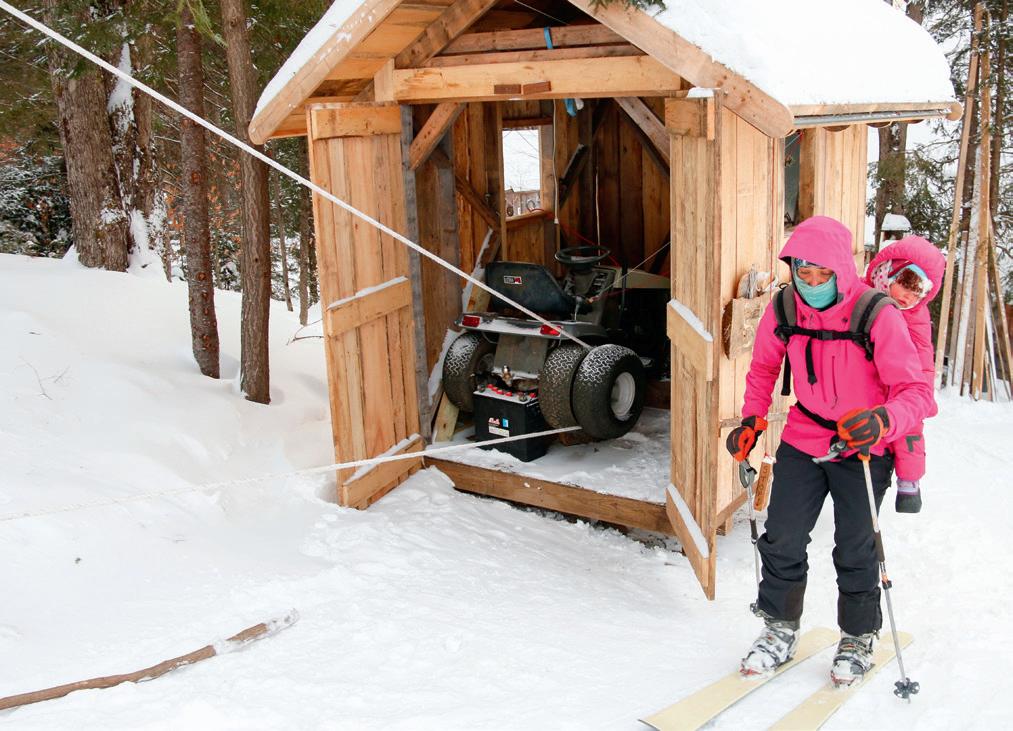
Logger Rich Hallstrom chuckled when he saw me flagging a straight line of red pines behind our house—trees we wanted left behind as 12-foothigh stumps, the future towers for our tow. They would serve as mounts both for lights and for the return wheels that guide the rope back down the hill, among other functions.
“I can’t say I’ve seen this on a job before,” Rich said. He chipped away at clearing five acres of trees through the winter of 2017, revealing a southwestfacing hillside that was once home to flocks of sheep and even some cattle. Stone walls line the north and south
sides of the hill, and thanks to the hard work of earlier generations, there’s hardly a rock larger than a plum out there. It was on hillsides like this one that mechanized ski areas got their start in the first half of the 20th century, when rope tows were relatively commonplace across New England’s snow country.
In late spring, we used the proceeds from the logging to grind the stumps in place and to buy pasture seed, which we spread by hand. Over the summer, our family constructed a simple shack at the base of the hill to house the motor, installed a return wheel at the top of the hill,
After my proud test run on that snowy November afternoon, flakes piled up overnight, and in the morning Emily and I headed out for our inaugural runs on the Barnebakken. Donning sturdy leather gloves, we grabbed the rope and in just 35 seconds were whisked 500 feet to the open views and breezes of our hilltop.
and sourced a few other ingredients—an old riding lawn mower, bits of hardware, and rope, of course— some of which was passed along to us by our friends Angus and Kricket McCusker. The McCuskers have rope tows in both their front and back yards, and time we had spent skiing their tows together was the final dose of inspiration we needed.
Within a few runs, it was clear we had created something magical. “I can’t believe we have our own ski area!” Emily said. Later that day, family friends Brennan and Forrest, with whom we have skied extensively in New England and across the Arctic, stopped by with Forrest’s 4-year-old son, Heikki, for a few runs. Together with our girls, we enjoyed half a dozen runs on the hill under a warm late-November sun. As our kids were getting the hang of holding the rope, we’d ride behind them

Within a few runs, it was clear we had created something magical. “I can’t believe we have our own ski area!” Emily said.from left : Mom Emily and daughter Lenora set off from the Barnebakken on a few humanpowered laps; friends and family gather at the “summit station” overlooking Vermont’s Green Mountain divide, with Mad River Glen and Sugarbush in view.

to assist. Emily proceeded to lay fresh tracks down one untracked portion of the hill after another, while Brennan kept an extra set of eyes on the kids and the tow. It was just the first day into life on the Barnebakken, and we had already set in motion something truly special for our family and friends. A few laps on the tow before heading to Grandma’s for dinner? Sure. Skip the big mountains when the wind chill is 30 below, and ski a couple of runs before some hot soup around the woodstove? You bet.
Before long, spinning the tow—or Coco, as we named our mower and motor—became second nature, and usually spontaneous: during lunch breaks from work, after school, aprèsdinner, under the winter moon. Why not? We set up a cozy fire pit with benches at the base of the hill, and fireroasted Barnebakken Burgers were
born. Marshmallows were toasted. Jumps and whoop-de-dos took shape all over the hill, providing endless entertainment for all ages.
“Daddy, let’s make a hundred whoop-de-dos!” suggested 3-year-old Lenora this past winter. Increasingly, we witnessed the girls and their visiting ski buddies becoming immersed in a continuous and fun-loving flow of skiing motion that would keep up for a handful, a dozen, or even 20 runs, as 5-year-old Maiana proudly claimed one day.
It was a warm, rainy Saturday morning last spring when we finally called it quits for the season. The fun was not so much in skiing the leftover areas of snow, but rather in skiing the growing grassy patches and puddles between them. In an hour, the kids were properly soaked and muddied.
When you’ve got your own ski lift, it’s hard to pass up a few moonlit runs on a calm winter night. Initially powered by a neighbor’s hand-me-down beltdriven riding mower, the Barnebakken today hums along thanks to a more powerful shaft-driven mower nicknamed Coco.

We gathered after one last tow up top. The girls leaned against the shutoff gate, gave it a good push, and that was it.
“Thanks, Coco!” shouted Lenora. Under a drenching rain, we skied for the comforts of home below. Kicking off our skis, we wondered if it might snow just once more before summer, or if it was simply time to roll Coco out of her shack and start mowing the lawn.
Quissett Harbor is as picturesque a harbor as one might imagine along the New England coast. It is a popular sailing destination off of Buzzards Bay. The inner harbor is loaded with many classic sailboats. Our Herreshoff, reflected in the calm water in the afternoon sun, is one of a fleet of almost 50 Herreshoff 12½ sailboats moored in the wellprotected inner harbor. The 12½ was designed in 1914 by Nat Herreshoff and is still in production today. These boats are universally acclaimed as one of the finest sailboats of all times. This beautiful limited-edition print of an original oil painting, individually numbered and signed by the artist, Forrest Pirovano, captures the calmness of the water and the unique appearance of this world famous sailboat.
Quissett Harbor is as picturesque a harbor as one might imagine along the New England coast. It is a popular sailing destination off of Buzzards Bay. The inner harbor is loaded with many classic sailboats. Our Herreshoff, reflected in the calm water in the afternoon sun, is one of a fleet of almost 50 Herreshoff 12½ sailboats moored in the wellprotected inner harbor. The 12½ was designed in 1914 by Nat Herreshoff and is still in production today. These boats are universally acclaimed as one of the finest sailboats of all times. This beautiful limited-edition print of an original oil painting, individually numbered and signed by the artist, Forrest Pirovano, captures the calmness of the water and the unique appearance of this world famous sailboat.
This exquisite print is bordered by a museum-quality white-on-white double mat, measuring 11x14 inches. Framed in either a black or white 1½ inch deep wood frame, this limited edition print measures 12¼ X 15¼ inches and is priced at only $149. Matted but unframed the price for this print is $109. Prices include shipping and packaging.
Forrest Pirovano is a Cape Cod artist. His paintings capture the picturesque landscape and seascapes of the Cape which have a universal appeal. His paintings often include the many antique wooden sailboats and picturesque lighthouses that are home to Cape Cod.
This exquisite print is bordered by a museum-quality white-on-white double mat, measuring 11x14 inches. Framed in either a black or white 1½ inch deep wood frame, this limited edition print measures 12¼ X 15¼ inches and is priced at only $149. Matted but unframed the price for this print is $109. Prices include shipping and packaging.
Forrest Pirovano is a Cape Cod artist. His paintings capture the picturesque landscape and seascapes of the Cape which have a universal appeal. His paintings often include the many antique wooden sailboats and picturesque lighthouses that are home to Cape Cod.

Visit our studio in Mashpee Commons, Cape Cod
All major credit cards are welcome. Please send card name, card number, expiration date, code number & billing ZIP code. Checks are also accepted.…Or you can call Forrest at 781-858-3691
our website
Outside, the snow is falling. It’s cold; the sun is low in the sky. Within, all is radiant, fragrant. The windowsills are filled with plants, broad leaves and narrow, in all shades of green. It’s lovely. It’s full of life. It’s the houseplant rhapsody, and I say it’s a load of spinach.
First off, plants don’t want to grow inside in pots and will do everything they can to let you know it. They will get leggy, they will turn pale—they will not die, of course, and put themselves out of their unsightly misery; they’ll just mash themselves against the windows and moan, so you feel guilty.
More tidbits from a battle-weary New England gardener:
1. Very few plants appreciate the sort of temperatures people appreciate. Most of the interesting plants, especially the ones that flower in winter, want to be cool during the
2. The kinds of plants that actually do well in warm, dry rooms with low light—spider plants, for instance—tend to make your house look like a cross between a bank and a fern bar. As a general rule, the more unusual a plant, the likelier it is there’s a very good reason for its rarity.
3. The rustic look of mineral salt–encrusted terra cotta, so fetching outdoors in the garden, doesn’t exude the same charm on a polished mahogany table. Saucers? Please. You need lots of nice antique brass or porcelain cachepots, in which case you can probably afford a conservatory, too.
4. Houseplants contain a mysterious substance that makes them addictive. No matter how many pots of listless leafage you have languishing at home, the odds are overwhelming that long before winter ends, you will be seduced by some gorgeous green creature, and the whole drama will start again.
—Adapted from “The Houseplant Facts of Life,” by Leslie Land, January 1996
(born August 11, 1965, and raised in Central Falls, Rhode Island). Stricken with alopecia in her 20s, Davis was widely cheered for ditching a wig in favor of her natural short hair at the 2012 Academy Awards; last fall she was named a spokeswoman for L’Oréal Paris at age 54. The star of TV’s How to Get Away with Murder, which wraps its six-year run in February, Davis is also the only woman to have won an Oscar, an Emmy, a Tony, a Golden Globe, a SAG Award, and a BAFTA Award.

“[Beauty] is about being honest. It’s about stepping into This is how I am in private, this is how I look, this is how I act, this is my mess, this is my strength, this is my beauty, this is my intelligence, and then putting it out there that this is who I am.”









 HSA / FSA APPROVED
HSA / FSA APPROVED
150
Years since the MFA was founded (2/4/1870)
3
Major city institutions whose treasures the MFA was created to display (MIT, Harvard, Boston Athenaeum)
7/4/1876
The MFA opens in Copley Square on the nation’s centennial
1907
The MFA is the world’s first museum to employ an official guide, called a docent
2018
The MFA is the world’s first museum to employ a pest-sniffing dog, a Weimaraner puppy called Riley
$2.9M
Estimated cost of the MFA’s new home in the Fenway when unveiled in 1909
$504M
Estimated cost of the MFA’s single biggest renovation project when unveiled in 2010 (including the new 121,307-square-foot Art of the Americas Wing)
35%
Increase in attendance the year after the renovation debuted
$115–$274

One-year cost of a family membership
$0
One-year cost of a family membership for newly naturalized U.S. citizens
42½
Height in feet of Dale Chihuly’s Lime Green Icicle Tower, a visitor favorite acquired in 2011
30
Approximate number of hours it takes the conservation staff to dust the tower’s 2,000-plus handblown glass “icicles”
Length
Outer/Lining



Imported
Sizes
Bordeaux
It’s been said that New England winters can make people crazy, but maybe that isn’t always a bad thing. In late February 2008 in Bethel, Maine, where the population hovers around 2,600 and yearly snowfall has been known to exceed 10 feet, a group of locals decided to do something a little crazy. They built a snowman. Or rather, a snowwoman.
Typically, there’d be nothing unusual about this. The first documentary evidence of snowmen dates to the 1300s, and the phenomenon probably long predates that. And now, all around the world, the day after any snowstorm a bumper crop of snowmen can be seen dotting front yards and public spaces.
But Bethel’s creation was no average snow-woman.
Nine years earlier, the town had built a 10-story snowman named Angus (for then Maine governor Angus King, now a U.S. senator), which was subsequently recognized by Guinness World Records as the largest snowman ever.

In 2008, tired of resting on their laurels (and blessed with a very snowy winter), Bethel residents reassembled to top their own record. They named their creation Olympia in honor of, appropriately enough, Olympia Snowe, who was then one of their U.S. senators.
At roughly 122 feet, Olympia was more than eight feet taller than Angus—and only 30 feet shorter than the Statue of Liberty. She tipped the scales at 13 million pounds of snow, stacked in four-foot layers. Her eyes were formed of six-foot evergreen wreaths, with Alpine skis for lashes. Elementary school students built an eight-foot “carrot” nose out of muslin, chicken wire, and wood. Five painted automobile tires shaped her smile, while the three buttons on her torso were truck tires. Her arms were 27-foot spruce trees; her hair, 2,000 feet of rope.
Style matters, even to snow-people, so Olympia sported a 130-foot-long scarf and a fleece hat with a 48-foot circumference. Around her neck was a 50-foot flexible pipe necklace with a mica snowflake pendant created by a local jeweler.
Olympia’s most unusual feature, however, went mostly unseen: The 12-foot scarf that Angus had worn a decade earlier was bundled into a “heart” and buried behind the pendant.
Olympia had staying power, too. Last rites were given on July 30, when she was declared melted at the ripe old age of five months. —Joe Bills

We went to the desert to find gems. We met a man. He was tall, dark and spoke of Ethiopia, opal and the gift of the gods.
As I looked upon his offering, it was clear I was standing in the midst of African gem history. R.H.P





Color unlike anything you have ever seen. Color that sweeps and darts, vanishes and reappears. One moment it’s red, then orange, then violet and on the ghostly blues and spectral greens, apparitions of a long-lost world, playing, dancing, cavorting across the surface. No matter what we say, it can’t convey, no matter what we show in print and video, they can’t begin to explain.
Visit us and see or check out our collection online. Amazing values. Welo opals set in 22 karat yellow gold. A rich yellow color. We have the definitive collection of Welo African opal in New England. Each gem is individually chosen, lovingly handcrafted into fine jewelry. Lots to choose from.





Barton Seaver, 40, spent his early career rocketing to foodworld fame as a Washington, D.C.–based chef focused on seafood and sustainability. Shortly after Esquire named him “Chef of the Year,” Seaver left the restaurant business for a National Geographic fellowship, studying how human appetites were changing the world’s oceans. In 2012, Seaver moved to New England to head up Harvard’s Seafood and Health Initiative at the Chan School of Public Health, settling in his wife’s home state of Maine. There, he continues to teach and write about sustainable seafood and has written eight books, most recently The Joy of Seafood , an encyclopedic collection of recipes for every kind of fish and shellfish. His goal: to redirect the public conversation away from scarcity and toward the power that each consumer has to make choices that protect both oceans and fisheries. As he said in a 2010 TED talk, “Sustainability is complicated, but dinner is a reality that we all very much understand.” —
 Amy Traverso
Amy Traverso
Q How did you go from being a restaurant chef to working for National Geographic?
A National Geographic used to do a lot of its entertaining at my D.C. restaurants because of the environmental bent to the food there. I learned that it was launching an oceans initiative, so I asked for 10 minutes of the president’s time and presented my case that the initiative could be augmented by having someone solely
focused on seafood and people and our relationship with the ocean. The response was “Great, you’re an explorer now.” And I said, “Cool, what does that mean?” and he said, “You tell us.” And so I figured it out, as explorers do.
Q How does seafood factor into a sustainable diet?
A Seafood as a center-of-the-plate animal protein simply has a “fin up” when it comes to sustainability, because these animals live underwater in a more gentle environment, thus requiring less bone and less connective tissue. So there are efficiencies built into their existence by the environment in which they live. That’s not to say that properly raised land animals should not be a part of our diet, but when we’re looking at how we feed billions, we should always be looking to efficiencies, and seafood has those in abundance.
Q But what about the danger of overfishing?
A In the United States and New England, specifically, we have the leading global example of fisheries done right. Not that we can’t always improve, but it is widely recognized that the systems by which the U.S. manages its seafood are sustainable. Plus, there is a broad diversity of species that fit our current culinary preferences. They’re caught in
fisheries but do not come close to reaching their capacity in terms of production. Whiting, dogfish, haddock, pollack, hake, mackerel, Acadian redfish—each of these represents a major opportunity. It’s on us as consumers to create the market.
Q Why did you choose to move to Maine?
A It’s delicious, for one. And Mainers have a particular cadence to their lives, to their humor, that we particularly like. Life is calm. People don’t give a damn about who you are or what you’ve done. They care first about the fact that you’re their neighbor. That’s what matters most.
Q Lastly, the lobster roll: cold with mayo or hot and buttered?
A I appreciate both but prefer mayo. Come on! Hot with butter is as much New England as rooting for the Yankees.


No matter whether you live by the seacoast or in the mountains, in the larger cities or on a farm in the rural valleys, bringing a bit of New England into your dream kitchen is easily achieved. Here are a few New England companies to start with.



Visit our 3 beautiful showrooms in Ellington, CT. Find out why folks travel from all over New England for Kloter Farms custom furniture and cabinetry. Always Solid Wood. Always American made. Ask us about Free Delivery in CT, MA & RI. You’re in for a big surprise!
WWW.KLOTERFARMS.COM • (860) 871-1048

Finely crafted Crown Select cabinetry, featuring square inset construction in a painted Maple finish. Custom built by the same artisans at Crown Point Cabinetry.

WWW.CROWN-POINT.COM • (800) 999-4994


It’s hard to find fresh sourdough starter–not dried! Fresh starter is ready for use much more quickly than dried starter, and ours has a wonderfully rich history. Nurtured here in New England for decades. Add in our handsome American-made stoneware crock, the perfect size and material for storing your sourdough starter in the fridge, and you’ve got everything you need to start baking sourdough! Retailing for $55.80.
history. Nurtured here in New England for decades. Add in our handsome
WWW.SHOP.KINGARTHURFLOUR.COM • (800) 827-6836
A beautiful Saratoga, NY kitchen features Vermont Mottled Purple Honed counter-tops, a slate island and a custom front exposed slate sink. Green and Mottled Purple Natural Cleft Slate Tile create a stunning back splash. Sheldon Slate Products Company, Inc.

WWW.SHELDONSLATE.COM
NY (518) 642-1280 • ME: (207) 997-3615

Although the family behind Maine Wood Heat is known for masonry heaters that can warm an entire house, “cottage” heaters—like this one in cofounder Cheryl Barden’s home—offer a toasty solution for smaller spaces.




FOR ONE MAINE FAMILY, THE PURSUIT OF WARMTH WITH MASONRY HEATERS IS MORE THAN A WAY OF LIFE— IT’S A CALLING.


 BY ANNIE GRAVES
PHOTOGRAPHS BY MICHAEL D. WILSON
BY ANNIE GRAVES
PHOTOGRAPHS BY MICHAEL D. WILSON


There is still something deeply primeval and powerful about the prospect of conjuring a flame, even in our era of techno-wizardry. So when Scott Barden kneels on the cement floor of his family’s 12,000-square-foot workshop—the headquarters of Maine Wood Heat, in Skowhegan, Maine—and brings his hands together, first using the friction of a bow drill on wood, then coaxing a wisp of smoke from tufts of tinder, it feels a little like ancient magic. We gather, visitors and employees. Stare at the shavings. Willing them to burn.
Scratch into the bedrock of New England, and you’ll find remnants of the ’60s and ’70s seeded around, possibly waiting to take root again. People tucked into off-the-map places, embodying the more hopeful aspects of those decades, carrying visceral memories of a time when fierce dreams were remaking the world, or at least aspiring to. Hope is a thing that keeps us warm, but in those early activist days, a young couple named Albie and Cheryl Barden wanted to change the world with an actual heat source.
Beyond that, though, it was a question mark.
The way forward was tangled. Albie grew up in Old Town, 65 miles from where we’re sitting today; he went to Brown and Yale, became an Episcopal priest in Connecticut. But in 1973, feeling the pull of the land, he shrugged off that life and moved back to Maine, where he met Cheryl. The couple moved into a 40-acre homestead that Albie owned in nearby Norridgewock, which they rented out “for exactly what the mortgage payment was: $134 a month,” he recalls. That first summer, Cheryl says, “we lived in the milk shed with a bed, a dog, the rats,” and Albie’s daughter Merrill, while they tried to figure out how to make a living.
“We began selling woodstoves out of the dining room during

the Arab oil embargo,” Albie continues. “I was becoming very aware of i ssues of the earth and a right livelihood. And the fact that we’d lost a generation of wood-burning.”
The Barden family in Maine Wood Heat’s workshop in Skowhegan. From left: mom Cheryl, son Scott, daughter Anna, and father Albie (plus Ranger and Baxter). In the background are examples of both traditional masonry heaters and a newer line of high-end restaurant ovens.
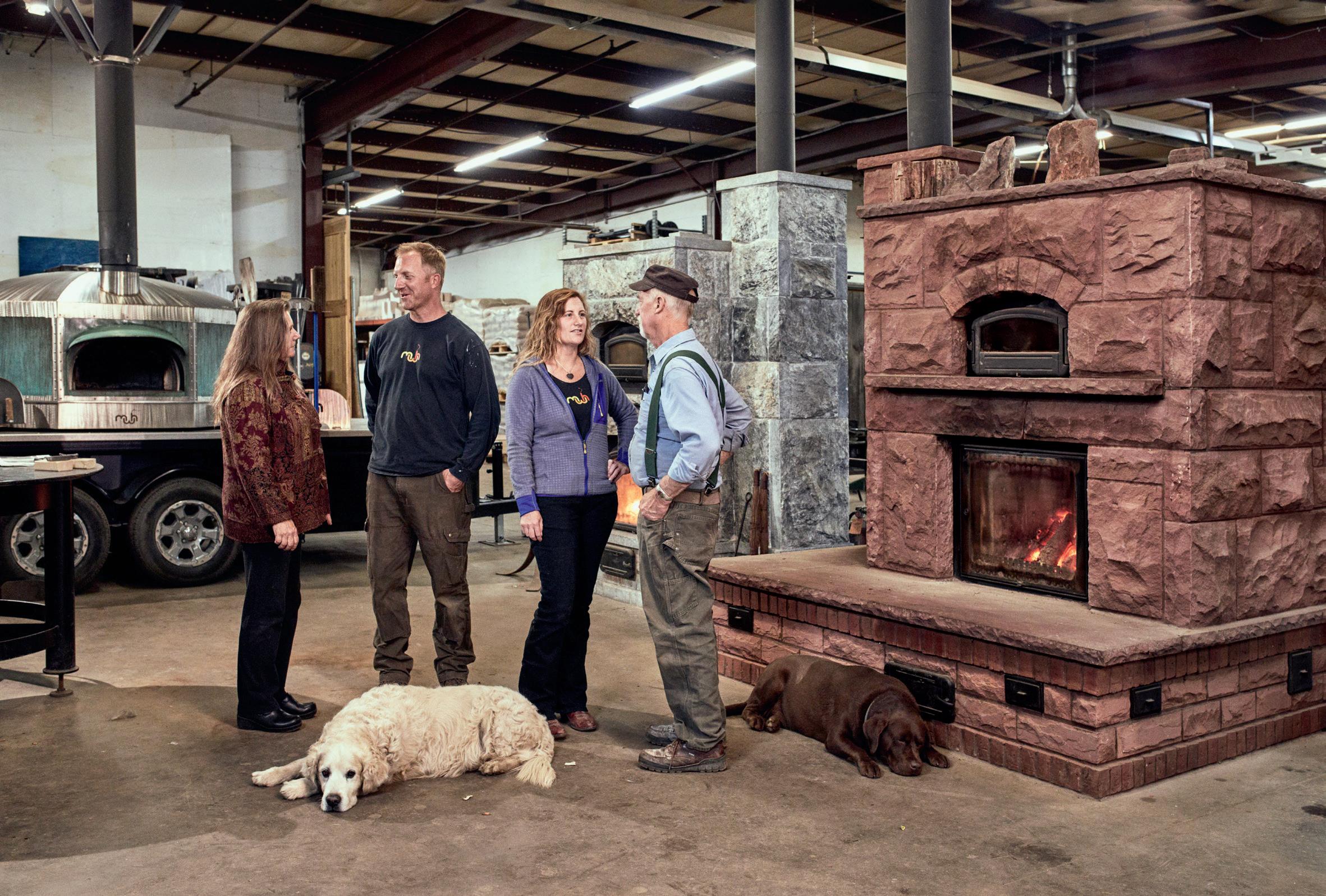
We are sitting in his upstairs business office, packed in like loose logs: me and Albie and Cheryl and their grown kids, Scott and Anna, plus Dana, the office manager who’s like family. Two dogs, Baxter and Ranger, command the floor space, and a squeaky chew toy is the soundtrack to our conversation. Albie’s trim white beard and stiff gait suggest a ship’s captain, and he steers the conversation with vigor. Cheryl’s warmth weaves through the stories, an anchor of sorts. Though no longer a couple, they share laughs, children, and a business. He leans forward when he wants to make a point; Cheryl tweaks the details.
When they were young, an early encounter with Peter Clegg’s New LowCost Sources of Energy for the Home galvanized the pair. “It gathered everything you needed to know about energy under one cover,” Albie remembers. There was wind, water, solar—but when he turned to the section on wood heat, with its image of a heat-storing fireplace (a Swedish switchback crosssection tile stove), “I tell people I felt a hand come down on my shoulder and
Also known as Russian or Finnish fireplaces, masonry heaters have a minimum of two switchbacks to slow down the combustible gases created by burning wood. Most often, these internal chambers are vertical, but Albie Barden’s system of horizontal switchbacks brings the heat back to the central core. These convoluted flues force the heat to spend itself inside the heater, rather than escaping up a chimney.
Slowing the hot gases without lessening the fire’s intensity makes for optimum combustion: 1,200 °F stored in the masonry chambers. Hours later, the brick or soapstone walls—prodigious in their ability to hold heat—keep a house toasty (a potential drawback, in fact, because if a day warms suddenly, there’s no thermostat to turn down). The fire is lit from scratch every 12 hours; a big fire gives off the same heat as a small one, just for a longer time. And yes, you can still enjoy the view of a crackling fire behind the glass firebox door. “It’s still the best way to heat,” says Albie.
kinda push me.” He leans in. “In theological training, you hear about callings. I knew: This was what wood heat really needed to be.”
So what does one do, the day after one is called?
“You start researching, because you realize you don’t know a damn thing about any of it.” He cracks up. Cheryl shakes her head and adds, “Then you gather up your family, stick ’em on a plane, and go to Europe for three weeks, looking for the holy grail of masonry heaters.”
In fact, masonry heaters—massive wood-burning soapstone, brick, or tile stoves that are capable of holding heat for 12 hours or more—are nothing new in Europe, but they never really took off in the New World. Albie thinks maybe it’s because there was so much wood here, no one felt the need to conserve.

But imagine getting the most heat possible from your woodpile, thanks to internal chambers that fold back and forth like well-ordered intestines, slowing the gases released by burning wood. Those gases are where the real heat lives, but generally they fly right up your chimney. “To throw all that heat away is crazy.” Albie practically glowers. “And most fireplaces [and woodstoves, for that matter] throw it all away.” The proof of efficiency? Scott Barden heats his 5,000-squarefoot home with two and a half cords of wood a year, and it’s so toasty that “in the evening, we’re in T-shirts,” he says.
Besides using a fraction of the wood, picture stoking your fire just twice a day, because all that heat stays stored in the stove’s layers. Albie compares the setup to Russian nesting dolls: core, heat exchange wall, outer veneer.
Albie and Cheryl packed Scott, 18 months, into a knapsack, and took a cheap flight to Europe in the middle of winter. With a Eurail pass, they traipsed from England to France to the Swiss Alps, then to Germany, Denmark, and Sweden, “trying to figure out the status of masonry heaters in each country,” says Albie, while connecting with as many craftsmen as they could find, including an old bachelor in Switzerland who made tiles by hand, ground the glazes, and guaranteed each stove for the length of his life. “It was like going back in time,” Cheryl says. “We were seeing medieval work,” adds Albie.
Say goodbye to mass-produced furniture and take a look at Kloter Farms. We have three gorgeous showrooms filled with handcrafted, American-made furniture for every room in your home.






dining • bedroom • kitchen islands
sofas • sectionals • recliners
bedroom • tv stands • home office
Wander through our 16-acre outdoor living display park. Whether you need a simple shed or a two-story multi-car garage, we’ll help you create an exceptional building.
storage buildings • garages
pool houses • pergolas • pavilions
sunrooms • patio furniture & more
The holy grail awaited in Finland. Albie sets the scene: “We were cold, we were sick, it was 20 below.” In Helsinki, they discovered that the Finnish fireplace, unlike German or Swiss tile stoves, featured a front center fire in a brick unit. It was a eureka moment. “I said, ‘We can make this work,’” he grins. “New England has a tradition of red bricks and a front center fire. I knew we had a chance with this.”
By the time they came home, they were saturated. Workshops would follow, back-and-forths with experts from Finland, and they also learned from influential stove maker Basilio Lepuschenko, a member of the Russian community that had settled in Richmond, Maine. Albie credits a 1978 Yankee article—“What’s So Hot About a Russian Fireplace?”—with helping to launch masonry stoves in this country.
Along the way, Albie devised his own innovations, including a series of horizontal runs to bring the heat back into the central mass. And though he claims he knew nothing about masonry when the whole adventure began, today he’s built hundreds of heaters around the U.S. and the world (the farthest in New Zealand), coauthored a book titled Finnish Fireplaces: The Heart of the Home , and tutored the next generation of builders, who are “scattered all over the country.”
Downstairs, we admire the two massive heaters warming this lofty shop space: One is faced with soapstone, the other with red sandstone, some of which was left over from a project at Yale. Beyond these craggy beauties, I spy a burnished copper dome that hovers like a spacecraft over a Le Pagnol masonry core from the world’s oldest manufacturer of allnatural wood-fired ovens, in France.
The next generation of Bardens is forging ahead with its own heat technology—creating elegant copper-topped ovens that ship all around the country to high-end restaurants, artisan bakeries, and homes. Scott is just back from Fairbanks, Alaska,
where a client cooks pizzas outside in -40 °F. In Minneapolis, Young Joni cracked GQ ’s list of best new restaurants with a little help from chef-owner Ann Kim’s Barden-built copper-topped oven. “We made some of the first mobile ovens, too,” Scott says, including a trailer with an optional turntable.

Meanwhile, Albie recently developed a masonry heater for tiny houses.
It burns a tiny amount of wood. “The fire builds community,” Albie observes, as we stand beside this latest creation. “And without fire, as humans, we don’t do very well. So if you’re working with fire, whether it’s with a bake oven or a heater, it has to be done with great respect and humility.” His voice cracks for an instant. “In the biggest sense of the word, it’s sacred work.”
rispina ffrench had me at “alchemy.”
We are standing in a cozy, low-beamed room that evokes the Middle Ages, with its wellworn wooden floors and stone fireplace. The small space holds a jumble of creativity—some of it dangling from hangers, some draped over a tabletop, some of it barely contained on shelves. With her close-cropped hair and sparkling energy, the woman in front of me seems capable of imagining almost anything, as we cross the threshold into her newly completed workshop in Becket, Massachusetts. It is a building Crispina knows well: Her husband grew up here, and it was their home until just a few weeks ago, when they moved their family down the street. The chaos is semi-over. The alchemy is about to begin. Yet again.

The notion of transforming the commonplace into something rare is irresistible, whether you’re talking medieval magic or its modern-day equivalent. In the case of Crispina’s “upcycled textile alchemy,” it can take the form of old sweaters, washed and felted, morphing into colorful quilts that glow against the stark winter landscape. Or thick, lumpy potholder rugs made from scraps and begging to be walked on. Clothing crafted from other clothing. And Ragamuffins—eccentric little pieced-together creatures made of recycled wool sweaters that started it all, in 1987, when she was an art student in Boston.
It helps to have creative parents, Crispina says. Born in Ireland to a father who was a renowned ceramicist and a mother who was a
painter, she admits, “I got super lucky in the family department.” Raised without TV, she and her sisters “would sit around and make stuff.”
That foundation, plus art school, stoked a third crucial element: The creator of this recycling experiment also happens to be an avid environmentalist, one with some startling numbers to share. According to the
Council for Textile Recycling, the U.S. generates about 25 billion pounds of textiles a year, or roughly 82 pounds per person. Of that amount, only 15 percent is recycled; the rest ends up in landfills. Several years ago, when Crispina did the math, she figured that her company had single-handedly rescued a whopping 1-million-plus pounds of material.
Back in the early days, “I would go to Goodwill and buy every wool sweater, throw it in the washer and dryer, and shrink it,” she recalls. And with a twinkle: “My palette erred toward bright.” Two years after Crispina graduated, she had 40 employees creating blankets, sweaters, backpacks, and toys, and she’d found a supplier who could provide bales of garments that she would sift through to find the perfect materials (her preference is cashmere, but she even uses such fabrics as denim and corduroy).
With her zero-waste policy, Crispina went on to forge links with designers like Eileen Fisher, sell her handmade items to shops like Fiorucci, and write a book on creative textile recycling called The Sweater Chop Shop , with jacket blurbs from Carly Simon and Ben Cohen of Ben and Jerry’s.



“Is it art or craft?” she shrugs. “It’s just what I like to do.” But the stress of production and the upkeep of the massive old cathedral in nearby Pittsfield where she made and sold her work brought Crispina full circle, back to the roots of how she began: hand-making. “I never questioned the idea of growing,” she says. “But it was time to downsize and get back to actual making.”
The evidence is everywhere— bright quilts, strings of felted hearts, rugged clothing. These days, Crispina’s trusty team of five pitches in on everything from sewing to videography (in a new series of how-to videos, she has begun sharing the secrets of her recycling alchemy). Off against a far wall, a rainbow of sweaters, shading from rose through aqua, waits to be reimagined, in the shadow of a vintage sewing machine. And a small stray cat from Ireland, named Oswald, winds his way through, and out the window. One more little piece of magic.
To learn more, go to crispina.com.


Yankee likes to mosey around and see, out of editorial curiosity, what you can turn up when you go house hunting. We have no stake in the sale whatsoever and would decline it if offered.
avid Thomas knows what it will be like for the person who buys his house—to live so intimately with history that you feel you’re dwelling in the past and the present at the same time. To occupy a residence that not only belongs to you but also once belonged to one of the most important men in Massachusetts before the American Revolution.
When Thomas, a retired school administrator, moved to Kingston, Massachusetts, in 2002, he understood that the 18th-century house he was buying, known as the Squire William Sever House, was important in local history. “I knew that it had been part of a study of historic buildings in 1936, and that there were 25 pages of drawings [of the house and its grounds] in the Library of Congress,” he says.
But what Thomas didn’t know was who William Sever was. So he spent years researching Sever’s life while also preparing an application to have the house listed on the National Register of Historic Places, which was granted last year.

The Kingston area was settled in 1620 as part of Plymouth, but it wasn’t incorporated as a town until 1726. A successful businessman who had inherited a share of his father’s shipping firm, Sever was perhaps Kingston’s most prominent early citizen—and the house he built reflected his status.
Squire Sever (a ceremonial title inherited from his father) served in the early Massachusetts government, first as town clerk and justice of the peace, and later in the House of Representatives. During the American Revolution he secured munitions for the state’s army, a role that saw him frequently butting heads with General George Washington, whom Sever was said to resemble. After the war he served as a judge, a twoterm state senator, and a delegate to the state convention to ratify the U.S. Constitution.
Sever was 39 when he finished building his grand house in 1768. Located off Main Street, the 11-room house was designed in the Georgian style, with a front door framed by Doric pilasters. It originally had a gambrel roof, but that was rebuilt in the 1800s as a hip roof;
the most prominent outbuildings, a barn and a carriage house, also date to the 1800s. The surrounding lot is landscaped, and the backyard extends from the house in a series of terraces that once sported fruit trees and gardens but are now mostly given over to lawn.

From the street, the house has a quiet dignity. Through an iron gate framed by granite pillars, a brick
clockwise from above : The kitchen blends new and old with its modern soapstone island and original fireplace; the front parlor and another impressive hearth, this one bordered with centuries-old Delft tiles; the barn, part of the nearly 1½-acre property.

walkway leads to the front door. Inside is a foyer with a grand stairway, whose beautiful twisted balusters immediately draw the eye. It’s as lovely and inviting as any historic inn.

Before touring the house, I sit down beside a handsome fireplace in a cozy wood-paneled front parlor with Thomas and his wife, Dawn, whom he married 14 years after moving here. Fireplaces will be a recurring theme of my visit: There is one in almost every room, and most are operational.
“One of the things that makes this house special,” Thomas says, “is that so much of it is original. It remained in Sever’s family for 200 years, and they had the means to keep it up. Everything has been cared for and well maintained.”

The original wide-plank pine flooring and antique windowpanes prompt thoughts of who had walked and gazed here in years gone by. Where renovations have been necessary—as with the installation of cen-

tral air conditioning, for instance— efforts have been made to maintain the original character.





Just off the chandeliered dining
tioned off by the brick archways that support the weight of the fireplaces and chimneys. The foundation itself is fieldstone topped with granite.
“It is impressive, after all this time, that nothing has moved,” Thomas says. “The construction is so sturdy, I don’t think it ever will.”
room are two areas where history has bowed to modern life: a heated sunroom and a kitchen with stainless steel appliances and a soapstone-topped island (though the red-brick hearth and bread oven are pure 18th century).
Upstairs are four bedrooms, including a master bedroom with window seats and original indoor shutters; downstairs is an unfinished basement sec-
Only the fourth nonSever owner of the house, Thomas is glad to have played a part in its long life. “The more I’ve gotten to know about William Sever,” he says, “the more of an honor it has been to care for his home.”


The Squire William Sever House is on the market for $925,000. For additional information, contact Marcy Richardson at William Raveis Luxury Properties, at 617-513-2242 or email marcy.richardson@raveis.com.

The house’s original foundation hasn’t shifted, Thomas marvels.
“The construction is so sturdy, I don’t think it ever will.”
Meet Joanne Chang: cookbook author, entrepreneur, and 2016 James Beard Award winner as the nation’s most outstanding baker.
opposite : A sampling of Chang’s creations, including her Best Boston Cream Pie. (Find the recipe at newengland.com/ best-boston-cream.)



Everything’s cozy in the kitchen of this beloved Boston pastry chef, with sweet and savory pies to warm the coldest day.



 BY AMY TRAVERSO
PHOTOGRAPHS BY KRISTIN TEIG STYLING BY RICK HOLBROOK
BY AMY TRAVERSO
PHOTOGRAPHS BY KRISTIN TEIG STYLING BY RICK HOLBROOK

picture her in an earlier life, as a young management consultant laying down clean bedsheets on the floor of a Boston studio apartment as she prepares to make 400 hand-decorated sugar cookies using a galley kitchen so small she can barely turn around in it. It’s a cold December evening in 1992, and she rolls and cuts, mixes and bakes, late into the night, then sets the cookies on the floor to cool before starting the next batch. When all the cookies are cool, she kneels to paint them with garlands, stars, branches, and sleighs as the hours tick by. By morning, she’ll have enough cookies to generously treat every one of the 90-odd employees at the Cambridge consulting firm where she works.

This isn’t her first all-nighter. She’s fresh out of Harvard with a degree in applied math and economics. But even as her friends are applying to business school, she knows consulting is just a day job. All she wants to do is bake. Within six months, she’ll leave the firm and snag an entry-level job making less than $8 an hour in the kitchen at Lydia Shire’s landmark restaurant, Biba. Cooking isn’t just a passion for Joanne Chang—it’s a vital form of
self-expression. “Everybody struggles to connect with the world in some way or another,” she says, nearly 30 years later. “Some people are extroverts and make friends easily. I’ve always been much more introverted. Baking gave me an arena where I could share what I thought was delicious in the same way that an artist might share an emotion.”
As Chang says this, she’s sitting just outside one of her Flour baker-
ies, and customers turn and stare at the woman they recognize from television (she famously beat Bobby Flay in a sticky bun competition) or from media and charity appearances around town. She may be an introvert, but she greets every employee and many regular customers by name.
Today, Chang presides over a mini empire of eight Flour baker


understand Joanne Chang as a baker,
commissary; and Myers + Chang, an acclaimed “Asian-ish” South End restaurant. If you consider the success of her restaurants and the perfection of her sticky buns, pies, and cookies, she may be Boston’s most beloved entrepreneur. Add the surprise career pivot and the Harvard imprimatur, and hers is exactly the kind of success story Bostonians love to tell.
Lucky for us, her food is also exactly the kind we like to eat. She describes her style as “American with
French overtones,” owing to the time she spent baking at New York’s famed Payard Patisserie. Every Flour display counter is loaded with croissants, banana bread, chocolate brioche swirls, blondies, and cookies. And there’s always pie: lemon meringue, Boston cream, coconut cream. In the winter, the flavors turn toward apples and pears, nuts and spices— and there are savories, too, including chicken potpie.
The recipes for all these treats have gone into Chang’s four cookbooks, the most recent of which is Pastry Love. “I love to teach and I love writing recipes,” she says. “These days, writing a

cookbook gives me an excuse to be in the kitchen and not in a meeting.”
As with many success stories, hers led away from the job that she first loved and into the role of founder. But the recipes bring her back.
The following are two of Joanne Chang’s favorite pie recipes, in flavors sweet and savory—a cozy applecranberry pie and a classic chicken potpie—plus a sweet potato tart with caramelized onions and blue cheese that she and I developed together. All the pies use her easy-to-make ExtraFlaky Pastry, or pâte brisée (recipe is included at the end).
“Baking gave me an arena where I could share what I thought was delicious in the same way that an artist might share an emotion.”left : The flaky golden perfection of Chang’s chicken potpie; assembling the lattice top for an apple-cranberry pie; crumbling tangy blue cheese into a sweet potato tart. Recipes begin on p. 48. above : Flour may be the name of Chang’s Boston bakery chain, but clearly butter and sugar also have pride of place in her operation.
A common problem with apple pie is the pesky gap between crust and fruit that forms during baking. Macerating the apples before they go into the oven softens them, which means you can pack more apples into your pie. The more fruit, the better! An easy lattice-style top crust shows off the color of the cranberries.
1 recipe Extra-Flaky Pastry
4–5 medium Granny Smith apples, peeled, cored, and sliced
¼–½ inch thick
4–5 medium McIntosh or Rome apples, peeled, cored, and sliced
¼–½ inch thick
1 cup fresh or frozen cranberries
1 cup (220 grams) firmly packed light brown sugar
¼ cup (35 grams) all-purpose flour
¼ teaspoon kosher salt
¹⁄ 8 teaspoon ground cinnamon
¹⁄ 8 teaspoon freshly grated nutmeg
1 tablespoon unsalted butter, at room temperature
1 large egg, for egg wash
2 tablespoons sanding or pearl sugar, for sprinkling (optional)
Make the Extra-Flaky Pastry and chill for 1 hour. Remove it from the fridge about 15 minutes before using.
On a well-floured surface, roll out ²⁄3 of the dough into a circle about ¹⁄8 inch thick and 12 inches across. (Wrap the remaining dough in plastic and refrigerate.) Poke the dough all over with a fork. Line a 9-inch pie plate with the dough, leaving a ¼-inch-wide lip to allow for shrinkage in the oven. Refrigerate for at least 30 minutes.
Preheat the oven to 325° and place a rack in the center. Combine apples, cranberries, brown sugar, flour, salt, cinnamon, and nutmeg in a medium bowl. Let macerate at room temperature for about 30 minutes.
Remove the pie shell from the fridge and line it with parchment. Place pie weights or dried beans directly onto the parchment; fill all the way to the top. Bake for about 30 minutes, rotating midway through, until the shell is light brown all over. Remove and let cool on a wire rack.
Carefully remove the pie weights and discard the parchment.
Pile the fruit and any juices into the pie shell, lightly pressing down to compact them. Dot the butter evenly over the fruit. Take the remaining dough from the refrigerator, roll it into a rectangle about ¼ inch thick, and cut it into strips about 1 to 1¼ inches wide. Drape four strips of dough on top of the apples and overhanging the edge of the pie plate, all in the same direction, about 2 inches apart. Drape another four strips of dough at a 45-degree angle directly on top of the first strips, also about 2 inches apart. This is a shortcut lattice top for your apple pie.
Whisk the egg in a small bowl and use a pastry brush to brush it onto the top. Sprinkle with the sanding or pearl sugar, if desired.
Bake at 350° for 70 to 90 minutes, or until the lattice top is golden brown all the way through. Make sure all the strips are nicely golden brown without any pale spots, or else these will end up chewy. Remove from the oven and serve warm or at room temperature, with vanilla ice cream or without. The pie may be stored at room temperature in an airtight container for 48 hours. Yields 8 servings.
Chang credits her former executive chef, Corey Johnson, with this recipe. “He made this as a dinner special one cold blustery December week, and it sold so quickly that it became a staple on our dinner menu,” she says. Starting with good chicken stock, preferably homemade, the pie folds whitemeat chicken, peas, carrots, and potatoes into Chang’s signature pie dough. You can assemble this pie and freeze it, then bake it right from the freezer (just add 10 to 15 minutes of baking time).
1 recipe Extra-Flaky Pastry

2 tablespoons unsalted butter
1 medium onion, peeled and diced
1 celery stalk, sliced
1 large carrot, peeled and sliced thin
1 small russet potato, scrubbed clean, unpeeled, diced
1 pound boneless chicken breast, cut into 1- or 2-inch dice
5 tablespoons all-purpose flour
1½ cups chicken stock
1 cup fresh or frozen peas
2 teaspoons chopped fresh thyme
1½ teaspoons kosher salt
½ teaspoon ground black pepper
2 tablespoons heavy cream
1 egg, for egg wash
Make the Extra-Flaky Pastry and chill for 1 hour. Remove it from the fridge about 15 minutes before using.
On a well-floured work surface, roll out ²⁄3 of the pastry dough into a circle about 12 inches in diameter and 1⁄8 inch thick. (Reserve the remaining dough for the top.) Roll the dough circle around the pin and then unfurl it on top of a deep-dish 9-inch pie dish. Press the dough gently into the bottom and sides of the pan, leaving a ¼-inch lip to allow for shrinkage in the oven. Refrigerate for at least 30 minutes.
Preheat the oven to 350° and place a rack in the center. Line the pie shell with parchment, fill with pie weights, and bake until light brown, 30 to 35 minutes. Remove from the oven; leave the oven set at 350°. Remove the weights and the parchment.
Meanwhile, in a large saucepan, heat the butter over medium-high heat until it foams. Add the diced




































































onion and cook until it softens up a bit, 2 to 3 minutes. Add celery, carrot, and potato. Stir until the vegetables start to soften, about 4 minutes, then add the diced chicken. Continue to stir over medium-high heat for another 2 to 3 minutes, until the chicken pieces start to turn white. Stir in the flour, mix to coat all of the meat and vegetables, and cook for about 2 to 3 more minutes. By this time it will start to look a bit sludgy, and there should be a brown film forming on the bottom of the pan. Add the chicken stock, and bring to a simmer. Add the peas, thyme, salt, pepper, and heavy cream and stir well. Simmer for about 5 minutes until the filling thickens, scraping up the stuff on the bottom of the pan. Remove from heat and spoon filling into prebaked pie shell.
Roll out the remaining dough into a circle about 10 inches in diameter and ¹⁄8 inch thick. Roll the dough circle around the pin and then unfurl it over the filled pie shell, with the edge of the circle overhanging the edge of the pan by ¼ to ½ inch (you will trim off this excess once the pie is baked). Brush the top crust evenly with a beaten egg and poke a hole in the center to let steam escape. Place the pie on a baking sheet to catch any overflow. Bake for about 30 minutes or until the entire top crust is golden brown. Let cool on a wire rack for about 30 minutes before serving and trim any excess pie crust with a small paring knife. Yields 8 servings.
1 recipe Extra-Flaky Pastry
2 medium sweet potatoes (about 12 ounces each)
1½ tablespoons olive oil
2 large onions, sliced crosswise
¼ inch thick
1½ tablespoons balsamic vinegar
½ teaspoon granulated sugar
½ teaspoon kosher salt
²⁄ 3 cup plus ¼ cup crumbled
Gorgonzola dolce cheese (or blue cheese of your choice)
²⁄ 3 cup sour cream
¹⁄ 3 cup chopped walnuts
1 egg white mixed with 1 tablespoon water
3 sprigs fresh thyme, plus more for garnish
Preheat the oven to 400° and place a rack in the center. Line a large baking sheet with parchment or a silicone mat and set aside.
Make the Extra-Flaky Pastry and chill for 1 hour. Remove it from the fridge about 15 minutes before using to let it soften slightly.
Meanwhile, set the sweet potatoes directly on the center rack and roast until they are softened but still firm in the center, 35 to 45 minutes. When they are cool enough to handle, peel and slice into ¼-inch-thick disks.
While the potatoes roast, prepare the onions: Set a large skillet over medium heat and add the oil. Add the onions, turn to coat in the oil, then cover the skillet and reduce the heat to medium low. Let the onions wilt for 10 minutes, stirring once. Remove the cover, add the vinegar, sugar, and salt, and stir. Continue cooking the onions, stirring occasionally, until they are caramelized, 20 to 25 minutes more. Set aside.
In a small bowl, mash ²⁄3 cup Gorgonzola into the sour cream until mostly smooth. Set aside.
Shape the disk of slightly softened dough into a rough rectangle shape. On a well-floured work surface, roll the dough into a larger rectangle about 8 inches wide and 14 inches long. Roll the dough up around the pin and then unfurl it on the lined baking sheet. Spread the Gorgonzola mixture over the bottom of the crust, leaving a 2-inch border on all sides. Top with the onions. Lay the potato slices over the onions in three overlapping vertical rows. Sprinkle the walnuts over all. Fold the sides of the crust up over the filling, preserving the rectangle shape. Brush the edges with the egg white mixture. Strip the leaves from three thyme sprigs and sprinkle over the entire tart. Transfer to the oven and bake until the crust is golden brown and the filling is bubbly, 45 to 50 minutes. Let cool
for 20 minutes, then sprinkle with the remaining Gorgonzola and garnish with some thyme sprigs. Serve warm or at room temperature. Yields 8 servings.
This recipe couldn’t be easier—you can throw it together in a stand mixer in about five minutes, plus an hour of chilling time.
1¾ cups (245 grams) unbleached all-purpose flour
1 tablespoon granulated sugar
1 teaspoon kosher salt
1 cup (2 sticks) cold unsalted butter
2 large egg yolks
3 tablespoons cold milk
Using a stand mixer fitted with a paddle attachment or an electric hand mixer, paddle together the flour, sugar, and salt to mix, 10 to 15 seconds. Cut the butter into about 12 pieces and add it to the flour. Paddle slowly until the flour is no longer bright white and holds together when you clump it, and there are still pecan-size lumps of butter throughout, 60 to 90 seconds. Whisk together the yolks and milk in a small bowl and add all at once to the flour-butter mix. Paddle very briefly, just until it barely comes together, about 20 to 30 seconds. It will look really shaggy and more like a mess than a dough. Dump the dough out onto the table and gather it into a tight mound. Using the palm of your hand, smear the dough, starting at the top of the mound and sliding your palm down the sides of the mound along the work surface, until most of the butter chunks are smeared into the dough and the whole thing comes together. Wrap the dough tightly in plastic wrap and press it down to make a flattened disk. Refrigerate for at least 1 hour before using. The dough may be stored in the refrigerator for up to 4 days (wrap it in another layer of plastic if you plan to store it for more than a day) and for up to 4 weeks in the freezer. Yields enough pastry for 1 double-crust pie.





Has the time come to move to a smaller home?








Do you need to clear the clutter and make the hard decision as to what to sell, donate, or throw away?



Born in London, Xhazzie Kindle has worked as a nanny, a house-sitter, and a house cleaner—jobs that allowed her to see how people live. “I really got a sense of how much stuff people have and how they think their stuff gives them roots. In reality, it ties them down.” Combining this insight with her interest in interior design, she became a professional organizer and now operates New England Organizing. Xhazzie’s favorite clients are downsizers because it’s a fi nite project. “When people have made the choice to downsize, the hardest part is choosing what to take with them. And the second hardest part is what to do with the stuff that you

have to leave behind.” Here are some tips to get started.


























It helps to know where you are going to determine what you will need and how much space you’ll have. A floor plan will allow you to map everything out. If you don’t have a floor plan for where you are moving, Xhazzie recommends buying a designer’s kit online. Based on your floor plan, make a list of what you need, what you need to buy new (toaster oven upgrade), and what you are going to take with you.

“If you don’t need it and you don’t love it, it’s clutter. Don’t move the clutter. Get rid of the clutter. Keep the best of what you have,” says Xhazzie. “Make your good china your everyday china. Make your good silver your everyday silver.”

Once you decide what you don’t need, there are three options: sell, donate, or trash. “You’ll be surprised how much stuff can be sold or donated. And, if you have something that you are going to give to a relative, do it now while you can see them enjoying it. The things that cannot be sold or donated— paperwork, broken things, anything that doesn’t have a use for anyone else—needs to be thrown away.”




“Dealers, people on Craigslist, book collectors…there is an amazing number of people who will buy the most obscure things,” says Xhazzie. “Not everything can be sold. Just because it isn’t trash doesn’t mean that it has value.”
Xhazzie recommends making donations to nationally known non-profits like the Salvation Army or Big Brothers/ Big Sisters. Local organizations such as halfway houses or group homes also accept donations. Some organizations will make pick-ups and deliver a tax receipt. The free section on Facebook Marketplace, Craigslist.org, and Freecycle.org, are also good ways to find a new home for your things.
Re sident-dri en. Sociall engaged. r tistic all and intellectuall stimulating. E er thing ou could ish for in an independent communit , including qualit health c are if and hen ou need it in the future. Learn more about this smar t ne communit !


603-868-6000 | R i er r oodsDurham.org
“It’s very difficult for people to wrap their heads around the idea that something that could still be used is going in a landfi ll, but unfortunately that is what it comes down to,” says Xhazzie. “Anything that cannot be sold or cannot be donated has to be let go.”

























Come



25




Maine owned, with a 30+ year history of excellence in sustainable retirement living, OceanView at Falmouth expands to Cumberland with an exciting 50+ cottage neighborhood. Offering a maintenance-free lifestyle, customized floor plans, and peace of mind for the future, this solar-powered community is truly “green living” at its finest! Enjoy this country setting just minutes from the ocean, Portland and the main OceanView campus.





Retirement is a huge milestone. Downsizing to a smaller living space and getting rid of clutter can seem overwhelming, but is ultimately a wise decision. To maximize your new space, Xhazzie suggests using furniture that can do more than one thing like an ottoman that opens to be a blanket chest and also can be used as a coffee table. Shelving can be mounted under stairs or even above doors and windows if the ceilings are high enough. To stop procrastinating, book a mover so you have a deadline date. And through this journey, remember that your goal is to make things simple so you can retire to the good life. You deserve it.

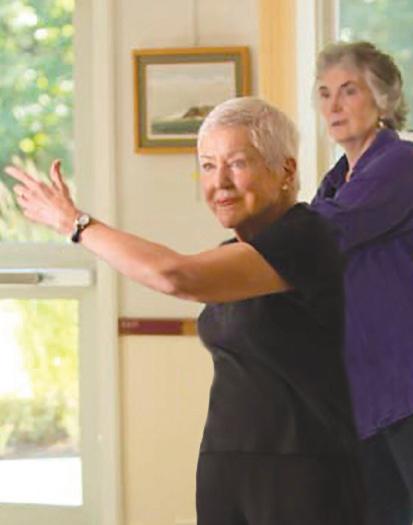
for a visit and see why residents say Thornton Oaks has “that special something.”
found the perfect home at Thornton Oaks.
 BY
BY

ere’s a true feat of optimism: Launch a magazine column that’s devoted to the best of seasonal New England eating … in the depths of winter.
The fields may be resting under a layer of frost, but there’s more local fare on offer than just turnips and greenhouse greens. At this time of year, I find happiness in the abundance of shellfish that’s being pulled from New England waters (one worrying exception: the ongoing closure of the Atlantic shrimp fishery, projected through at least next year). Oysters, mussels, scallops—all are abundant now, and all are delicious.
The following recipe is an old favorite that’s ripe for rediscovery. It came to us via Rob McClennan, the longtime owner of Hatch’s Fish Market in Wellfleet, Massachusetts, a seasonal shop that is beloved for its pristine seafood and some of the best smoked fish in New England.
Rob bought the business from his boss and mentor Cliff Hatch (and later sold the business to his own protégé, Adrian Kmiec), and this recipe distills how Cliff liked to eat his scallops. You cook up some pasta, quickly brown the scallops, and make a simple sauté of onion, garlic, green bell peppers (remember those?), and white wine. The savory veggies make the scallops taste sweeter, and if you’ve forgotten the point of humble green peppers in a world of shishitos and mini-sweets, this will remind you.
When summer produce feels like a distant memory, it’s time to relish the many gifts from the sea.
AMY TRAVERSOAmy Traverso is Yankee’s senior food editor and cohost of our TV show, Weekends with Yankee (weekendswithyankee.com).


¾ pound angel hair pasta
1¾ pounds sea scallops
3 tablespoons olive oil



3 tablespoons salted butter
5 garlic cloves, crushed
1 small red onion, minced
1 small green bell pepper, finely chopped
½ teaspoon table salt, plus extra for pasta water


¼ teaspoon freshly ground black pepper


¼ teaspoon red chili flakes
¼ cup dry white wine













2 tablespoons fresh chopped herbs (e.g., basil, parsley, and dill)
Lemon wedges
In a large pot with salted boiling water, cook the pasta according to package directions. Drain, reserving ¹⁄3 cup water, and set aside.
If using very thick scallops, slice each in half crosswise. Heat olive oil and butter in a large sauté pan over medium heat. Stir in garlic, red onion, green pepper, salt, black pepper, and chili flakes; cook until onion is translucent, about 6 minutes.
Using a slotted spoon, remove onion mixture from pan, leaving some of the butter and olive oil behind.

Turn heat up to medium-high and lay scallops in the pan in one layer with space between them (you may need to do two batches). Let scallops sear and caramelize, 4 to 6 minutes. They should have a nice brown crust when done. Using tongs, turn each scallop and cook 2 to 4 minutes more, depending on thickness. When done, scallops should be opaque throughout (cut to check). Remove from pan.
Pour wine into pan; while it sizzles, use a wooden spoon to scrape the browned bits from the bottom of the pan. Stir in fresh herbs and simmer just until wilted. Return scallops and onion mixture to pan and add pasta and reserved water; toss to combine. Garnish with lemon wedges and serve. Yields 4 to 6 servings.





 BY KATY KELLEHER • PHOTOGRAPHS BY GRETA RYBUS
BY KATY KELLEHER • PHOTOGRAPHS BY GRETA RYBUS

LEFT : Highlights from a weekend in Camden and its neighboring towns include the Maine Center for Contemporary Art, Camden Hills State Park, the Lincolnville General Store, the Camden Public Library, and Franny’s Bistro (shown: smoked shrimp spring rolls and the restaurant interior).
THIS PAGE : Tending to winter chores in Camden’s working harbor.



In Camden, they don outlandish costumes and compete in the U.S. Toboggan Championships at the Camden Snow Bowl, and they watch fire dancers twirl in the outdoor amphitheater as part of their weeklong Winterfest. They take polar plunges into the harbor to raise money for local charities, drink craft cocktails in chic bars, and snowshoe up mountains. Camden’s dedicated year-round community makes this town an ideal hub for a weekend of exploring the region’s hip museums and deserted beaches.

From Camden, drive a few miles north to find yourself at the edge of the sea, watching waves deposit shells and whole sand dollars on Lincolnville Beach. Drive eight miles south to Rockland, and you’ll be immersed in one of Maine’s most vibrant artistic communities. And though all the charms of Maine are still intact during the colder months (some would even say they’re amplified), inns, hotels, and B&Bs tend to cut rates now to entice visitors. For instance, a room at Camden’s Hawthorne Inn that tops $300 in summer is yours in January for $119. With deals like that, you may discover what many Mainers have long known: the subtle majesty of a coastal winter day.
FRIDAY
Check into the local castle.
Located in the historic High Street section of Camden, the Norumbega Inn , built in the late 19th century in the style of a European castle, has been transformed into a lavishly decorated 11-room bedand-breakfast, with pretty chintz curtains and jacquard upholstery and so much carved cherry wood furniture. While the Library Suite provides the most indulgent overnight experience, no matter which room you book you’ll have access to the sweet little fox-themed reading nook on the first-floor landing. Bring a Gothic novel, crack open a bottle of wine, and settle in for the evening.
Then, head to Franny’s.
For years Francine Bistro was a favorite on the Camden dining scene, so its closure in 2018 caused a lot of heartbreak. But soon after, Franny’s Bistro (named to
If you know Midcoast Maine only in summer, a winter surprise awaits.
 opposite : A trio of “superheroes” heads off to Camden Snow Bowl and the U.S. National Toboggan Championships, where creative attire is encouraged. this page : A peek inside the 19th-century Norumbega Inn.
opposite : A trio of “superheroes” heads off to Camden Snow Bowl and the U.S. National Toboggan Championships, where creative attire is encouraged. this page : A peek inside the 19th-century Norumbega Inn.
honor its predecessor) opened in the same white clapboard building, decorated with the same twinkling lights and garlands of wintery greenery. The food is homey and cheerful: earthenware dishes filled with house-made tagliatelle covered in short-rib ragu, and roast young chicken with root vegetables and addictively creamy garlic herb sauce.
Fuel up for the day ahead.
A bonus for staying at the Norumbega is the three-course breakfast cooked up by chef Phil Crispo, a former Culinary Institute of America instructor— it’s a feast fit for a castle. For those sleeping elsewhere, a hearty pile of diner pancakes can be similarly fortifying, and Mariner’s Restaurant has the best in town.
See the sights in Rockland. Just south of Camden is Rockland, an artsy little city built for strolling and window-shopping. Pop into Trillium Soaps , where you can get handmade botanical-infused soaps in scents like rosemary-lime and Maine seaweed, and browse the shelves at Hello Hello Books . For one-of-a-kind clothing, check out Daughters , where owner Ariel Birke stocks a mix of vintage finds and apparel by independent designers; the boutique’s overall vibe is hip yet welcoming, much like Rockland itself.
Before or after shopping, check out one (or both) of Rockland’s acclaimed art museums. At the Center for Maine Contemporary Art , whose bold exhibitions range from climate change to immigration, you’ll get a feel for what Maine artists are thinking about now.
The Farnsworth Art Museum , meanwhile, offers a deep dive into Maine’s artistic past as it showcases works by such icons as the Wyeth family, Winslow Homer, and Robert Indiana.
Go multicultural for lunch. While in Rockland, don’t miss a chance to sample the eclectic, multicultural cuisine of Maine chef Kerry Altiero at Café Miranda . While many local fine-dining spots are open only for dinner, Café Miranda serves the midday crowd, too, with options



you are invited to Costa Rica on a fully guided tour with Caravan. Includes all hotels, all meals, and all activities. Pura Vida!
Day 1 San José, Costa Rica
Welcome to the “rich coast,” friendly land of democracy and natural beauty. Caravan provides airport transfers.
Day 2 Sarchi, Coffee Plantation
Visit the artisan village of Sarchi. Shop for colorful handicrafts and see traditional oxcart painting, considered the national symbol of Costa Rica. Then, tour a coffee plantation. Visit a butterfly garden.
Day 3 Wildlife Rescue, Fortuna
Visit a wildlife rescue center where injured animals are rehabilitated for release back into the wild.
Continue to Fortuna in the San Carlos Valley for a two night stay
Day 4 Caño Negro, Hot Springs
Cruise on the Rio Frio, gateway to the Caño Negro wildlife refuge. Watch for water-walking lizards, caimans, and howler monkeys. Then, soak in volcanic hot springs.
Day 5 Hanging Bridges
Hike on the Hanging Bridges, view majestic Arenal Volcano, and take a scenic drive around Lake Arenal. Continue to the Pacific Coast for a relaxing two night stay.
Day 6 Turtle Park, Guanacaste
Visit Leatherback Turtle National Park. These marine reptiles are the largest in the world, weighing over 1,500 pounds. Free time at the J. W. Marriott Resort and Spa.
Day 7 Cruise, Manuel Antonio Cruise on the Tarcoles River. Enjoy bird watching and crocodile spotting. Continue to your hotel at the Manuel Antonio Park entrance.

Day 8 Manuel Antonio
Visit Manuel Antonio National Park, a natural habitat for the three-toed sloth and capuchin monkey. Hike through the rainforest and along beach coves. Look for toucans and parrots. Farewell dinner tonight.




Day 9 San José
Tour ends after breakfast. Caravan provides airport transfers. Thanks for vacationing with Caravan!
Full Itinerary at
Dear Vacation Traveler,
Welcome to a great vacation at an affordable price. Our vacation packages are polished, complete and fun! These quality tours feature complete sightseeing, professional tour directors, and great itineraries. Discover for yourself why smart shoppers and experienced travelers choose Caravan.
About Caravan Tours

Caravan began selling fully guided tours in 1952. We have been under the same family management and ownership ever since. Caravan’s strong buying power gives you great vacations at prices much lower than you can find anywhere.
Choose
Costa Rica 9 days $1295

Guatemala w/ Tikal 10 days $1395
Panama & Canal 8 days $1295
Per Person U.S. Dollars, + tax, fees, airfare
FREE 24 Page Brochure
It’s Caravan’s Costa Rica! 2020 is Your Year to Go. Call Now for Choice Dates.including house-made empanadas (stuffed with pulled pork, potato, and black beans) and lobster mac and cheese (with roasted greens and “lotsa cheese”).
Take a hike.
Back in Camden, take a trip just outside town to visit Camden Hills State Park , where you can walk off lunch and enjoy one of the most famous views in Maine from the summit of Mount Battie. (If the snow is deep, you may want to consider renting snowshoes from Maine Sport Outfitters ) Among the hikes to choose from are trails that lead to multiple peaks and end at the frozen shores of Lake Megunticook, as well as the half-mile trek up Mount Battie. All paths will let you gaze upon the islands of Penobscot Bay, the sleep -
ing ships in Camden Harbor, and, if the day is clear enough, the distant blue swell of Mount Washington to the west.
Explore the great indoors. Open daily year-round, the Camden Public Library is a glorious feat of neoclassical architecture. Decked in nautical paintings and scattered with plush armchairs, the upper-level reading room feels like it exists outside time; you could spend hours just reading in front of the fireplace. Still in the mood for shopping? Stop by Once a Tree to discover some hand-carved treasures, or pick up a new tote at Sea Bags , which makes its wares from recycled sails.
Darkness comes early in winter, so be ready to welcome it with a cocktail before dinner. At chic watering hole
40Paper , the libations are creative enough to keep you guessing What’s in this? but not so wild as to shock the palate. Try the Mortal Eyes, a mix of Dutch gin, applejack, allspice, lemon, and chocolate bitters whose claim to fame is a mention on public radio’s “The Dinner Party Download.”
Go Long for dinner.
Intimate and down to earth, Long Grain is always packed, even in the dead of winter, so be sure to make a reservation if you want to try its delicious interpretations of Thai


and Vietnamese street food and Indonesian and Japanese staples. Every option—from the steamed mussels in coconut-lemongrass broth to the stir-fried kimchi with pork belly and rice cakes—is fresh, perfectly spiced, and masterfully prepared.
Ski by the sea.
Camden Snow Bowl is the only ski mountain on the East Coast with ocean views. It’s small, but don’t let that put you off, because this hidden gem has 26 trails and short lines. And even if you’re not into Alpine skiing, it’s worth a visit: You can hang out in a lodge whose retro charm channels the laid-back vibes of the ’60s, or rent snowshoes and explore the fragrant pine woods and lovely views of nearby Ragged Mountain Preserve.


Plan a beach outing (seriously).
Lincolnville is a bit sleepier than its coastal neighbors, but the beauty of Lincolnville Beach alone makes it a visit. You may have the beach to yourself—and if you’re lucky, and if the day is really cold, you may even get to witness frozen waves the texture and color of mercury rolling slowly toward the shore. It’s a rare natural phenomenon and a mesmerizing reminder of nature’s power.
Afterward, warm up with a cup of locally roasted coffee at Green Tree Coffee & Tea , where you can also do some last-minute souvenir hunting. Raw unfiltered Maine honey from Swan’s is a tempting treat (its creamy consistency makes it ideal for spreading on toast), but there’s also plenty of bagged coffee, boxes of tea, and other locally made goodies.
For a final bite before hitting the road, stop in at the old-timey Lincolnville General Store , which sells not only night crawlers and fishing gear but also fresh bread and craft cider and beer. Sidle up to the counter in the back to order a wood-fired pizza. Resist the urge to get it to go and rush home. Take your time. After all, even Route 1, which in summer is socked in with travelers, will be all yours.
To see more photos of our winter visit to Camden, Maine, go to newengland.com/ weekend-away-camden.

rite your love story’s next scene in a setting as fresh as just-fallen snow at these new or recently reimagined properties, where a dash of the unexpected turns a weekend away into a romantic odyssey.
If supercomputing cellphones have robbed you and your partner of downtime and a sense of wonder, count on Getaway Boston to restore both. The first in a network of properties that grew out of a Harvard Business School project, this getaway is about 90 minutes outside the city, but you won’t know exactly how to get here until an email is sent to you on the day—which is also when you find out which of the 42 well-equipped, wide-windowed, dogfriendly cabins will be your nest of warmth in the winter woods. A cellphone lockbox greets new arrivals, and you can kick off the weekend with a little wager over who’ll be first to crack it open. getaway.house/boston
Once an out-of-the-spotlight refuge for celebrities like Liz Taylor and Lauren Bacall, the inn and tavern known as Graybarns has been gloriously reborn after years standing vacant. Don’t be misled by the pitchforks-turned-wallart and reclaimed barnwood that give the inn and its six adults-only king suites a rustic look. Custom-built beds, exquisite textiles, complimentary bars, and in-room spa experiences
make these private retreats as elevated as any you’ll find an hour from the heart of Manhattan. Sip coffee at the Mercantile, watch icy mist rise from the mill falls, stroll to Silvermine Arts Center’s galleries, dine fireside, linger over brunch cocktails. You’ll want to spend all of your precious “together time” right here, in this setting that has long inspired artists. 203-489-9000; graybarns.com
Even with sugar-powdered Lenox Mountain in view, and 20 acres of fields and centuries-old forest to explore (bring snowshoes), don’t be surprised if you’re content sequestering yourselves within the magnificent walls of this 1792 mansion with its three snap-crackling fires. Scott Edward Cole is an artist and former restaurateur; his partner, Frank Muytjens, is the former head of menswear design at J. Crew. And their new home with an old soul is a shared design lab, where five comfy guest rooms are dressed in a mas culine earth-and-water palette and filled with an era-spanning mix of antiques, books, art, and fine fur nishings. Candlelit hearthside break fasts are co-creations, too: Expect hearty granola, fresh-baked pastries, frittatas, smoked salmon, quiches, and seasonal fruit. For the ultimate in privacy, book the Carriage House Cottage, where Leonard Bernstein took up summer residence in his early Tanglewood years. 413-698-8100; theinnatkenmorehall.com
Crave the energy of city life without the hassle of navigating an unknown urban environment? The Assembly Row development, fashioned out of a defunct 52-acre Ford assembly plant, is a must-discover destination. An easy drive or eightminute T ride from Boston, this

Marriott Autograph Collection hotel is a car geek’s dream with industrialchic details and a pink 1959 Edsel parked out front (ask for a ride in this beauty, whether you’re checking out the new Encore Boston Harbor casino or going to a TD Garden event). “Row-mance” packages add perks like champagne upon arrival. Grab frothy coffees at Caffè Nero and walk the mile-long river path, claim a private cabana by the hotel’s indoor pool, take an on-demand fitness class, and raid the complimentary guest pantry (but save room for dinner, since you’re steps away from two dozen restaurants). 617-6281300; therowhotelatassemblyrow.com
Prosecco in hand, you’ll be drawn to sumptuous leather sofas by the light of
a toasty fire in this inn’s ceiling-high fieldstone fireplace—which is practically the only feature that escaped transformation when it changed hands last year. Like an improv master creating spontaneous genius from random input, designer-to-the-stars Randolph Duke has put together vibrant, conversation-igniting interiors using furnishings from around the world as well as elements inspired by the farm estate’s coastal location and its history as a music colony. You’ll feel reconnected with your partner as you watch the snow flurries through large windows in the conservatory bar, the firelit restaurant, the top-floor spa, or, of course, your own cozy guest room. Westerly’s shops, Mystic’s attractions, and invigorating walks on the inn’s private beach are all worthy diversions. 401-322-8883; shelterharborinnri.com
 Players from Boston’s Puckaneers and Belmont, New Hampshire’s Mainstay Solutions chase the puck behind the nets at the 2013 New England Pond Hockey Classic on Lake Winnipesaukee.
Players from Boston’s Puckaneers and Belmont, New Hampshire’s Mainstay Solutions chase the puck behind the nets at the 2013 New England Pond Hockey Classic on Lake Winnipesaukee.
MASSACHUSETTS
BAY STATE WINTER GAMES
JANUARY–EARLY MARCH
Ranging in age from 5 to 70-plus, athletes from across New England will descend on the Berkshires for this annual sports spectacular, which marks its 35th anniversary in 2020 and hosts competitions in such winter staples as curling, figure skating, and masters ice hockey. Venues and dates vary by sport; see website for details. Various Berkshire locations, MA. baystategames.org

RHODE ISLAND
NEWPORT POLAR BEAR PLUNGE
JAN. 1
Take a cold dip for charity (or come out to lend moral support) as the Newport Polar Bears dive into the frigid Atlantic off Easton’s Beach. Proceeds from the swim and the afterswim party benefit A Wish Come True. Newport, RI. 401-849-8048; discovernewport.org
NEW HAMPSHIRE
NEW ENGLAND
POND HOCKEY CLASSIC
JAN. 31–FEB. 2
Come celebrate the sport of hockey in perhaps its purest form, as pond hockey players from more than 40 states and six Canadian provinces travel to Lake Winnipesaukee to face off in a fourby-four round-robin tournament. Fans can take their pick of 500-plus games and enjoy an on-ice beer garden and evenings of live music, too. Meredith, NH. pondhockeyclassic.com
FEB. 7–9
Once upon a time kids grew up impatient for winter, because they could climb their local ski jump and take off, soaring like birds. For a taste of this era, head to Satre Hill, where ski jumping dates back to 1926, for a weekend that includes the Eastern U.S. Ski Jumping Championships. Salisbury, CT. 860-850-0080; jumpfest.org
MAINE
FEB. 7–9
Parents have been telling their progeny for ages that they’re the best sledders in the world; now the folks at the Camden Snow Bowl are challenging them to prove it. Daredevils of all ages will take to the historic Jack Williams Toboggan Chute to compete for the fastest time (and to sport zany and creative costumes). Camden, ME. 207-236-3438; camdensnowbowl.com
FEB. 23
One of the oldest ski races in North America provides its participants— who range from National Ski Team members to recreational skiers—with the ultimate test of their abilities. The race begins atop Mount Mansfield and covers approximately 20 kilometers of challenging terrain before concluding at the Trapp Family Lodge. (As of 2019, the Stowe Derby also includes a fat-bike race over local trails). Stowe, VT. mmsc-mmwa.org
For more best bets around New England, see p. 112


Yankee recently teamed up with the Massachusetts Office of Travel and Tourism at the 25th annual Franklin County Cider Days. With events in orchards and venues all over the county, this festival is perfect for cider aficionados, apple lovers, or those just looking to soak up every last bit of autumn in New England. Amy Traverso, Yankee senior food editor and cohost of Weekends with Yankee, shared some of her favorite apple hacks, while visitors explored bucolic orchards, tasted a variety of ciders, and celebrated one of fall’s final weekends in a perfectly seasonal way.









It took more than a dozen years for Vermont’s Anaïs MItchell to bring Hadestown to Tony-winning fruition. “I can’t tell you how many times I thought, I should get a different job,” she says of composing her “folk opera.”
An improbable story of a Broadway hit with deep Vermont roots.
 BY MEL ALLEN
BY MEL ALLEN
photographs by corey hendrickson

Origin stories can begin in different places, even at different times. It depends on who is doing the telling. This origin story begins with a farm, and a farmer’s daughter. She was born in late March, and people say she arrived with the lambs. When the farmer came home after his wife gave birth, in the barn he found a newborn lamb, the first of the year. He gave it the name Anaïs, and vowed the lamb would spend its life feeding on sweet grass.


To reach Treleven Farm in New Haven, Vermont, you travel on a two-lane country road that winds past fields rimmed with wildflowers and dairy farms with sturdy barns and silos. It’s mid-July, and hay bales wrapped tight like giant white cocoons lie waiting in the sun. A turn onto Mitchell Drive brings you to a long gravel road and ultimately to a trim
cottage, where Anaïs Mitchell sits at a shaded picnic table on the farm where she grew up, eight miles north of Middlebury.

She is 38 years old. She wears a sleeveless black top and black jeans ripped at the knees. Her eyes are blue and direct, her hair blond. Decorating her arms and shoulder are tattoos that honor the three most important things in her life: her husband, Noah; her daughter, Ramona; and her musical, Hadestown. An hour earlier she was sitting in the heat of her Dodge Caravan listening to the master recordings of what will become the Hadestown Broadway cast album. She knows perfection is never possible—she talks about scratching at a lyric until exhausted—but she has never stopped seeking it, and here on the farm the best sound system is her car’s speakers. “Every few minutes I turned on the air conditioner,” she tells me.
When Hadestown opened in April 2019, Anaïs Mitchell became only the fourth woman in Broadway history to hold sole credit for lyrics, music, and book (the story). She had poured a third of her life into this project, beginning when she wrote the first songs in her early 20s, and when it won the Tony for best musical—the crown jewel of Broadway—she said it had been worth the struggle. Now, after the sleepless nights and grueling months of fine-tuning the show, and after the endless public appearances, and after the excitement of awards night, she has come here from her home in Brooklyn, returning to the calm of her family’s homestead for a few weeks, bringing 5-year-old Ramona.




The farm is 130 acres of forest and sweeping pastures where sheep graze looking out to tree-lined cliffs, and within its expanse sit three houses, a studio, barns, work sheds, and a pondside gazebo—all built using family brains, muscle, and skill. Her parents live here, as does her brother with his wife and young daughter. The house where Anaïs’s grandparents

“It’s been a really, really long road with this show, so I share it with so many people ... and everyone from the early days in Vermont, where the show began....”
— ANAÏS MITCHELL, ACCEPTING THE TONY AWARD FOR BEST ORIGINAL SCORE— ONE OF EIGHT TONYS THAT HER MUSICAL, HADESTOWN , RECEIVED—JUNE 9, 2019, AT RADIO CITY MUSIC HALL
lived and died now belongs to Anaïs and her husband; a nature-themed preschool uses it for much of the year, and you can find small teepees tucked away here and there, and rope swings that dangle from apple trees.
She is happy to be back. In Vermont, she says, she sleeps better and eats better and feels the embrace of her family roots. But in a few days she will return to her musical roots, performing at the Newport Folk Festival before hitting the road in the West and the Midwest, then Ireland and Scotland, and in autumn returning to the same intimate New England venues where she began long ago, in towns like Bethlehem, New Hampshire, and Putney, Vermont.
I ask what it will feel like to be on the same small-town stages where she began after she’s seen her name in lights on Broadway, after being featured in Rolling Stone and Vogue and The New York Times and so many others. “I don’t know,” she says. “All this stuff is so new.” She smiles easily and often, and those who have shared a stage or worked with her remark on her utter lack of artifice. “It’s been interesting being back in Vermont, because I’ve run into a lot of people from my childhood—people I went to high school with, and their parents—and there’s always this moment where it’s like, The Tonys! And then I’ve been very relieved when I’ve had that moment with them, and the next time we see each other we just talk about the gazpacho I’m going to make. And I get it. I’d feel that way about someone, too.
But it doesn’t change anything internally for me.”
The success of Hadestown thrust Anaïs Mitchell into America’s consciousness as either a comet that suddenly blazed across the pop culture sky (if you did not know about her) or
Creativity is as much a part of the Mitchell farmstead as the crops: Attached to Don and Cheryl’s house, center, is an annex that’s open to artists and writers for free monthlong residencies.

the talented singer-songwriter who had finally found the acclaim she deserved (if you did). The musical, with its haunting songs like “Wait for Me,” “Why We Build the Wall,” and “All I’ve Ever Known,” reimagines the Greek myth of Orpheus and Eurydice for new generations the way Hamilton did with the story of the founding fathers. Charles McNulty of The Los Angeles Times called Hadestown “one of the most exquisite works of musical storytelling I’ve seen in my more than 25 years as a theater critic.” In New York, people camp out on the sidewalk hoping to be first in line for the precious few available tickets. One young woman told a reporter she was seeing the show for the 13th time.
I ask Anaïs about a period in her life when all this would have seemed as improbable as living on the moon. It was 2004, and she was 23, an aspiring singersongwriter who had just released her first album, Hymns for the Exiled, recorded in a studio built into an old Vermont gristmill Having recently graduated from
Middlebury College, she was performing anywhere she could find a stage—folk cafés, music festivals, churches, schools—and was building a fan base both with the intricate, often heartbreaking stories she wove through her songs and with a shimmering voice that made you pay attention to the nimbleness of her lyrics.
She was also in love with Noah Hahn, whom she had met in a college art class, who was now making his way as an organic farmer and musician outside Montpelier. While she was on the road, they were nearly always apart, and the moment that she tells me about happened one day when she was driving “somewhere between Virginia and home.”
“I was sort of asking him to wait for me,” she says. “And I remember a lot of really psychically open moments driving alone, just listening to music. We had no phones back then. And I would see something beautiful and not be able to tell someone about it.” And into that solitude and uncertainty and loneliness, the words came to her: Wait for me, I’m coming / In my garters and pearls / With what melody did you barter me / From the wicked underworld.
The words, she realized, reminded her of the story of Orpheus and Eurydice. Once, her parents had lived on the Greek island of Hydra, and they read the ancient myths aloud to Anaïs and her brother, Ethan. The stories became as familiar to her as the songs of Bob Dylan and Leonard Cohen and Joni Mitchell that were always playing in their house. Anaïs was drawn to the tragic legend of Orpheus, who believed the beauty of his songs could bring his wife, Eurydice, back from the underworld. The music softened the heart of Hades, the god of the underworld, and he sent the lovers back to the world of the living but with one condition: They must make the journey back while walking apart in darkness and silence, and if Orpheus glanced back, Eurydice would be gone forever. He did, she was, and their story would endure for thousands of years, a tale about losing faith when it was needed most.
And then, this young Vermont songwriter had a different inspiration. “I got excited about this idea of telling a long-form story with music,” Anaïs says, “and I saw the underworld as a corporate bureaucracy, and I thought about the political implication of that world.” And the more she followed the thread, the more she saw Orpheus as not just a flawed mortal who lost everything but also a man of “heartbreaking optimism” who believed in the mystical power of music. “I’ve felt that feeling,” she says.
Anaïs had always followed her own path and heart, so she knew what she wanted: to write what she would call a “folk opera.” What she didn’t know was that, from the first performance in December 2006 with a hastily gathered group of friends at the Old Labor Hall in Barre to opening night at New York’s Walter Kerr Theater, this work would consume the next 13 years of her life—and become one of the most improbable success stories in Broadway history.
“Hadestown was refined in many places, but it started here.” —DON MITCHELL
Here is a second origin story. It also begins a long time ago. It is the one told by Anaïs’s father, Don, and her mother, Cheryl.
I meet Don in the passive solar home he designed, farther up the long drive from Anaïs’s cottage. He is dressed in a gray T-shirt and jeans. It has been a frustrating month, he says, because record rains have made haying so difficult. Inside, a long table in the living room is covered with family snapshots and article clippings that have been laid out by Cheryl—who, Don tells me, is currently down at the pond, giving a farewell picnic for a migrant laborer to whom she has been teaching English. The young man is returning to his home south of the border, and this is his first day off in seven months of working at a local dairy farm. One of Cheryl’s many causes, Don says, is addressing the plight of the hundreds of migrant workers on Addison County farms.
In one photo on the table, a 5-year-old Anaïs is being hoisted over a railing onto the small stage of what Don calls “a Vermont winter-solstice-hippie-pagan-goddess pageant of poetry and dance that’s been going on for decades.” Alongside the photos is a poster from the early days of Hadestown , when Anaïs and a cast of scrappy Vermont performers were using their talent and wits to hold things together.
As we go through the photos, there is a moment when Don reflects on the journey’s end. “Opening night on Broadway was an overwhelming experience,” he says. “You have a little baby and you don’t know what’s going to happen to them, and all of a sudden they’ve created a work of art that’s going to endure and shape the world for the better, and there she is sitting next to you.
“How does it feel? In a way I’m not surprised,” he continues. “She’s always dreamed big and believed she could do anything. But if there’s one legacy from our lives to our kids’ lives, it’s in coming here and saying we’re going to be homesteaders and sheep farmers and we’re going to build houses and barns. We laid down a marker that you can do anything that you set your mind to. And she has believed in [Hadestown] for a long, long time.”
He pauses. “But still, what she has done is incredible. She takes you on a journey and it breaks you and then restores you. We celebrate Orpheus because he tried against impossible odds. This is what Anaïs has brought new. In 50 years when people talk about the Orpheus myth, they will be referring to Hadestown.”
Don says that when he sat in the audience and saw people in tears as Orpheus sang “Wait for Me,” he thought of something from long ago. “Nobody else can tell you this,”
he says, leaning forward, “but when the kids would come home from school, Ethan would tell Anaïs he was going to the woods and he’d go out the door, and Anaïs would run out after him, yelling, ‘Wait for me, I’m coming! I’m coming too!’”
Sitting on the sofa, Don spins a story that many backto-the-land pilgrims shared during the turbulent Vietnam War era. He and Cheryl had been together since their Swarthmore days, and “in 1967, the ‘summer of love,’ we hitchhiked all around California,” he recalls. The next year they moved to Boston, and Don wrote a novel based on their adventures, finishing it just as Easy Rider became a hit. Hollywood saw another gold mine in Don’s novel. “The film rights sold for an astonishing amount of money. I was to write the screenplay—I was 22—for what would become Thumb Tripping,” a 1972 movie that featured a menacing Bruce Dern.
Despite this success, Don and Cheryl knew they were not meant to live in Hollywood. In the Whole Earth Catalog, they had read how Vermont beckoned young people like them. “It said that even though the state is filled with dairy farmers who are Republicans, their bedrock values are libertarian, so they will accept us,” Don says. “We came [to Addison County] and we saw this place. We had to say yes. The only building was the barn. We had no idea what we were doing, or what it would mean to become farmers.

I had never really built anything yet.” They called the farm Treleven, after an ancestral Cornish surname. “It means ‘homestead on the level land,’” he says.
In time they remade the barn into a first home and built up a flock of 100 sheep. (They are now down to 30 ewes. “I’m just getting more tired now,” he admits.) Don wrote more books, which did not sell, but he also wrote a magazine column about rural life, and that gained him a teaching position at Middlebury College, where the line between farmer and teacher blurred. Each spring, environmental study majors from Middlebury would sign up to sleep in the barn loft he had built overlooking the flock, and they would help with the births. “We had more than 1,000 students over the years,” he recalls. In Don’s columns, readers followed the joys and travails of rural life, including raising creative, inventive children. There was no television to tempt them indoors, and when they were in the house they made do with books and music and their imaginations. Early each morning, Anaïs would see her father writing at his desk, worrying over every word as if it were a fragile thing. Years later, when the media came calling, Anaïs would say that witnessing her father crafting words so carefully and having books and music living in the
same room “led me to think of songwriting as a kind of literature, a noble poetic enterprise.”
(Later, Cheryl will add another layer: “At bedtime we had what we called ‘tuck-ins’—you talk about what was the best thing about your day, what was the worst thing. What do you hope for tomorrow? What were you proudest about? So they were always encouraged to think about what they did well and what made them happy.” She is quiet for a moment. “Some of my sweetest moments were when I’d be working in the kitchen and she’d be in here composing a song. So many of her songs resonate with what’s happening in the world and why we need compassion for the world so we can make change.”)
Don reaches further back. He tells of his mother and his grandmother, who both trained for the opera. They wanted him to follow a music path. “I turned away from it,” he says. “I felt we were being raised like trained animals who would get onstage and sing a song in exchange for affection. It was like being a von Trapp kid, and I just said, ‘No, this is not how I want to gain affection and respect.’ So the music genes are there. Anaïs didn’t know all this. But she had this aptitude, and we said, ‘If it’s something you want to play with, we’ll support that. And if
not, that’s OK too,’” he says.
“I told people she’s going to make it, and they were skeptical. I knew she had what it takes from the first time I heard her in concert at this little bookstore in Bristol when she was still in high school, because she was writing songs that would stick in my head. They’d become earworms, and I’d wake in the night and couldn’t get back to sleep. But I never foresaw the ambition of Hadestown.”
More than a decade before the Broadway incarnation of Hadestown ( inset), Anaïs Mitchell was staging the musical with a homegrown Vermont troupe. Shown in this 2007 cast photograph are Hadestown ’s original designer-director Ben Matchstick, back row, standing, and Anaïs, front row,

Don gives me a book, a collection of his columns called Growing UpCountry: Raising a Family & Flock in a Rural Place. Later that night, I read it. He tells about how Anaïs and Ethan created their own kingdom in the deep meadows and woods beyond his sight. They drew a map to secret places they named Great Swamp, Sacred Spring, Bald Rock, Bowl of Stone, and Fairy Cliff. Don writes, “I feel the constant presence of a shadow world layered over what I consider to be my real one, steeping the entire farm in something like mythology.”

There is one more origin story to tell. This one begins in 2006 in Montpelier’s Langdon Street Café; now shuttered, the place was then a petri dish of homegrown talent—music, puppetry, street theater. Anaïs was continuing to tour while weaving together songs of Orpheus and Eurydice and Hades and Persephone. She was also working on a new album, often not knowing whether a song belonged to her “folk opera” or was “for me.”
As we sit at the picnic bench beside her cottage, Anaïs sketches the scene at Langdon Street. “Noah was one of the founding members of this collaborative music venue and bar,” she says. “It was incredible. All the romantic notions of a café. I would play there and I’d bring songwriter friends to play there.” And every month, she says, “an amazingly inventive theater artist” named Ben Matchstick would organize a sort of community improv theater called Mystery Fun Night. “He’d have a theme and we’d all come in costume. He could make something out of nothing. He just makes things happen.”
Anaïs and Ben began to work together on envisioning the strange, foreboding world where Eurydice and Orpheus found themselves. “I had this image early on—which is pretty much gone from the show now—of Persephone in the underworld with this great wall, but there is a crack in the wall and she looks through this viewfinder machine, the kind you see at the seashore, and with it she can see through the crack in the wall and she can see the stars in the night sky,” Anaïs says. “And that felt so rich to me.” So at first the title of her project was Crack in the Wall. Then one day she said the word “Hadestown”—and that, as Ben has said, opened “a flood of images.”
The underworld took shape. Industrial, Depressionera grim, gloom as suffocating as coal dust, a land ruled by Hades, who would ravage nature and exploit workers for profit. Anaïs was responding to the war in Iraq and how it was costing thousands of lives, and she also was thinking of people who would be displaced by climate change and “come knocking on the door.” In 2006, she wrote “Why We Build the Wall,” which gained more traction as the years passed. To arrange the songs she recruited Michael Chorney, a local musician whose band she had followed since her high school days and who ended up producing her first albums. (Chorney would go on to earn a Tony, shared with Todd Sickafoose, for orchestrating Hadestown . From the
musical’s start, he’s been onstage playing guitar, including in the Broadway show.)
When Hadestown debuted at the Old Labor Hall in Barre, there were maybe 60 people in the audience, and Chorney’s band played. “We were really on a shoestring,” Anaïs says. “I was Eurydice, and I’m [onstage] with a phone like a landline or pay phone. It rings. I pick it up and Hades is singing into my ear and I’m turning.” As she speaks, Anaïs slowly twirls around. “I was all tangled up in the phone wire, which in the myth was a snake. Then the Fates come with scissors, and they cut the phone line, and that was how we showed the death of Eurydice. All kinds of cool stuff like that.” Everyone seemed to agree it was unlike anything they had seen. “People told us, ‘Great songs, but what the hell is going on?’”

A Vermont arts organization gave Anaïs $5,000, which went toward a rehearsal space, sets, costumes, and pocket money for “our band of thieves,” as she called the troupe. Someone donated an old school bus that they used while performing around New England for a few weeks in 2007. It was a heady time. That same year, Ani diFranco—an inspiration for Anaïs since age 13, when she learned guitar by playing diFranco’s songs—heard Anaïs perform and signed the young Vermonter to her own Righteous Babe label, which released Anaïs’s The Brightness.
Meanwhile, songs for Hadestown kept coming. Anaïs would tell people that some came hard, and others “fell out of the sky.” “All I’ve Ever Known” woke her up in bed one night. She wrote “Hey Little Songbird” on her honeymoon with Noah in Italy. In 2010 a concept album titled Hadestown came out on Righteous Babe. Anaïs sang as Eurydice and tapped many of her musical folk heroes for other parts: Justin Vernon of Bon Iver, Greg Brown, Ben Knox Miller, the Hayden Triplets, and diFranco herself, who sang the role of Persephone. “We had this Vermont incubation thing and then it was like, ‘How are we going
(Continued on p. 116)
“Vermonters will recognize the Broadway production of Hadestown in the same way they might know an old friend they haven’t seen for years. The resemblance is there, but so much on the surface has changed.”
BURLINGTON FREE PRESS , APRIL 16, 2019Reeve Carney and Eva Noblezada play the star-crossed lovers Orpheus and Eurydice in Hadestown on Broadway. The show is set to begin a national tour this year.




Page 82









They found two huge slabs of chestnut in the walls, valuable wood that was apparently hidden from the king’s tax men before the War of Independence. They turned each slab into a table, maintaining the natural edge so that guests had to fit their chairs between its swirls and curves. My grandmother gave me the late-night job of setting the tables for breakfast, and I’d run my hand along the edges with the thought of that wood hidden away so long as the house itself passed through time, rooted in place.
In the morning I was a fly on the wall, ears perked for conversation from the guests: Tanglewood musicians in the summer, skiers enjoying snowy weekends in the winter. My family was surrounded by visitors, and although many locals would roll their eyes at tourists, I wanted so much to be a visitor myself. Travelers arrive with a sense of curiosity that we can lose when we get too comfortable and familiar with a place. Even then, I looked to the guests to help me see with new eyes where I was from.
Years later, I came back home to the Berkshires with a husband and a pregnant belly, ready to find my life here as an adult. My husband, Joey, is from Colorado, and he discovered something to enchant him every day: covered bridges, swimming holes, harvest festivals, cider doughnuts. I came along for the ride, happy to experience home in a new way.
Berkshire County is long and thin, and it takes just over an hour to drive from one far end to the other. It’s the crunchy western edge of the Massachusetts brownie pan,

wedged in by Vermont, New York, and Connecticut. It’s an inland haven, both central and secluded, often spoken about in relationship to other places. The original stagecoach stop that became my grandparents’ inn was hailed as the exact midway point between Boston and New York City. (It’s family lore, but I’ve never been tempted to discredit it.)
There is a divide between north and south in this region, with the shift occurring somewhere in Pittsfield, the county’s largest city. The divide is economic and cultural, and those who grow up here tend to be fiercely territorial about the split. But for me the most striking difference between the southern and northern Berkshires is in the topography. Start in the south, and the low, flat farmlands alternate with gentle cobbles and hills. Head north, and the hills get bigger, and by
the time you’ve reached North Adams they’ve transformed into dramatic crags and valleys, taking a cue from the king, Mount Greylock, which towers above the towns.
Whether they hail from north or south, when you ask anyone about their favorite Berkshire moments they inevitably occur in summer: concerts on the lawns of Tanglewood under the summer stars, cocktails on the oversize rocking chairs of the Red Lion Inn porch, quiet walks through the Italian gardens around Edith Wharton’s estate.
But winter offers a slower, more intimate time, when the line between visitor and local blurs. There’s plenty of room for us all. We have the museums to ourselves, we can always get the table by the fireplace at restaurants, and there’s little traffic to disturb the snow on the trails that lace the county. And it’s this Berkshires that calls to us now.
We begin in the north by watching the snow from the window seat of our room at Tourists , a newish hotel in North Adams. It’s easy to miss as you drive Route 2 between Williamstown and North Adams: There’s a small sign, a parking lot, and a wall of wood with a line of doors that blends into the forest behind it. No
I grew up in a vegetarian bed-and-breakfast in the Berkshires of Western Massachusetts. Back in the 1970s, my grandparents discovered an old stagecoach stop in ruins and, eager to move on from the New Jersey suburbs, transformed it into a haven for any traveler in search of a bacon-less breakfast.




Splashing bold shapes and brilliant colors throughout three stories of a historic mill building, the exhibit of 105 large-scale wall drawings by Connecticutborn artist Sol LeWitt has been a crowd favorite at Mass MoCA since debuting in 2008.

windows face the road, so the buildings keep the secret of the nature-focused minimalist rooms, each of which has a large picture window and a private outdoor space complete with a shower.

As new as it all feels, there’s an element of history in the walls, a rekindling of the glory days of road trips. Tourists sits on the footprint of an old motel that flourished in a time when car after car would journey down this stretch of the Mohawk Trail, America’s first scenic byway. The hotel took its name from the era when every business that welcomed travelers indicated its hospitality with a sign that simply said “Tourists.” One of these old signs sits in the hotel for inspiration.
“I think we’re reclaiming the word a bit,” Nina Zacek Konsa, the hotel manager, told me by the huge fireplace in the lodge. “It can have a negative connotation, but we’re really all travelers, in a way. We’re welcoming people who are coming through, taking in the sights, having an adventure.”
It works for me. Our own adventure starts with a snowy trek across the property to the hotel bar, dubbed the Airport Rooms. It’s an entire house filled with perfect corners for cocktails. The wallpaper has been restored to its original glamour, and the feel is that of another place and time. The cocktail menu is all classics. I have a Godfather—scotch, amaretto, and sherry—and Joey has a beer, and we sit on a velvet couch by the window as the band starts to play.
Then it’s time for dinner. After a quick drive to Williamstown, we park at the base of a hill and climb up to Mezze , usually a specialoccasion place with fine tablecloths and elevated farm-to-table cuisine. But arrive midweek at this time of year, and you just might find an additional “research and development” menu. Most restaurants here mix it up during winter: prix fixes, themed nights, anything to get the locals out. I love this R&D idea, and I ask Nancy Thomas, Mezze’s owner, how it came about. She’s a wisp of a woman, small and strong, of Greek and Moroccan descent. She bounces from table to table, saying hi to old friends, checking in on new ones, all with an ease that takes any formality right out of the room.
“Our team has been wanting to create more casual food, and in the winter we can play, relax, and have more fun,” she says. “It’s different in the summer; we just have to do what works and do it constantly. But this time is great—everyone comes out.”
I can see it, too. The dining room is filled with locals. Most people recognize one another, and everyone knows Nancy.
Just 10 minutes apart on Route 2, Williamstown and North Adams sit at the northern boundary of the county: two towns so different, yet both all about art.


One of the country’s largest contemporary art museums, Mass MoCA , occupies a full campus of former mills in North Adams. The museum has been a force for change in town, and its presence has inspired new life for many of the old mills, from the lightfilled event space of Greylock Works to Bright Ideas Brewing Company on the Mass MoCA campus to the live/work spaces available to artists in search of inexpensive studios.
North Adams is a town of visual layers—green steeples over red brick and gray canals. In the late 19th and early 20th centuries, the majority of residents worked in the textile mills, but although the town fell on hard times when those mills shut down, today it has the look and feel of an active community filled with industry. There’s
a tension throughout the Berkshires between those who have lived here for generations and those who have come during this recent revitalization, especially in North Adams and Pittsfield, where the community boomed and fell over the course of the past century. But there remains a focus on history in the Berkshires, repurposing buildings in ways that honor their original intent, and tapping into ways to join the new and the old, to support the people who have been there all along.
You could spend two days at Mass MoCA alone (indeed, restaurants and hotels have grown up around the museum to help visitors do just that). On this day we head straight for the James Turrell show. We don protective socks over our shoes and step into a green-screen world that goes purple, then blue, then green again. I’ve seen this show over and over, and each time I enter thinking that the light won’t make me feel anything. And each time I leave filled with colors.
When we head next to Williamstown, the home of Williams College, the vibe changes instantly. Now pressed against the hills are pristine college buildings and crosswalks teeming with backpack-wearing students, phones in hand. We stop at the Williams College Museum of Art , which has exhibited some of the most provocative and creative work I’ve seen anywhere. We then follow the roundabout to the Clark , an art museum whose size and scope challenges any assumptions you might have about
above : Proprietor Nancy Thomas and chef Nicholas Moulton make a welcoming pair at Mezze, an upscale eatery in Williamstown that experiments with more casual food in the off-season. right : Crystal, an installation by German artist Thomas Schütte, frames a winter scene on the Clark art museum’s campus.

what you’ll find in rural Massachusetts. Who knew there were so many Degases out here in the country?
The art is all around us, even as we walk outside. There are 140 acres of meadows and trails here, with my favorite path leading up to the Clark’s Lunder Center at Stone Hill , a modest building designed by Tadeo Ando in 2008. It fits into the hillside almost as if it had grown there, and its two galleries lead out to minimalist wooden patios that invite a long look to the hills beyond. On our way in, we pass a stand with snowshoes for anyone to borrow, and I take note for next time, when there’s more snow.
Beginning our trip home, we motor down Route 7 through the rolling hills and farmland of Williamstown, into New Ashford (past the hotel sign that always says “Think Snow” no matter the season) toward the center of the county. As North Street in Pittsfield unfolds in front of us, we see just what we’d hoped we would: The sign above the Lantern Bar & Grill is illuminated, with great swirly letters that usher us inside the door, blinking snowflakes out of our eyelashes as we adjust to the warm lights of the bar.
The Lantern was a Pittsfield institution for a century, serving the city through its many permutations as industry came and went. When the third-generation owner closed the restaurant, Bjorn Somlo, a Berkshire native, chef, and Lantern customer, stepped in to keep it alive.
Two years later, the place is packed. We join in the warmth and chatter of the full room. Bjorn stops by our table and I congratulate him—it feels like the old Lantern through a new lens, clearer and, most of all, open.
“See that line?” He points to a meandering strip of inlaid wood and metal that divides the floor into two sections. “Everything on this side is exactly the same,” he says, gesturing to the wooden tables that glow with age, the pendant lights that bathe the room in deep gold and red, the chairs sculpted by the thousands of customers that have sat in them. “Everything on the other side of the line”—he pats the dark wooden bar, cocks his head toward the kitchen—“we updated.” If Bjorn hadn’t pointed it out, I’d have

We head home full and happy, making plans to see the southern Berkshires through the eyes of travelers in the coming weeks. Although I drive that stretch of Route 7 between Pittsfield and Great Barrington nearly every day, I hope it will now look different, unfamiliar, glowing with the low light of the later sun that comes as we inch toward March.
The southern Berkshires are my stomping ground, so I need to slow down, put aside my to-do
had no idea where the old ended and the new began. I realize that this little 60-seat restaurant, smack-dab in the center of Berkshire County, is a microcosm of the region itself—a merging of old and new, all working together to bring the community forward.
And of course, there still are the burgers. They come two on each plate, thin patties of grass-fed beef on squishy potato buns with a secret sauce that is spicy and creamy and perfect with the fries.
list, and look around. A few weeks have passed since our northern Berkshires adventure, and tiny signs of spring are beginning to show themselves, subtle markers of the gradual change of New England seasons.
I begin in West Stockbridge with coffee at Six Depot , run by our friends Flavio Lichtenthal and Lisa Landry. West Stockbridge is often overlooked, but it offers plenty to fill an afternoon, especially if you have a penchant for great coffee shops. The Williams
Novelist Edith Wharton designed and built the Mount, a grand country estate in Lenox, and lived there while writing The House of Mirth (1905) and Ethan Frome (1911). Among the home’s beautifully preserved rooms are the drawing room ( left) and the library ( right), which visitors may enter only in winter.PEOPLE COME TO THE BERKSHIRES NOT TO BE SEEN, AS IN THE HAMPTONS, BUT TO GET AWAY, CREATE, AND ABSORB THE VIBE OF WHAT’S ALREADY HERE.
River runs through downtown like a European canal. I get a strong hit of coffee as I walk over the bridge toward Depot Street. They must be roasting, and it smells amazing. I have a particular attachment to this coffee shop and gallery, as I remember standing in Flavio and Lisa’s kitchen while they went through possible names for their new venture. At that point they were experimenting with beans and roasts using a little home roaster. Even then, their coffee was the best I’d ever had. Now you can buy Six Depot coffee all over the Northeast.
I take a quick spin through the café gallery and carry my coffee over to TurnPark Art Space , a sculpture garden tucked into an old quarry behind the train station that holds Six Depot. The indoor section of the park closes in winter, but the grounds stay open for anyone to explore, winding up over the town with a secret path from sculpture to sculpture that makes me feel like I’m doing something deliciously forbidden. I’m alone with the sounds of the town and the river below me. I see someone on the crest of the hill and am careful not to disturb him as I pass by. In the end, it truly is just me and the sculptures, as the person turns out to be fixed there on the hill, a man of iron staring at the sky.
From there I head to the Mount , the grand estate of Edith Wharton. The author built her house here in 1902, in search of refuge from the “suffocating social climate” of Newport, Rhode Island. I’ve always loved the Mount. I’m a devoted Edith Wharton fan, and I especially appreciate the way she frames the Berkshires as a place
From affordable inns to luxe hotels, we highlight the best values for your Berkshires vacation at: newengland.com/ best-berkshires-lodging
for people, like her, who are outside the mainstream. Berkshire County is, and always has been, the vacationland of outcasts and weirdos. People come here not to be seen, as in the Hamptons, but to get away, to create, and to absorb the vibe of what’s already here. Dancers and composers came and established institutions like Jacob’s Pillow Dance Festival and Tanglewood, and those migrations built the cultural institutions that form the heart of the county. It’s almost as if there’s something in the air that supports creativity and independence.
Anne Schuyler, director of visitor services at the Mount, walks with me down the arched hallway of the great house, our footsteps echoing against the marble floor. They’ve just started inviting people to visit during winter hours on Sundays. “With the smaller crowds and unhurried pace,” she explains, “they have the opportunity to experience the house in a much more intimate manner.” It’s true—it’s less of a museum right now, and more of a living and breathing home. Best of all, the oak-lined library, separated from tour-goers by a railing in the summer, has become part of the winter tour. Visitors can move beyond the partition into the heart of the library, to scan the leather books that line the walls as they did in Edith Wharton’s time. I’m tempted to recline on the fainting couch with a novel for the rest of the afternoon, but I blink and bring myself back to this time, now, reminding myself where and when I am.
There are some nonnegotiables when it comes to visiting the Berkshires, foremost of which is the Red Lion Inn , which has hosted travelers since 1773. It took me years to finally sip a cocktail in one of the massive rocking chairs on its iconic porch, and that early summer evening of watching people come and go from my perch above Stockbridge convinced me. The inn also offers winter travelers a heated outdoor pool and hot tub and guided snowshoeing, yoga, even ice fishing. That said, my Red Lion Inn and Stockbridge bucket list is a little nontraditional.
Great Barrington is a Berkshires destination known for top-notch dining and eclectic, locally owned shops. Two examples: One Mercantile ( top left + bottom right), where Andy Pruhenski and Abby Webster stock colorful home goods, and Rubi’s ( bottom left + top right), where there’s no such thing as an ordinary grilled cheese.
It’s a sunny Saturday in March, and the temperatures have climbed deep enough into the 40s to make people shed their coats and start every conversation by marveling over the warm weekend weather. Joey meets me in Widow Bingham’s Tavern , the cozy spot that provides a counterpoint to the inn’s more formal dining room. We share fish and chips, the ideal pairing for Lion’s Ale, a beer brewed specifically for the inn by Big Elm Brewing in Sheffield. But the highlight is dessert. A waiter once told me that chef Brian Alberg made a warm brown sugar cake in his job interview, and it’s been on the menu ever since. It comes to us with two spoons, served with caramel sauce and coffee ice cream from Great Barrington’s SoCo Creamery. It’s like a highbrow warm cider doughnut dunked in creamy coffee.
After finishing our meal, we assume the role of guests so we can venture upstairs. The hallways of the upper floors are like a secret museum, filled with quirky photographs and paintings, each with a story to tell. After a bit of exploring, we go back down to spend a few minutes in front of the vast fireplace with the inn’s resident cat.
Finally, following a pit stop in the greatest bathroom in the Berkshires (the wallpaper alone is worth a visit), we head off to explore Stockbridge: coffee and a new novel from Stockbridge Coffee & Tea ; penny candy for our kids from the treasure-filled Williams & Sons Country Store . We take a quick drive to the Norman Rockwell Museum, where it’s impossible not to feel his commentary and reflections on
(Continued on p. 118)




WHEN AN ALL-BUSINESS 8-YEAR-OLD JOINED A NEW HAMPSHIRE SKI CLUB BACK IN 2003, COACHES AND PARENTS KNEW THEY WERE WITNESSING SOMETHING SPECIAL.
BY MEG

PHOTOGRAPHS BY HEATHER MCGRATH ILLUSTRATION BY THE SPORTING PRESS
With 60 World Cup wins and three Olympic medals in less than a decade, Alpine skier Mikaela Shiffrin at 24 is arguably the most dominant athlete in sports.

pectators along the Dartmouth Skiway’s steepest trail have cinched up their hoods or turned their backs to the bitter wind as they wait for the race to start. Volunteer course workers are struggling to keep the giant slalom gates upright.
Funnels of snow spiral across the slope just as the first forerunner appears at the crest of the final pitch. Instantly, I feel my pulse spike, which makes no sense at all, because I’m just a bystander at this children’s ski race—a qualifier for the New Hampshire state championships for 10-to-13-year-olds.
shout encouragement; some are ringing cowbells, World Cup–style.
“What number are they on?” a woman near me asks. After she gets an answer from her companion, I hear her say, “I feel like I’m going to throw up.”
I have to smile. I remember that feeling. More than a decade ago, I was a ski racing mom with a pounding heart and a crumpled start list in my gloved hand, standing with no doubt equally overwrought parents in the cold and blowing snow. We’d tuned the skis, risen at dawn, checked the forecast, packed the lunches, lugged the gear, found the lost goggles, activated the hand warmers, offered the Kleenex, tightened the helmets, then— in whiteouts and in polar vortexes— we’d skied or hiked or snowshoed to the sidelines to wait for that singularly agonizing moment when our child was about to push out of a starting gate and point his or her skis downhill. Sure, we’d signed our kids up for the local ski club so they would have fun, make friends, and learn a lifetime sport. We loved skiing and hoped they would

at least please not let them fall. I mean, we got it: These were weekend races in small-town New Hampshire. It wasn’t like any of these kids were going to the Olympics.
Except, hold on a second. Maybe one of them was.
Back in 2003, when my daughter Claudia was 8 years old, a new girl joined her group on the Ford Sayre ski team. At the time, I was a co-director of the volunteer-run ski racing program, which was an outgrowth of a community ski school started in Hanover, New Hampshire, in the 1930s by Dartmouth alum Ford K. Sayre. My job entailed, among other things, going to monthly board meetings and handling sign-ups. This new registrant, who had moved to rural Lyme, New Hampshire, from Vail, Colorado, had a sweet smile, a thick braid, and a snazzy red and black ski jacket. She also had a mother (a Western Massachusetts native and champion on the over-30 masters ski race circuit, we heard) who acted as her unofficial coach, shadowing her on the snow during the team’s five-times-a-week
practices. The mother was at her side on weekends at the Dartmouth Skiway, the club’s home hill in Lyme, which had challenging-enough terrain to have hosted the 2003 NCAA Skiing Championships, and on weekdays at the after-school sessions held at momand-pop Whaleback Mountain, set along Interstate 89 in Enfield, or tiny Storrs Hill, on the edge of downtown Lebanon, which had one single-rider Poma lift.
No matter the venue, when it came to skiing this new girl was all business. When other kids were clowning around in the terrain park, she was analyzing turn apexes. When other kids were sliding on cafeteria trays on a slope near the base lodge, she was rehearsing pole plants. When other kids were chomping through boxes of pre-race Milk Duds, she was calmly preparing to eat their lunch on the slalom or giant slalom course. Which she did. Every single time.
She was a lovely girl, as I recall— polite and humble and friendly. She didn’t set herself apart, but she was most definitely apart.
Her name was Mikaela Shiffrin.
In just nine years, she would win her first World Cup race—and be on her way to becoming one of the best ski racers in the world. Her
accomplishments in this most capricious of sports, where mere fractions of a second can separate the top finishers, are astonishing. Last winter, at the age of 24, she won a record 17 World Cup races, bringing her total number of career victories to 60. She also became the first skier—male or female—to win the World Cup overall, slalom, giant slalom, and super-G titles in a single season. Not only that, but in 2019 she earned her fourth consecutive World Championship gold in slalom. And, oh yes, in her two Olympic appearances (2014 and 2018) she won two gold medals and a silver. A phenom, a prodigy, a once-in-a-generation talent, the best ever— she has been called all of these things. That she was in our midst for a few years before her family moved on was both thrilling and confounding.

“Without a doubt, Mikaela was the most polished 8-year-old I had ever seen,” said Mark Schiffman, who has coached for Ford Sayre on and off since 1988 and had Shiffrin in his training group. “She looked like a mini World Cup racer. And she was deceptively fast. Her skiing was so smooth, it was not immediately obvious how much faster she was than other kids.”
She didn’t just beat my daughter and all the other girls in her age group; her times were often significantly better than those of boys who were bigger, stronger—and several years older.
“It was so impressive, the way she stood on her outside ski. She was so well balanced,” said veteran Ford Sayre coach Matt Purcell, recalling the first time he saw Mikaela. “She was doing things as an 8-year-old that most kids
WERE WEEKEND RACES IN SMALLTOWN NEW HAMPSHIRE. IT WASN’T LIKE ANY OF THESE KIDS WERE GOING TO THE OLYMPICS. EXCEPT, HOLD ON A SECOND. MAYBE ONE OF THEM WAS.
didn’t start to learn until years later. That came from a lot of hours on snow.”
Naomi Tomky, now living in Seattle, was a college sophomore who had just quit the Dartmouth ski team when she was asked to help out as a part-time coach for the Ford Sayre team.
“My first day on the hill, I watched Mikaela, and I said, ‘Holy crap, she is awesome!’” Tomky remembered. “I had no framework for this—I’d just started coaching—but I remember thinking that if no one screws this up, she will be a world-class racer. And I felt pressure not to be the one to screw it up.”
It wasn’t Mikaela’s technique alone that impressed the coaches. It was also her sunny attitude, her focus, and her commitment to hard work. Beyond that—and perhaps most baffling to those of us who had learned that a
Mikaela Shiffrin is not the first Olympian to have roots with the Ford Sayre Ski Council. The organization, which offers kids Alpine, cross-country, freestyle, and ski jumping programs, as well as an intensive “academy” for highly committed high schoolers, has sent more than a dozen athletes to the Winter Games since its inception in 1950.

The council was formed to carry on the work started by Ford K. Sayre and his wife, Peggy, who were the managers of the landmark Hanover Inn in the 1930s. Ford had fallen in love with skiing while attending Dartmouth (as a senior in 1933, he’d directed the school’s famed Winter Carnival) and believed every child should have the chance to learn the sport.
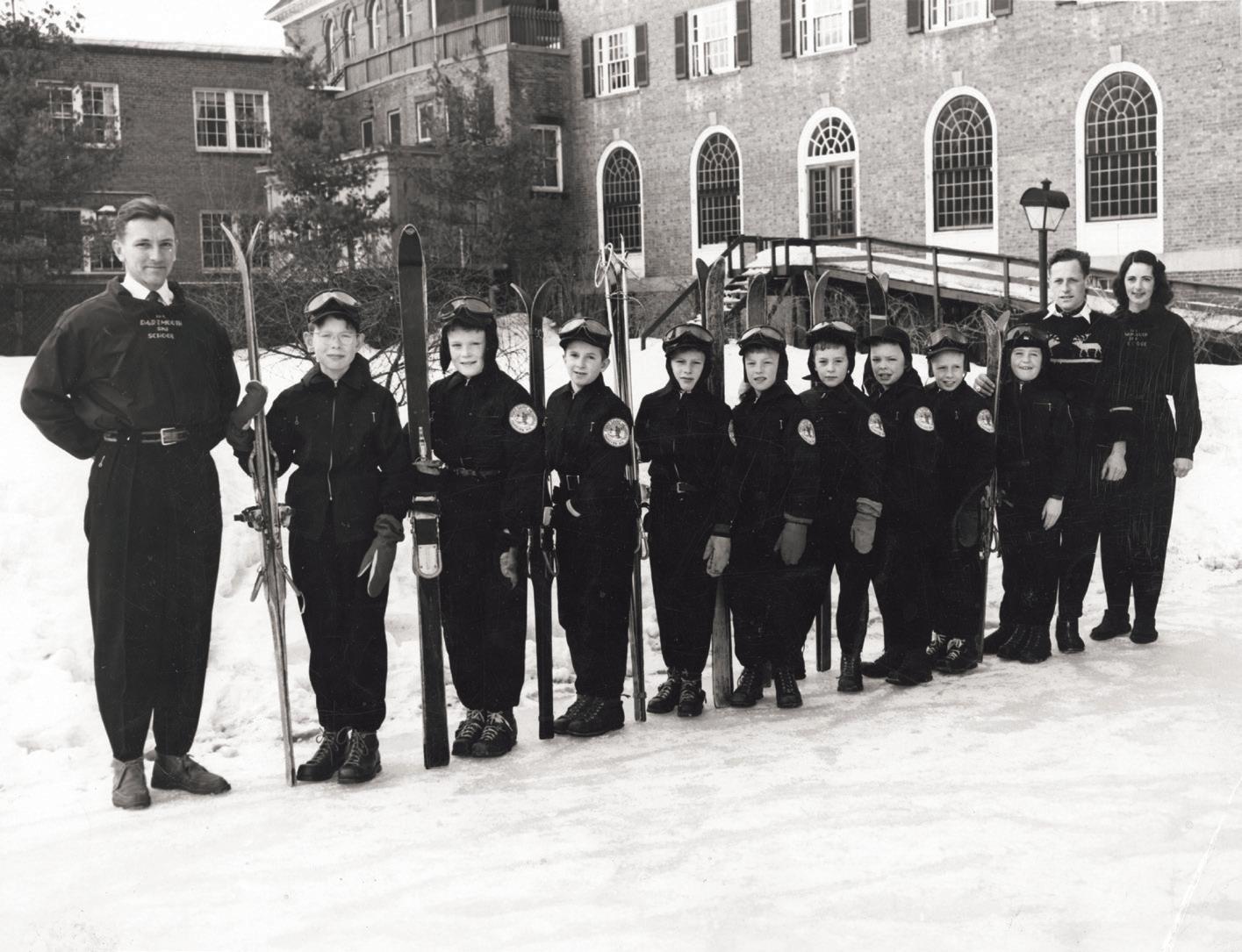
The Sayres gathered and refurbished used equipment and gave free ski lessons to area children. In the gentle hills of Hanover and neighboring Norwich, Vermont, boys and girls trudged up beginner slopes, their breath visible in the sharp cold, and made their first joyful descents. With progress, students could graduate to Oak Hill in Hanover, where the country’s first J-bar lift was installed in 1935.
Ford joined the Army Air Corps in 1942. Two years later, at the age of 34, he died in a midair collision during an air show in Spokane, Washington. In his honor, friends raised money to keep the Sayres’ ski school going. By 1956, the program had not only introduced hundreds of local children to skiing and ski jumping but also produced its first Olympians (and Sports Illustrated cover subjects) in Ralph Miller of Hanover and Betsy Snite of Norwich. Snite went on to win the Olympic silver medal in slalom in 1960 at Squaw Valley, California.

The Hanover region’s deep affinity for winter sports, coupled with accessible venues that allowed kids to ski and jump after school—not just on weekends, as with most ski teams at bigger ski resorts—created a perfect incubator for budding champs. At the same time, elite athletes—some homegrown, some products of Dartmouth (which itself has sent more than 100 athletes to the Olympics)—who settled in the area supplied a deep gene pool of talent. Many of those local stars enrolled their own children in Ford Sayre programs and often volunteered to coach.
Among the Ford Sayre alums who have competed in the Olympics are Walter Malmquist (1976; Nordic combined), Jeff Hastings (1984; ski jumping), Mike Holland (1984, 1988; ski jumping), Dorcas DenHartogWonsavage (1988, 1992, 1994; Nordic skiing), Joe Holland (1988, 1992; Nordic combined), Felix McGrath (1988; Alpine), Jim Holland (1992, 1994; ski jumping), Liz McIntyre (1992, 1994 [silver], 1998; moguls), Tim Tetreault (1992, 1994, 1998; Nordic combined), Hannah Kearney (2006, 2010 [ gold ], 2014 [ bronze]; moguls),
parent’s optimal level of on-mountain involvement was to be the person at the bottom with the snacks—Mikaela didn’t just tolerate the near-constant input from her mother, Eileen, but seemed to welcome it and thrive on it.
“Instead of getting fed up and turned off, Mikaela listened and did what her mother asked her to do,” said Mike Holland, a two-time Olympian in ski jumping, a parent to three racers, and a coach in the Ford Sayre kids’ jumping program. “That approach typically doesn’t work. I’ve seen many pushy parents [over the years]. The motivation needs to come from the kid. You can’t maintain it without a passion for it.”
Purcell recalled that after the day’s program ended at 1 p.m., Mikaela would be back out with Eileen at 1:30,
doing more laps and drills. “The bottom line was that Mikaela wanted to be out there. She had that inborn passion. And her parents instilled an incredible work ethic in her.”
Sometimes I spotted Mikaela and her mother on the trail below as I rode the Skiway quad chairlift with other parents. Eileen might be demonstrating hand positions or pointing down the fall line or following closely behind her daughter shouting instructions. Helicopter mom. Too much Over the top. I’m sure we said those things. But there was awe, too, and the sense that we might be witnessing something much bigger than our homegrown club, something so lightning-in-a-bottle special that conventional wisdom was off the table. We all felt it—the kids, the parents, the coaches, and, I think
it’s safe to say, Eileen herself. I remember her sitting on the edge of a table in the base lodge one day, telling me about a conversation she’d had with Mikaela. They’d been driving home from the Skiway, and Mikaela, who was in the back seat, had asked when the next race was. As I recall it, Eileen said that when she told her, Mikaela said she couldn’t wait to have that feeling again—of pushing out of the gate and flying down the course. And she had said it with such unexpected intensity, such ardor, that Eileen had studied her in the rearview mirror and wondered just what she had on her hands.
Long after Mikaela left us and rose to prominence, we learned through profiles in The New York Times , The New Yorker, and Sports Illustrated, among others, that the Shiffrins’

“ I REMEMBER THINKING THAT IF NO ONE SCREWS THIS UP, MIKAELA WILL BE A WORLD-CLASS RACER,” A FORMER COACH RECALLS. “AND I FELT PRESSURE NOT TO BE THE ONE TO SCREW IT UP.”Ford Sayre veteran Matt Purcell, center, was among the New Hampshire ski coaches who saw Mikaela’s potential firsthand.
unconventional, hands-on approach had extended well beyond the slopes. Eileen and her husband, Jeff, an anesthesiologist and former member of the Dartmouth ski team, were voracious consumers of videos, books, and articles about ski racing technique. They subscribed to the theory that 10,000 hours of deliberate practice was required to master anything, and so they looked for ways for Mikaela to log skills-building time. Balance was deemed crucial, so the Shiffrins bought a unicycle. Coordination and focus were vital, so Mikaela was encouraged to practice juggling. (She was occasionally spotted on the streets of Lyme juggling while riding a unicycle.) Mikaela and her brother, Taylor, who also skied on the Ford Sayre team and went on to race for the University of Denver,
simulated skiing on in-line skates and made slalom turns around broomsticks. Chores such as rebuilding the front lawn, as the family did one summer, weren’t just a matter of pitching in; they also developed upper-body strength. Every activity was another stone laid on the path toward what the Shiffrins said was the goal: not to make the podium, but to make the perfect turn.
By all accounts, Mikaela had been a gung-ho participant, embracing challenges, soaking up information—and clamoring for more. Beyond supreme talent, she seemed to have “a rage to master,” a trait identified by Boston College psychology professor Ellen Winner as one of the defining characteristics of highly gifted children. That she also had parents eager and equipped to be the bellows to her fire
made Mikaela a prime candidate to grow into the world-beater she became.
Eileen’s role as a de facto coach to Mikaela and several other girls who had started trailing along with the duo rankled Ford Sayre coaches. Parents weren’t supposed to be on the hill with their kids during practice—we all knew that—and they sure weren’t supposed to be offering advice. Hoping to bring Eileen into the fold, the team asked her to become an official coach.
“I remember being shocked that they brought her on as a coach,” said Tomky, “because it was the opposite of how things worked on the teams I had been on as a racer—a parent overstepping their bounds would have been banned from the hill, not invited on

EVERY ACTIVITY WAS ANOTHER STONE LAID ON THE PATH TOWARD WHAT THE SHIFFRINS SAID WAS THE GOAL: NOT TO MAKE THE PODIUM, BUT TO MAKE THE PERFECT TURN.Though she’s long since moved on to a world stage, Mikaela continues to inspire the next generation of racers at Ford Sayre.
board. I recall thinking it probably had to do with it being a very small town; everybody would still have to run into each other at the grocery store.”
No one questioned Eileen’s coaching skills. She had a keen eye for what kids needed to work on. She could be generous with her time with racers who were serious about improving—and she was excellent at conveying advice. (She even taught my daughter, who got a little banged up in a fall, how to swallow ibuprofen—something I’d failed at for years.)
“She is probably one of the best coaches you’ll ever meet,” Purcell said. “And she did bring good things to Ford Sayre.”
Her strong opinions, however, often ran counter to traditional coaching protocol. She believed, for instance, that even young racers should learn how to use their forearms and shins to bang slalom gates out of the way, an advanced technique that coaches generally didn’t introduce until later. She kept Mikaela and her small training group doing drills when free-skiing was encouraged. It wasn’t long before a rift developed in the parent ranks. Some saw Mikaela’s results and questioned why all of the coaches—including head coach Tiger Shaw, a two-time Olympian, nine-time U.S. national champion, and parent of three Ford Sayre racers—weren’t doing what Eileen was doing. (In 2014, the year Mikaela won her first Olympic gold, Shaw moved to Park City, Utah, to become CEO and president of the U.S. Ski and Snowboard Association, the governing body for the U.S. Ski Team—a head-spinning convergence of Ford Sayre alumni.)
Seeking even more training time for Mikaela, the Shiffrins joined a second team, the Lebanon Outing Club, based out of Storrs Hill, which offered night skiing and was so small that skiers could get in more than two dozen runs in a single practice session. A handful of Ford Sayre families followed them there. They wanted some of Mikaela’s magic dust, even if all they got to do in the end was eat it. That caused more turmoil on our team; you weren’t supposed to ski with two clubs at once.
At our monthly board meetings, we wrung our hands over the Shiffrin situation. I don’t remember the details of the discussions, but I do remember leaving a few of the gatherings in tears. I was a volunteer, a mom, a maker of snacks; I wanted no part of this drama. Eventually, Eileen was relieved of her Ford Sayre coaching duties, and the Shiffrins switched their affiliation to the Lebanon Outing Club. By the winter of 2007, they had left the area—first moving to Burke, Vermont, then back to Vail, then returning to Burke when Mikaela was old enough to enroll in the Burke Mountain Academy, a small boarding school for elite ski racers. In some interviews about their years in New Hampshire, the Shiffrins don’t mention Ford Sayre at all.
“I hope Mikaela remembers us,” Purcell told me. “I hope she appreciates the work that all of us put in. I’m sure she does.”
Ford Sayre certainly remembers her.
“All the kids idolize her,” Purcell added. “And she’s a great role model for them. You don’t see temper tantrums if she doesn’t win. She doesn’t throw stuff. I say, ‘She was a great kid with a big smile on her face, just like you guys.’ And I tell them, ‘If you want to get better, you have to be very dedicated.’”
I asked him if any current members of the Ford Sayre team show Mikaelalike potential.
“We have a couple who are on the fringe, and if they keep on the right track…” he said. “But it’s a long road and things change. It’s such a tough sport. It takes a lot of things going the right way. You cannot replicate how Mikaela became Mikaela.”
Under the high beamed ceilings of the Dartmouth Skiway base lodge, families have gathered to wait for the announcement of the race results. I’ve settled at a table near a group of preteen girls, their faces flushed with windburn, who have strewn the table with jackets and helmets and gloves. Some are dipping French fries into plastic containers of ketchup; some are popping Skittles. A few are looking at phones. I ask them
who their favorite racer is and they look up, all smiles.
“Mikaela!”
“One of my daughters was in her age group when she skied for Ford Sayre,” I say.
“Whoa ,” they say.
“What have you heard about her?” I ask.
“On a powder day, most kids would go ski in the woods, but she would set a course and train,” one girl volunteers.
“She stayed after practice to do drills until she got it right, and even when she got it right, she’d keep skiing.”
“She would train, eat mac and cheese, train, go home, and then go train more.”
“The coaches always have us write our goals down for the year, and when Mikaela did hers, she said she wanted to win a World Cup race.”
“It’s kind of cool to know you can actually get that far from here.”
“Super-far,” another girl says. They all nod.
I finish my hot chocolate and look around the crowded lodge, remembering these long afternoons. It always took forever for results to be announced. We wanted to get going. We were tired. It would be getting dark soon. We had to let the dog out. I don’t miss all the waiting around. But I do miss the camaraderie of the other parents, we anxious sideline boosters who were bonded by the million things it took to get our kids to a ski race and by the pleasure of seeing our sons and daughters grow to love skiing as much as we did. I also, perhaps surprisingly, miss those drives home from the Skiway, from Sunapee, from Ragged, from Gunstock. On serpentine back roads, under a twilit sky streaked purple and mauve, my husband and my daughters and I talked—not about who had won (duh, Mikaela), but about friends and school and life. In the end, being the fastest wasn’t the point—not for my kids, not for most kids.
Still, when I see Mikaela Shiffrin on television sliding into a World Cup starting gate, goggles down, breathing deeply and deliberately, staring down the racecourse in the wind or fog or swirling snow, my heart rate soars.
At a certain Manchester, New Hampshire, hotel where the press and many campaign staffers used to stay during the primary, there was a small covered bridge, just wide enough for people to walk across. It made a pretty picture, and that was the point. The network news reporters would stand with the fake bridge in the background. That hotel has since been torn down, but the clichéd New Hampshire that is shown to the nation still endures. The real New Hampshire seldom shows up in those stories. This is a state that takes time to understand.
ILLUSTRATIONS BY TITUS SMITH

 PHOTO ILLUSTRATION BY BRIAN KONNICK
PHOTO ILLUSTRATION BY BRIAN KONNICK

N MY SECOND DAY in New Hampshire—35 years ago—I called the phone company to come start my service. I was calling from a phone booth. The man on the other end of the line told me I needed to make an $11 deposit. I would have to drive to the next town and leave a check at the general store.

I wrote out the $11 check and went to the general store. The man there took my check and put it in his sparsely populated cash drawer, under the tray holding the bills. I waited a beat for a receipt or some acknowledgement. None was forthcoming.


I drove back to the pay phone and called the company to tell them that I’d left the deposit. “OK,” the man said, “we’ll be there in two days.”



“Wait,” I said. “How do you know that I left the deposit?”







“Well, you said you did” was his answer. He could check, he said, but my word was good. (My word was worth at least $11. Modest, yes, but a good start.)




And that, in short, is how things have gone in New Hampshire. It’s like walking an old crooked path that proves to be the most direct route.
New Hampshire is a crooked path that often makes little sense to outsiders. What’s most important is invisible. So many things that are looked after by state or county governments in other places are here tended by towns and legions of volunteers. And these volunteers will be heard—in town meetings, in the sprawling state legislature, and in tough grassroots protests that never fold.
You can say that New Hampshire created itself by saying No. No to the Puritans in Massachusetts who claimed a great deal of the province in the early 1700s (so much that they laid out the state capital’s main street). No to a strong central government led by Seacoast aristocrats. No to many big projects, and no to an entire cranky list: no to a state income tax, no to a sales tax, no to seat belts and motorcycle helmets. What is “Live Free or Die”—the state’s motto—but just a curmudgeon yelling, Hey kid, get off my lawn ?
Behind this naysaying is a vision of civic order, one that isn’t as quaint as the Vermont brand. New Hampshire is ornery—but with a purpose, I swear.












It’s a state that says no—but desperately wants you to visit and even to move here. (It’s hospitable in that New England way, welcoming newcomers by calling them flatlanders, and worse, for maybe the first 20 or 30 years they live here.) Underneath this orneriness is a history of economic failure and serious poverty. Failure is the first lesson the landscape teaches. Almost everyone has ghosts for neighbors: cellar holes from failed farms, stone walls that once edged pastures and are now left to themselves in the woods, abandoned railroad beds and



bridges, ruins of mills and ruins of hard work and good intentions. Failure everywhere you look. The ghosts of this failure are always at the table. It’s why New Hampshire welcomes big economic schemes and also why sometimes it stubbornly refuses them, saying: No. We’re independent. Go away.
New Hampshire was born this way. “It’s astonishing, really. You go back in the record, the parsimonious and resistant attitude ... that we have today starts seemingly pretty close to the beginning,” Jim Garvin told me when I met him at the New Hampshire Historical Society in Concord, where he was waiting for a board of trustees meeting to start. If reporters want to dig deeper into the idiosyncrasies of the state, Garvin is where to start. He’s been a curator at the historical society and at Strawbery Banke Museum in Portsmouth. For decades he was the state’s architectural historian. “Once you had the royal government created and established, there was always this loggerheads collision between the royal governor and the assembly,” Garvin said. “Saying no is our middle name.”
Garvin has looked deep into the state’s history, recently writing an extensive history of the statehouse with his wife, Donna-Belle Garvin, detailing how the big dome was built out of wood—an old barn, really—





hiding beneath a golden dome. It’s a perfect metaphor. A golden dome may be required for a state capitol, but that’s as grand as it gets. An old barn is closer to the soul of this state.

New Hampshire strives to think small; that gold dome is supported by a framework of naysaying. In his 24 years as a state employee, Garvin has seen many good efforts die untimely deaths. A bill would come before the legislature, and after days of hearings they would agree that it was a fine idea but one that someone else should fund. “If somebody really wants something to happen, let them get together and make it happen by themselves,” Garvin said. “And that’s essentially what’s given birth to a very vigorous and productive nonprofit sector in New Hampshire. Also I think it springs from the fact that New Hampshire, until recently, has been a poor state.”
In the next few minutes he laid it out, a map leading the way from past to present. He said New Hampshire “went through this tremendous depression in the late 19th century and was hemorrhaging its young people after the Civil War. And the sad, very pervasive image of New Hampshire was that of a farm run by an elderly couple and an elderly hired man that had once been a prosperous 18th-century/ early-19th-century place but was now failing, and the pastures were growing
THE ATTITUDE THAT WE HAVE TODAY STARTS
SEEMINGLY PRETTY CLOSE TO THE BEGINNING.... SAYING NO IS OUR MIDDLE NAME.
—HISTORIAN JIM GARVIN
back to woodlots. This led to a serious revenue problem because an abandoned farm pays no taxes. And so the revenues of towns and probably the broad revenue of the state continued to decline year by year.” Thus, he pointed out, there was no money for schools and roads. Hard times set a pattern that persists, the familiar “psychology of town meeting.” Newcomers today quickly adopt this flinty attitude, he said, even though the state today is prosperous, ranking a surprising seventh nationally for median household income, and fifth for per capita income.
New Hampshire’s history of economic failure is below the surface in the state’s homegrown holiday, Old Home Day. Governor Frank Rollins invented the holiday in 1899 to try to lure people back to depleted towns. He wanted the young people to return from Boston, New York, “the fields of the Midwest and the mining camps




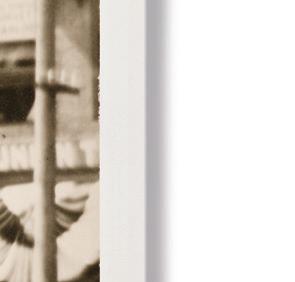



of Montana” and buy a summer home or at least plant some trees on Main Street. Old Home Day is an unusual holiday—it doesn’t celebrate a military victory or a president’s birthday. It’s the plea of a state growing poorer.


“I wish that in the ear of every son and daughter of New Hampshire, in the summer days, might be heard whispered the persuasive words: Come back, come back!” Rollins wrote. “Do you not hear the call? What has become of the old home where you were born? … Do you not remember it—the old farm back among the hills, with its rambling buildings, its wellsweep casting its long shadows, the row of stiff poplar trees, the lilacs and the willows?”
Rollins rallied others to his idea, and as governor he presided over the state’s first homecoming. Each New Hampshire village issued invitations. “To former residents of Deerfield,”



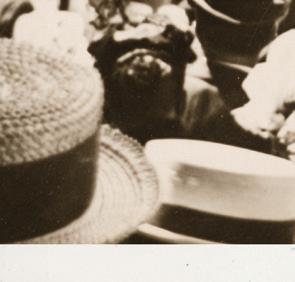



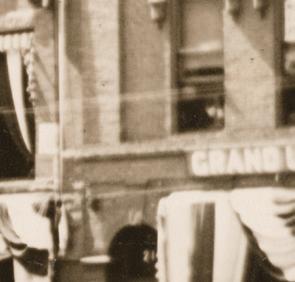










read one, “we offer no special attractions, but what is better than the hospitality of sincere hearts.”





The first Old Home Day celebrations were haunted by all those who had left New Hampshire. They were a festival of homesickness.



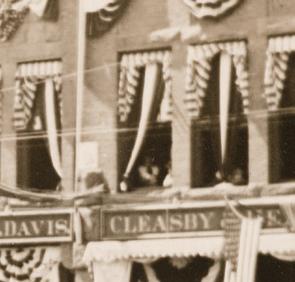
You’d think we’d be distant from the lamentations of 120 years ago, but we’re not. Today New Hampshire is again worried about losing its young people. The state is graying; it has the country’s second-oldest population. (The three northern New England states are the oldest and whitest in the nation.) To solve that problem, this




time someone hasn’t invented a holiday but rather a new organization to recruit young professionals: Stay Work Play.










The Manchester office of Stay Work Play, where I met Will Stewart, the executive director, is done in the hip style of a tech startup: There’s an open area, where today two young women sit side by side, working at laptops, and a café next door. Stewart moved to New Hampshire from Tennessee in 2004. He is a paid professional optimist. His main sell is that New Hampshire needs to “toot our own horn,” that it has many “best-kept secrets,” and that everyone needs to work together to spread the word—which is basically the Governor Rollins line, told in the contemporary language of branding.
Stay Work Play is essentially Old Home Day rebooted: Come back! Love your native state. Invest and live here. When Stewart talks about “boomerangers”—those who grew up here, left in their 20s for Boston and New York, and now want to return to raise a family—Rollins would agree.

“If we don’t do a better job of attracting and retaining young people, we’re going to be in trouble,” Stewart said. Five or six years ago when he would ask business owners about their biggest concerns, they’d list healthcare costs, energy costs, and some particular regulation or tax. “Now you ask them, ‘What are your top three concerns?’ and they’ll say workforce, workforce, workforce.” For some companies, if they don’t find young workers, “it will be a question of survival,” he said. “It’s good that everybody kind of gets it now. From the governor on down, everybody’s singing this tune.”























But how strange it is to be back here again. New Hampshire’s recent problems have come from its popularity. In the 1970s the state drew back-tothe-landers and hippies. In the 1980s the state boomed; it was the secondfastest-growing state east of the Mississippi. The unemployment rate fell below 2 percent, the population passed one million, and new arrivals outnumbered the native-born. The inevitable bust was a hard landing. Banks were mired in bad loans. Seventy-five percent of the state’s banking assets were
held in what were delicately termed “troubled banks.” Economists said it was the worst recession for any region since the Great Depression. Boom and bust and bust again in each era. New Hampshire is a small boat to row when the seas get rough.


One of Stay Work Play’s promotional lures is to present New Hampshire as “a small state that lives large.” That slogan accidentally captures New Hampshire’s eternal dilemma: how to be a small state in a big republic, how to profit from big corporations and a big federal government and not be drowned. But just how “large” this small state should live is a question without a neat answer, and therein lie many fights over things like whether to build an oil refinery or the Seabrook Nuclear Power Plant, or whether a four-lane interstate highway should push through Franconia Notch, or whether the high-voltage transmission towers of the proposed Northern Pass should cross the North Country.
New Hampshire has been engulfed before, controlled by corporations larger than the state. Most big schemes are financed by money from elsewhere. Starting in 1845, the Boston Associates, the moneyed elite who built the textile mill cities of Lowell and Lawrence in Massachusetts, and controlled the water level of New Hampshire’s largest lake, Winnipesaukee, to power
the looms almost 100 miles downstream. No one in New Hampshire had a say in what happened to the lake. By the start of the 20th century, the Boston & Maine Railroad ran the state. The B&M’s monopoly stranglehold on New England’s railroads made it all-powerful. Every candidate for governor in New Hampshire was approved first by the B&M, every bill set before the legislature was read first—or written—at the railroad’s Concord offices. There was no opposition; almost every lawyer and newspaper editor in the state was on the B&M payroll. It was difficult to find a judge who also had not been paid by the railroad. “New Hampshire,” said the crusading lawyer Louis Brandeis, “has been a state within the Boston & Maine.”
New Hampshire fights these battles over and over. It is often courting and fighting off big corporations. The state sold off 172,000 acres of the White Mountains in 1867 for about $25,000 (14.5 cents an acre or roughly $2.52 in today’s money). The “lumber kings” clear-cut the mountains. The barren mountainsides slid into the rivers; the slash caught fire. The runoff flooded the Merrimack River, shutting down the mills. The black-and-white photos of the cut-over and burned mountains look like battlefield photos of Antietam and Gettysburg. The New Hampshire Forestry Commission, powerless to
IT’S GOOD THAT EVERYBODY KIND OF GETS [THE NEED TO ATTRACT YOUNG WORKERS] NOW. FROM THE GOVERNOR ON DOWN, EVERYBODY’S SINGING THIS TUNE.
—WILL STEWART, EXECUTIVE DIRECTOR OF STAY WORK PLAY
stop the destruction, wrote: “All the mountain forests in New Hampshire are private property … and we have no more control over their owners’ treatment of them than we have over the condition of life on the moons of Mars.” It took an epic, decades-long reform effort to create the White Mountain National Forest we see today.
A state with a weak government and a public sector that depends on the energetic attention of volunteers is often overmatched by corporations. “Whenever you entrust stewardship to a giant corporation, you’re going to have the interests of that corporation predominate,” Garvin told me. “New Hampshire has long been subject to that kind of power. These forces step in and fill the vacuum that government has not filled.”

The prolonged, agonizing decline of the big mills and the railroad smothered the state for decades. Theirs was a long, wheezy death.
Entwined with all the primary showboating and lotto ticket economics is a part of New Hampshire that’s as solid as granite, that abides. It’s the state that is run by volunteers—call New Hampshire the ad hoc, come-asyou-are amateur hour of civics. This is the New Hampshire that’s invisible to the horde of reporters, and sometimes even to those of us who live here.
I have spoken to visitors from big states who are vexed by this invisibility. Surely, they say, everything requires a state agency and a raft of new laws. That’s often the right solution for their state, but New Hampshire proceeds cautiously. Poverty formed its outlook, and an allergy to taxes is the state religion. So volunteers will take on some huge tasks. A bunch of neighbors will form a committee to see how they can solve the problem at hand without raising more than a few thousand dollars.
This is how things really work in small towns. People get together, figure things out, and walk the crooked path to a solution. “Social capital” is what the political scientists call this kind of neighborly involvement. Social capital is under siege by almost any trend you can name. A survey of New
YOU CAN HAVE AN IMPACT IN NEW HAMPSHIRE. IT’S BECAUSE OF THE SIZE OF THE TOWNS AND THE ACCESSIBILITY OF THE STATE LEGISLATURE. I MEAN, GOODNESS, THERE’S 400 OF US, YOU KNOW?



Hampshire’s 20-to-40-year-olds by Stay Work Play found that 21 percent didn’t have a single friend living nearby. But neighborliness is not extinguished yet. When I was a census taker in 2010, one thing that struck me was that each time I came across a very old person who seemed to be on their own, I’d learn that the neighbors were helping out. They’d plow the driveway, drop off leftovers, run a few errands—things that wove their neighbor just a little bit more into the life of the community.




A couple of years ago I was in the North Country—that part of New Hampshire that points like a finger into Canada—talking to people who were fighting Northern Pass, a huge power line project that would rip across the land. I talked to a state representative who was getting off his tractor after trying a new brush hog, to a doctor who was out in the woods building a new springhouse for his well, and to a dairy farmer who took pride in showing me around his hundreds of acres. Only later, thinking it over, did I realize I’d spent a day meeting people whose homes were imperiled by a huge corporation, and all of them were happy. They loved their lives; they loved the North Country. They were
an advertisement for Thomas Jefferson’s “pursuit of happiness.” They were independent; they were ready to help their neighbors. They’d gone to Concord many times to meet with the governor and testify before the legislature. They saw how their acres joined with thousands of other acres in the North Country. They saw themselves holding their land for children and grandchildren. They took the long view—and they won, defeating the Northern Pass project after eight years of hard work. They were stewards, although no one used that word.
Even if we never ask whether people move to a new state (or stay put) in “pursuit of happiness,” that’s the main occupation of every American. Craig Thompson moved to Harrisville, New Hampshire, eight years ago with his partner, Sarah Heffron, and the first of their two children, and he’s already a state representative. He grew up in Pennsylvania with mountains, which he missed when they lived in South Carolina, where everything was flat.
“When I first visited Harrisville, I fell in love with the Monadnock Region,” he said of the southwestern corner of the state. “I knew immediately that I was going to invest in the community, raise a family, and spend







my life here. We live in the best little corner of the planet there is.” They’d been in their house less than 24 hours before a neighbor stopped by with fresh bread to welcome them to town.










With a broad smile and a disarming optimism, Thompson told me about buying Mayfair Farm. They set up a farm stand, a kitchen, and a catering business. Today they host weddings and banquets. They cut hay on 30 acres, and draw visitors with raspberries, blueberries, apples, and meat from heritage pig and lamb breeds. Thompson and Heffron do all this despite the ghosts of failed farms. When they were getting their orchard going, they sought out the advice of an orchard specialist. “We’re looking around,” Thompson recalled, “and he said, ‘Craig, this is the soil that made men move west.’”
Thompson stepped right into town politics, serving briefly on the planning board, learning firsthand “how much every town is run by itself. That is something you don’t find in other parts of the world by any stretch of the imagination.” He went on to win a seat in the House of Representatives, joining the largest state legislature in the country, the state’s volunteer ethos carried all the
way to the top (a New Hampshire legislator’s salary is just $100 a year).




“You can have an impact in New Hampshire. It’s because of the size of the towns and the accessibility of the state legislature. I mean, goodness, there’s 400 of us, you know? You can’t walk very far without bumping into somebody who has served or is serving,” Thompson said.
But this reliance on volunteers and towns has serious limits. All that naysaying piles up. “We have schoolteachers whose pay, when you factor in the cost of living, ranks 39th in the nation,” he said. “Now either we value education or we don’t. Our university system ranks 50th in what the state spends. This leads to another statistic: We rank number one in the percentage of high school students who go to college out of state, and it concerns me that once the kid goes to school somewhere else, they don’t come back. Number one.”
He thinks we should spend a little more, and tax so that the burden is more fairly distributed. He doesn’t advocate for an income tax, but he’d like to see the 9 percent rooms and meals tax extended to more activities and a low sales tax on some luxury goods.
We spent the rest of our time discussing taxes like two students in a science lab trying to calibrate a scale. How do you spend more on education or drug treatment without tipping over the state’s religious devotion to small government? Can New Hampshire adapt to these big challenges?
New Hampshire is 94 percent white, like Vermont and Maine. “If you look at where we’re heading the next 20 or 30 years,” said JerriAnne Boggis, executive director of the Black Heritage Trail of New Hampshire, “we’re going to have a larger qualified workforce of people of color vying for positions all over our country. If we are not an inclusive environment, where is our workforce going to come from?”







Boggis was part of a large group that met in 2018 to talk about encouraging diversity in a very white state. Will Arvelo, the state’s director of economic development, convened the meeting of 100 government officials and business and cultural leaders. Boggis was “pumped” afterward, telling The New York Times, “It’s not just the social justice groups that are doing this.... We’re talking about the economic engine of our state, and we can’t move forward without [the businesses].”

This classic New Hampshire approach—you meet with neighbors to try to take care of things—may represent the first attempt in the nation to diversify an entire state. But you have to take the long view, said Boggis. “You’re planting for the next generation. New Hampshire has an opportunity to really be a model in how we honor our heritage, how we honor our black history, how we honor our slave history. We’re a small state, but we have a mighty voice.”
Boggis, who came from Jamaica 37 years ago to attend college, has helped New Hampshire see its forgotten history. In Milford, where she lives, she has ensured that Harriet E. Wilson is recognized as the first AfricanAmerican woman to write a novel: Our Nig: Or, Sketches from the Life of a Free Black , published in 1859. There’s now a statue of Wilson in the town’s Bicentennial Park. And in Portsmouth, Boggis was part of the effort
YOU’RE PLANTING FOR THE NEXT GENERATION. NEW HAMPSHIRE HAS AN OPPORTUNITY TO REALLY BE A MODEL IN HOW WE HONOR OUR HERITAGE, HOW WE HONOR OUR BLACK HISTORY.
—JERRIANNE BOGGIS, EXECUTIVE DIRECTOR OF THE BLACK HERITAGE TRAIL OF NEW HAMPSHIRE
to commemorate the African Burying Ground, which had been forgotten until one day in 2003 when workers accidentally dug up decayed wooden coffins under Chestnut Street. It’s now New England’s only archaeologically authenticated 18th-century African burial ground.
The Black Heritage Trail leads through many places, small towns that had no idea that people of color once lived there. There’s an African burying ground in Warner, for example, and in Canaan there’s the site of one of the nation’s first integrated schools, which in 1835 was dragged off its foundation by an angry mob. Seeing what AfricanAmericans went through is a way of changing stereotypes, Boggis said. “You start looking at their accomplishments, you start looking at what they were able to do in their time, and you go, wow, that’s the hero’s journey.”
dential candidates to his old mill town, hosting nine of them at his house. The average citizen can jump in. Campaigns actively seek “early adopters” (to use the tech term). You can stand toeto-toe with the next president and the soon-to-be also-rans. It’s like seeing the Wizard of Oz before he steps behind the curtain to become the great oracle.
After this up-close-and-personal phase, the primary becomes more and more moneyball politics, with a flood of TV ads and opinion polls. In New Hampshire the primary is both a sport and an industry that no one in public life dare criticize—if you do, Secretary of State William Gardner, who for 43 years has defended going first, will make sure that voters know.
The primary adjusts to the many different New Hampshires. The state is rural and urban and suburban. It’s small-town and sprawl. It’s places that
to get to their favorite fishing hole. But it’s also a place where only 5 percent of the high school graduates will stay.
The North Country exists as a double exposure: the state’s old poor days living alongside something new. The North Country has many dissolving landscapes—fallen-in farm buildings, abandoned motor court cottages from the First Motor Age, commercial strips that are sketchy and stunted. There’s something that’s passing up north— many things actually, like industry, farming, and early tourism—and something not yet arrived.
Liz Jackson and her friend Jason Hunter are two people who are working to arrive at that new economy and transform Gorham. We sat down at Libby’s Bistro, the restaurant that Jackson started 22 years ago. When she first opened, “our credit cards were so maxed out I didn’t have the money
New Hampshire, it’s been said, is made up of 234 independent swamp-brush republics. Each town is left largely to itself, as is each region. The Seacoast lives a life apart from the North Country or the Upper Valley. The Monadnock Region is the wallflower at the dance. In Nashua and Manchester, commuters are in Boston’s orbit, while up in Colebrook, in the Great North Woods, Canada is next door. It’s been like this since the formative years, when 36 towns on the Connecticut River tried to leave for Vermont in 1782 rather than face the tyranny of wealthy Portsmouth merchants. A ridge-backed localism lives in the state.
It’s this localism that gives the presidential primary its ideal form: The candidates come calling in living rooms, meetinghouses, school gyms, and diners—always diners, because real voters eat hash browns. Carlos Cardona, a 29-year-old Laconia Democrat, caught the attention of The Washington Post last summer for having lured 15 presi-
often have little to say to each other. They are keenly aware of this in the North Country, often misunderstood by those from “below the Notches.” People don’t grasp “the sense of scale up here,” said Chris Thayer, director of North Country programs and outreach for the Appalachian Mountain Club. They don’t realize that you can hit Franconia Notch and still drive north about two and a half hours before you leave the state. And they think it’s all moose and closed paper mills. “You glom on to the stories of trials and tribulations of the timber industry, pulp and paper: Oh, everything is sad in the North Country,” he said. But “there are also incredible bright spots of why people live here. There is life north of the Notches. There are businesses, there are schools, there are kids getting on the school bus. Not just moose walking across the road. People are growing up and experiencing rural living. For folks below the Notches, it can be somewhat mythical in that respect.” It’s a place where kids will run home after school
to buy a gallon of paint,” said Jackson. She had no investors. She resorted to “dumpster decorating. You know, whatever I could find in my mother’s basement or whatever someone was throwing on the street, we would figure out a way to turn it into something cool. And then when we opened, these people are like, ‘Oh my gosh, who did the decorating? This place is fabulous.’”
Winters are slow in Gorham, and they were especially slow for a new restaurant. Without her knowledge, her friends started calling others: You have to eat here or we’re going to lose this. Libby’s is now a prime gathering spot; her regular customers have become her friends. Some are even at her house on Christmas Eve. “We’re very welcoming of new people,” she said.
She grew up in Gorham, the third generation in town. She left, worked for Julia Child, and moved back with her husband when she was 32. They wanted to raise their kids with her parents, and she missed life in a town near New England’s biggest mountains.
Jason Hunter grew up in southern New Hampshire and came north to work at the Appalachian Mountain Club, where he met his future wife, Kara, who is also from below the Notches. They’ve been building their dream business, HubNorth. They bought an old Girl Scout camp and converted it for “glamping.” (“We don’t really love the word, just because it’s sort of dorky in a way, but it works,” said Hunter.) They also run a construction company, and he spends 20 hours a week keeping a mountain bike club going, a hungry group that often ends up at Libby’s. He and Kara, too, have built their businesses from the ground up, “using what we can afford and making do.”
Jackson and Hunter wish more people in town were willing to take risks. “There aren’t a lot of entrepreneurs out there,” said Jackson. “You have to have a different personality that’s going to say, ‘I might not get a paycheck this week.’ My husband supported us while I lived without a paycheck for a year. That is not an option for most people.”
She has mentored people, offering reduced rent for her upstairs space and use of her kitchen, trying “to make it so it’s almost like you’re not going to fail and you can ride off my coattails, in a way. Right? But it’s difficult to find people comfortable with taking even that chance.”







Not long ago the economy offered a different kind of risk: You bet it all on one employer. You showed up at the paper mill and worked hard; the bosses looked after everything else. Gorham has the North Country’s lone paper mill—all the others are gone. When a mill closes, everything falls out of its orbit. People feel that their work of the past 30 or so years, their parents’, their grandparents’ work, maybe hasn’t come to anything. But in today’s economy, the kind of devotion that kept the mills going isn’t enough.
To some extent there’s “a lack of confidence in the community itself,” said Hunter. People doubt the town will support their business. “But it’s crazy. Look how many cars are driving by. It’s a lot of traffic. So if you’re on Main Street or anywhere close, you’re going
to succeed as long as you go all in.” What’s needed is specialization, offering something no one else has, said Jackson. “For 10 years I’ve been saying every town in New Hampshire just needs one beer, one bread, and one cheese that they call their own. That’s all I’m asking. And do you think in my own town I could even get that going? I can’t even get one beer, one bread, and one cheese—not yet.”
That’s a great rallying cry, one that plays to a heritage of stubborn localism.







Hunter and Jackson continued to discuss Gorham’s prospects—why isn’t more happening? It was a spirited backand-forth over a well-traveled route. They’ve been discussing this for years. “We’re a work in progress is really what it is,” said Hunter. The North Country is in recovery and things are happening very slowly, he said.
We’re living in a time after the fall of the old industrial order, and now the corporate model is fraying, giving way to a patchy gig economy: Everyone for themselves, job by job. The old mill town deal—show up, put in an honest day’s labor, and you’re guaranteed a paycheck for life—is no more. As we’re ever more free, life is more uncertain.
They’ve tried a lot of things to revive the North Country. It’s been a long search. “The first New England was a






church; the second New England is to be a factory,” said Joseph Cook in 1877. And the third New England? That’s been up for grabs for years since the factories failed. Different answers have promised salvation. Is it the knowledge economy—colleges and high tech? Is it the arts and luring “the creative class”? Or is it the experience economy, selling whitewater kayaking and mountain biking the way Apple sells phones, as one sleek product? We haven’t settled on a name yet. We’re trying to invent it every day. Perhaps it’s “one beer, one bread, one cheese.”
New Hampshire will find an angle that is a bit odd and a bit ornery. And this, finally, is what New Hampshire knows: how to make your way as a very small state in a big country and get what you want. Set up shop on stony soils, outmaneuver those pushy Massachusetts Puritans, try and fail at farming and running mills. Pray that skiing and leaf peeping and liquor and lotto tickets will bring in tourists. Set up the thinnest government you can get away with, and maybe it works for a while. For many years the state has prospered. But in each generation, New Hampshire is asking the same question: How do I get you to come back, to stay, to work, to play? This will be the case as long as there’s a New Hampshire.
EVERY TOWN IN NEW HAMPSHIRE JUST NEEDS ONE BEER, ONE BREAD, AND ONE CHEESE THAT THEY CALL THEIR OWN.
—LIZ JACKSON, CHEF-OWNER OF LIBBY’S BISTRO IN GORHAM








































JAN. 4–5: HARTFORD, Connecticut Wedding & Bridal Expo. The largest event of its kind on the East Coast sets up shop at the Connecticut Convention Center to offer one-stop shopping for any and all wedding needs. 860365-5678; jenksproductions.com
JAN. 16–19: UNCASVILLE, Hartford Boat Show at Mohegan Sun . The Earth Expo Center provides the venue for viewing all things boating, from luxury cruisers to accessories. 860-767-2645; hartfordboatshow.com
JAN. 17–19: EAST HADDAM, Festival of New Musicals. Emerging artists premiere musical works brought to life with the guidance and resources of the famed Goodspeed Opera House. 860-873-8668; goodspeed.org
JAN. 17–19: HARTFORD, Hartford Symphony

Orchestra: “The Four Seasons.” Ring in the new year—and the new decade—with Vivaldi’s evocative The Four Seasons at the Bushnell Center for the Performing Arts. 860-9875900; hartfordsymphony.org
JAN. 23: STORRS, “We Shall Overcome: A Celebration of Martin Luther King Jr.” The Jorgensen Center for the Arts hosts this living lineage of African-American music and culture that
includes traditional and modern gospel, classical, jazz, Broadway, and spirituals. 860486-4226; jorgensen.uconn.edu
JAN. 24–26: UNCASVILLE, The Sun Wine & Food Fest . Head to Mohegan Sun for a sprawling showcase of beer, wine, specialty spirits, and delectable dishes. Among the highlights are a grand tasting with 1,000-plus offerings and celebrity chef appearances by the likes of Rocco DiSpirito. mohegansun.com
JAN. 26: RIDGEFIELD, “John O’Hurley: A Man with Standards.” As an actor, singer, and show host, Maine native John O’Hurley has done it all. Here he dazzles the Ridgefield Playhouse audience with storytelling, songs, and humor. 203-438-5795; ridgefieldplayhouse.org
FEB. 20–23: HARTFORD, Flower & Garden Show. Spring arrives early at the Connecticut Convention Center, where more than 300 booths overflow with flowers, plants, herbs, bulbs, and seeds, not to mention informational sessions galore. 860-844-8461; ctflowershow.com
JAN. 1: OLD ORCHARD BEACH, Lobster Dip. One of the top fund-raisers for Maine Special Olympics, the Lobster Dip sees throngs of slightly nutty folks gathering at the Brunswick before taking a quick plunge into the Atlantic. 207-879-0489; somaine.org
JAN. 10–12: AUGUSTA, Northeast Motorsports Expo . The Augusta Civic Center provides racing fans a terrific opportunity to meet drivers, get check out race cars, and talk shop with the experts. northeastmotorsportsexpo.net
JAN. 18–19: BANGOR, SnowCon . At the Cross Insurance Center, the focus is on board, card, and tabletop games, with ample opportunity to browse, play, and buy. snowconmaine.com
JAN. 26: ROCKLAND, Pies on Parade . Stroll among area restaurants and inns for samples of 50-plus kinds of pies, from sweet to savory. Be sure to buy your ticket early: This event sells out fast. historicinnsofrockland.com
JAN. 31–FEB. 2: RANGELEY, Pond Hockey Festival. Celebrate a time-honored New England tradition at Haley Pond. There will be men’s and women’s divisions, with several age brackets as needed. 805-722-9172; rangeleymaine.com
JAN. 31–FEB. 9: CAMDEN, Winterfest. This celebration of snow season begins with ice carving and snow sculpting and culminates with the U.S. National Toboggan Championships and fireworks. camdenwinterfest.com.

FEB. 1: GREENVILLE, Wilderness Sled Dog Race
Since this race begins and ends right in town, you can cheer on the competitors from start to finish in one of only three long-distance races in New England (it’s a full 100 miles). 207695-2421; 100milewildernessrace.org
Hotel & Event Center
Easy access to Acadia National Park. Complimentary breakfast. Comfortable bed. Heated indoor saltwater pool. Dinner & Drinks by the fireplace. Friendly, knowledgeable staff. Ocean View from every room. Bar Harbor’s premier year-round, full-service hotel.
(Continued from p. 71)
FEB. 15–16: PORTLAND, Maine Home & Remodeling Show . With more than 180 exhibitors and lots of expert-led seminars, Cross Insurance Arena has everything you need to shake off the winter blahs and start planning your next home and garden projects. 207-321-4246; newenglandexpos.com
FEB. 16: SOUTH BRISTOL, Ice Harvest . Visit the Thompson Ice House to see how ice was harvested in days of yore. After watching the cutting and lending a hand with the transportation of the ice blocks, you’ll still have plenty of time for skating, wagon rides, and a visit to the museum. thompsonicehouse.com
JAN. 1: SOMERVILLE, Raising of the Grand Union Flag. To commemorate the American Revolution’s first flag raising, a processional led by a re-enactor portraying George Washington on horseback will leave from the City Hall Concourse at 11:30 a.m., followed by a ceremony at Prospect Hill Park. Attendees are invited to wear traditional colonial clothing. somervillema.gov
JAN. 3–5: NEW BEDFORD, Moby-Dick Marathon . Join in the New Bedford Whaling Museum’s read-a-thon of one of America’s most enduring novels, Moby-Dick . The main event—the reading aloud of Herman Melville’s unabridged classic by local celebrities and volunteers—begins at noon Saturday. 508-997-0046; whalingmuseum.org
JAN. 10–12: SPRINGFIELD, Boar’s Head Festival. Experience an ancient Epiphany processional celebration at Trinity United Methodist Church, complete with live animals. Purchase tickets in advance. 413-7334759; trinityspringfield.org

JAN. 16–19: WILLIAMSTOWN, I/O Festival of New Music. This annual highlight of the Williams College calendar offers talks, workshops, and music by visiting artists as well as students and faculty. 413-597-2425; music.williams.edu
JAN. 16–20: BOSTON, New England International Auto Show . Behold the premier showcase of newest-model vehicles, both imported and domestic, at the Boston Convention & Exhibition Center. 781-2375333; bostonautoshow.com
JAN. 25–26: WEST SPRINGFIELD, Railroad Hobby Show. Occupying several buildings at the Eastern States Expo, this is among the largest events of its kind. Real and model railroads are the stars, but you’ll also find art shows, a flea market, and more. 413-2674555; railroadhobbyshow.com
FEB. 7–9: HYANNIS, Boatbuilders Show on Cape Cod. “The best little boat show in the Northeast” returns to the Resort and Conference Center at Hyannis to give you a jump on the season, with plenty of accessories and beautifully crafted pleasure boats. boatcapecod.org
FEB. 7–9: SALEM, So Sweet Chocolate and Ice Sculpture Festival. This decadent fete brings ice sculptures, wine tastings, deals on Valentine’s gifts, and plenty of chocolate to downtown. 978-744-0004; salemmainstreets.org
A Four-Season Destination! Year-Round Shopping Dining & Lodging

Holiday Parade. Visits to Santa’s Hut. “Last Night” Special Events. Concerts. New Year’s Eve Fireworks. Snowmobiling. Downhill and Cross-Country Skiing. Snow-shoeing. Cozy Fireplaces. Ice Fishing.

A Four-Season Destination!
Year-Round Shopping, Dining & Lodging.
A Four-Season Destination!
Year-Round Shopping, Dining & Lodging.
Year-Round Shopping, Dining & Lodging.
Ask for a FREE Brochure! at wolfeborochamber.com
A Four-Season Destination!
Year-Round Shopping, Dining & Lodging.
603-569-2200


Downhill and Cross-Country Skiing. Visits to Santa’s Hut. Snowmobiling. Ice-Fishing events at Fisherville on Wolfeboro Bay. Art Galleries. Cozy Fireplaces. Skating. Festival of Trees. Snow-shoeing. Holiday Parade and New Year’s Eve Fireworks. Concerts. Ask for a FRee Brochure! at wolfeborochamber.com
Downhill and Cross-Country Skiing. Visits to Santa’s Hut. Snowmobiling. Ice-Fishing events at Fisherville on Wolfeboro Bay. Art Galleries. Cozy Fireplaces. Skating. Festival of Trees. Snow-shoeing. Holiday Parade and


603-569-2200 • 800-516-5324
Downhill and Cross-Country Skiing. Visits to Santa’s Hut. Snowmobiling. Ice-Fishing events at Fisherville on Wolfeboro Bay. Art Galleries. Cozy Fireplaces. Skating. Festival of Trees. Snow-shoeing. Holiday Parade and New Year’s Eve Fireworks. Concerts. Ask for a FRee Brochure! at wolfeborochamber.com
at wolfeborochamber.com 603-569-2200 • 800-516-5324
“Work and Live Where You Love to Play”
603-569-2200 • 800-516-5324


Downhill and Cross-Country Skiing. Visits to Santa’s Hut. Snowmobiling. Ice-Fishing events at Fisherville on Wolfeboro Bay. Art Galleries. Cozy Fireplaces. Skating. Festival of Trees. Snow-shoeing. Holiday Parade and ear’s Eve Fireworks. Concerts. Ask for a FRee Brochure! at wolfeborochamber.com






“Work and Live Where You Love to Play” wolfeboronh.us
“Work and Live Where You Love to Play”
wolfeboronh.us
“Work and Live Where You Love to Play”
PART
FEB. 21–23: BOSTON, New England Home Show . From lighting to flooring to siding, look for a wide range of home improvement ideas, tools, and techniques at the Seaport World Trade Center. 508-823-0389; newenglandhomeshows.com



ONGOING: LINCOLN, Ice Castles. At this frozen art installations/tourist attractions, caverns and slides and other fun formations are all carved from approximately 25,000 pounds of ice. icecastles.com/new-hampshire
JAN. 17–FEB. 16: NEW CASTLE, Winter Wine Festival . Wine lovers won’t want to miss one of the signature events of the winter season at one of New Hampshire’s grandest hotels. Among the highlights: grand vintner’s dinners and champagne jazz brunches. 603-422-7322; winterwinefestival.com


JAN. 24–26: JACKSON, New Hampshire Sanctioned and Jackson Invitational Snow Sculpting Competition . The most talented snow sculptors from across the region converge for a weekend of creating. Note: While you can visit throughout the process, most pieces are not finished until Sunday. jacksonnh.com
FEB. 1: PORTSMOUTH, “The Lyin’ Kings.” The Capitol Steps, a troupe of former congressional staffers turned musical comedians, returns to the Music Hall for an annual concert to support affordable-housing development. 603-436-2400; themusichall.org
FEB. 6–9: HANOVER , Dartmouth Winter Carnival . Catch this raucous festival of garishly dressed Ivy Leaguers doing ridiculous things in the snow, plus polar bear swims, massive snow-sculpture contests, and races. 603-646-3399; dartmouth.edu

FEB. 8–9: MEREDITH, Ice Fishing Derby. Ice fishing means bragging rights and cash prizes for those who reel in the big catch, and a day of fun and camaraderie for all. So purchase your derby pass, and hit the lakes. 603279-7600; meredithrotary.com
FEB. 12–16: NEWPORT, Newport Winter Carnival. Still going strong after more than 100 years, this townwide fete includes pancake breakfasts, a snowball tournament, parades and pageants, and fireworks. newportrec.com
FEB. 14–16: LACONIA, World Championship Sled Dog Race . Canine sled-pulling teams compete in races that start on Main Street and, depending on the category, go for either 6 or 16 miles. Who’ll be top dog? lrsdc.org
JAN. 3: EXETER, Winter Big Day. Register in advance for this popular bird-watching program, which begins at the Audubon Society’s Fisherville Brook Wildlife Refuge and lets you discover several winter birding hot spots through the course of the daylong van trip. 401-949-5454; asri.org
JAN. 3–5: PROVIDENCE, Rhode Island Boat Show . This event at the Rhode Island Convention Center features hundreds of powerboats, sailboats, and more to get you fantasizing about summer. riboatshow.com
JAN. 24–26: PROVIDENCE, Northeast International Auto Show. Check out all the latest models and newest features as one of the Rhode Island Convention Center’s most popular exhibitions returns. 401-458-6000; providenceautoshow.com
FEB. 14–23: NEWPORT, Winter Festival . This annual extravaganza includes activities throughout the city that offer fine food, music, and entertainment for the whole family. 401-847-7666; newportwinterfestival.com
FEB. 14–23: PROVIDENCE, Children’s Film Festival. A variety of downtown venues will screen indie films geared toward ages 3–18. Workshops for kids and a young filmmakers showcase round out the festival. 401-2097585; providencechildrensfilmfestival.org
FEB. 22: WOONSOCKET, Mardi Gras Celebration. Honoring the area’s proud FrenchCanadian heritage, the festivities at St. Ann Arts and Cultural Center include live music and a Cajun-inspired dinner. nrica.org


JAN. 18: QUECHEE, Winter Wildlife Celebration . Visit the Vermont Institute of Natural Science (VINS), the home of many winged ambassadors for this day that’s all about family fun. 802-359-5000; vinsweb.org
JAN. 23–26: STOWE, Winter Carnival . From snow volleyball, snow golf, and broomball to ice carving, ski movies, karaoke, and a beer garden, there’s something for everyone at Stowe’s annual celebration of winter. stowewintercarnival.com



JAN. 25–26: BRATTLEBORO, Northern Roots Traditional Music Festival . Performers representing the best northern musical traditions come together for a day of workshops, panels, and mini concerts at New England Youth Theater and McNeill’s Brewery. 802257-4523; bmcvt.org
JAN. 28–30: ESSEX JUNCTION, Vermont Farm Show . The Champlain Valley Expo Center plays host to this annual event, which features more than 250 booths showcasing everything from beekeeping to sugar making to dairy farming. 802-878-5545; vtfarmshow.com

FEB. 1–2: CRAFTSBURY COMMON, Craftsbury Marathon Doubleheader. At the largest Nordic ski event in the East, you can register for the classic marathon on Saturday, skiing either 25 or 50 km, or opt for the slightly shorter freestyle marathon on Sunday. Or do both! 802-586-7767; craftsbury.com

FEB. 8: BURLINGTON, Brrrlington Winter Bash. The Miller Recreation Center hosts a free day of family activities, from dogsled races and snow fort building to crafts and food. 802-540-1058; enjoyburlington.com

FEB. 15–16: BRATTLEBORO, Fred Harris Memorial Tournament. Ski jumping returns to Harris Hill for a winter spectacle that must be seen to be believed. At the only 90-meter ski jump in New England, you can watch jumpers up close as they launch themselves from the top and soar more than 300 feet at speeds up to 60 mph. harrishillskijump.com

(Continued from p. 81)
to deliver this to the masses? We need some ambassadors,’” Anaïs says.
The album garnered critical attention. A small Hadestown troupe, including Chorney, traveled the country. Anaïs would find local musicians to sing the roles, and those performers would bring their own fans, and it’d be billed as “Colorado sings Hadestown ” or “Boston sings Hadestown ”—some 60 venues in all, building a fan base, planting seeds of awareness. Hadestown was becoming a cult phenomenon.
Still, Anaïs knew she needed someone to help connect the dramatic narrative to her music, to make more accessible the story that her songs told. She had moved to Brooklyn with Noah, and it was there, in 2012, that she saw the off-Broadway musical Natasha, Pierre and the Great Comet of 1812 . It was directed by Rachel Chavkin, who like Anaïs had a fierce social consciousness and a capacity for tireless work. When the two met, Chavkin did not know of Hadestown , but after she heard the album she couldn’t stop playing it. They agreed to work together.
“I remember the very first workshop I did with her,” Anaïs tells me. “It was in New York. It was just a reading around a table. And she came at me with all sorts of dramaturgical feedback, and I was like, ‘I don’t know if you understand. I’ve been working on this for six years already,’ and she said, ‘Well, you’re going to have to find a way to get over your fatigue with the piece.’ It was very tough love. But I needed someone to ask more from me and expect the best. And she’s the kind of director that you want to please. So I went back to the drawing board. I went into some terrain I didn’t know I had in me.”
And this is how a Broadway hit happens: Two months of sellout audiences at the New York Theater Workshop in 2016. Lots of changes, and then on to Edmonton, Canada. More adapting, and then off to London. All
the while revising, adding new lyrics, new set designs, even new roles.
In the hours leading up to opening night on Broadway, Anaïs was still tormented by the thought that she needed to change a few lyrics, just a bit. And then there was nothing more to do, except be in the audience with her family and with Ben Matchstick, who shares co-creator credit on the playbill. And after the curtain dropped, to walk onstage with the cast and see nearly a thousand people standing and to listen to applause that would not end.
really been parent number one during this time,” she said. “We have this book called Goodnight Stories for Rebel Girls —it’s one-page biographies of famous women and the mark they left on the world—and when I went to London I said to Ramona, ‘You know I have to go away. I’m working on my page.’ And she got that.” Anaïs’s eyes filled with tears when she told me that. “And then it was awesome to take her to see the marquee lit up on Broadway. She looked up and saw my name and Rachel’s, and I love that she had that experience of seeing two women’s names in lights, and that she doesn’t know that’s a rare thing.”
It’s a Saturday night in midOctober 2019, and Anaïs Mitchell is playing the Next Stage theater in Putney, Vermont. The theater holds 200, and all the seats are taken. Before the show, people mill around the lobby, where a stack of Anaïs’s CDs sit next to plates piled with homemade brownies and apple cider cookies. When Anaïs takes the stage, loud applause and whistles greet her. “We’ve had a very Vermonty weekend,” with apple picking and going to “the same storytelling pageant in the woods that I went to as a child,” she tells the crowd.
Toward the end of the concert— which includes two songs from Hadestown —Ramona skips out from the wings and crouches low beside her mother. “I think she will do an interpretive dance,” Anaïs says with a smile. And then as she sings “Morning Glory,” a song she wrote for Ramona, her daughter rises, a flower reaching to sunlight, and twirls about.
On my visit to the Mitchell farm, I asked Anaïs what she would want Ramona to remember about these years, when Hadestown always loomed close. “One thing that has been hard has been feeling I wasn’t there as a mom. I’m lucky that my husband has
But life has moved on. Anaïs has said she feels a bit awkward going backstage at Hadestown , that the show is now complete without her. She is looking forward to writing songs for herself again. This January there will be a new album of traditional ballads, Bonny Light Horseman, recorded with her recently formed three-person band of the same name, followed by a tour. “This [album] felt like a healing music project for me, because Hadestown took so much out of me,” she told me. “This felt different. It felt easy.”
After the Putney show, Anaïs, Noah, and Ramona sit together by the table with the albums. A woman buys a copy of Anaïs’s 2012 Young Man in America , featuring a photo of a 30-year-old Don Mitchell on the cover, and asks Ramona to sign it. “I loved your dance,” the woman tells her. “I hope to see it again.” Ramona signs in bold black letters, then looks up. “Well, you can see me again tomorrow if you come to our show.”
I hear this and smile, thinking of the photo Don showed me of Anaïs being lifted onto the stage when she was a child. How could I not wonder whether, indeed, all of us here were seeing, just maybe, a new story beginning. One we could all wait for.
For more information on Anaïs Mitchell’s music and tour dates, go to anaismitchell.com. For details on Treleven Farm, which holds workshops and seminars and offers monthlong artist residencies, go to trelevenfarm.org.
“I don’t think we have lost her to the world. I know that sometimes happens when people become famous. We’re still a part of her life.”
—CHERYL MITCHELL
3 First and only walk-in tub available with a customizable shower
3 Fixed rainfall shower head is adjustable for your height and pivots to offer a seated shower option

3 Durable frameless tempered glass enclosure available
3 High-quality tub complete with a comprehensive lifetime warranty on the entire tub

3 Top-of-the-line installation and service, all included at one low, affordable price











(Continued from p. 92)
humanity when you’re surrounded by his work. Best of all, sitting on a hill behind the museum is his studio, moved from its original location in downtown Stockbridge. It’s simple and small, and standing in it, I feel flush with ideas about how to improve the space where I work and write. I am inspired about creativity itself.
Great Barrington is, for many, the place to go in the Berkshires. Main Street is wide and lined with shops, restaurants, and real estate offices eager to turn visitors into residents. It’s the first day of spring, and Joey and I have taken the day off to spend it together. We weigh our lunch options, narrowing it down to grilled cheese or dumplings. We opt for both, starting in the grand old bank building that houses an excellent cheese shop, Rubiner’s , as well as its spin-off café, Rubi’s . At the latter there is an entire menu of grilled cheeses, each highlighting a different artisan cheese, but I always go for the classic comté on Pullman white, which is both the most affordable lunch in town (coming in at just over five bucks) and the greatest grilled cheese on the planet.
Then it’s a little second course of steamed rice dumplings and a chicken mushroom bun at Steam , just down the street. This hole-in-the-wall noodle joint opened a few years ago, and it’s become my favorite lunch spot. On the coldest winter days, all I crave is a huge steaming bowl of Steam’s kimchi ramen; you’ll often find me slurping noodles at the counter on my lunch hour.
One street over is One Mercantile , my go-to for gifts, great cards, and whenever I need something new and beautiful for my home. The owners, Andy Pruhenski and Abby Webster, grew up here, as did (come to think of it) Bjorn Somlo of the Lantern. We’re all around the same age—late 30s, early 40s—and I realize how many people, whether they’ve come back or never left, have committed to staying
in the Berkshires, helping to grow and reimagine the home that shaped them.
Our last stop in town is Yellow House Books , a used bookstore that occupies an actual yellow house right on Main Street. If you are someone who dreams of discovering a new poet or novel or book about the history of something you never even knew existed, Yellow House is a must-visit. Joey and I separate into different aisles and reemerge an hour later, each with a small stack in hand.
Joey and I agree that we should end this trip outside with a view. New snow is on the ground, and we stop at home to grab snowshoes and a thermos of local bourbon and cider. That, along with a Berkshire Mountain Bakery baguette and a wheel of Cricket Creek cheese, will be the last meal of our traveler’s journey across Berkshire County. We drive south on Route 7 past Berkshire Mountain Distillers, the source of our bourbon, and I think, too late, that I should have scheduled a tour. It’s a great way to pass a late afternoon, an education in farm to bottle that ends in a fantastic tasting. But we drive on, turning toward the little sign that marks Bartholomew’s Cobble
There are two choices here. To the left is the cobble (the word refers to the type of a small rocky hill that’s common in this part of the country), whose trails make for an easy family hike, manageable for small children. But we go right, choosing a hike through the woods called Hurlburt’s Hill.
We strap on our snowshoes and start our ascent through the fresh snow. It’s not far to the top, and the trees open up onto a wide meadow that caps the rolling hill. The edge of the field is in Connecticut, but the view expands all the way to Vermont. If any spot was made for a picnic, it’s this one, and we take off our snowshoes and sit right there on the snow, taking in the full expanse of the distance we’ve traveled.
“Why don’t we do this more often?” Joey asks me.
I pour him a cup of steaming cider, tearing off a hunk of bread to spread with the soft cheese.
“You read my mind.”
BERKSHIRE MOUNTAIN BAKERY, HOUSATONIC: A famed sourdough bakery offering fluffy ciabatta, deeply caramelized canelés, and plenty more to build a perfect picnic. berkshiremountainbakery.com

BIZALION’S, GREAT BARRINGTON: This shop imports its own olive oil, which you can buy directly from large drums or enjoy on a heaping pile of fresh arugula with lemon, Parmigiano-Reggiano, and perfectly sliced prosciutto. bizalions.com
DONAJI, GREAT BARRINGTON: A new local favorite, with authentic tacos and great margaritas. The al pastor and carnitas are some of the best in New England, and the chile relleno torta, when available, is an ideal blend of bread, spice, and cheese. donajimexicanrestaurant.com
THE LANTERN BAR & GRILL, PITTSFIELD: Food for the people—great burgers, fried chicken, Caesar salads—from Bjorn Somlo, creator of the beloved upscale farm-to-table place Nudel, in Lenox. thelanternbarandgrill.com
MEZZE, WILLIAMSTOWN: Vegetableforward comfort food on a menu
>> Choose from 4 benefit levels - up to $25,000!
>> Rates “lock-in” at the age you apply - never go up again!
>> Call for your FREE all-by-mai application packet!
>> Call TOLL-FREE 1-866-468-1594 Or apply
Our graded death benefit whole life insurance policy can be used to pay funeral costs, final medical expenses...or other monthly bills. You know how important it can be to help protect your family from unnecessary burdens after you pass away. Maybe your own parents or loved one did the same for you. OR, maybe they DIDN’T and you sure wish they would have!
The important thing is that, right now, you can make a decision that could help make a difficult time a little easier for your loved ones. It’s a responsible, caring and affordable decision. And, right now, it’s something you can do with one simple phone call.
You may have been putting off purchasing life insurance, but you don’t have to wait another day. This offer is a great opportunity to help start protecting your family today.
Proceeds paid directly to your beneficiary
Builds cash value and is renewable up to age 100!**... Then automatically pays YOU full benefit amount!***
Policy cannot be canceled – EVER – because of changes in health!


The rates above include a $12 annual policy fee.
This is a solicitation of individual insurance. A licensed insurance agent/producer may contact you by telephone. These policies contain benefits, reductions, limitations, and exclusions to include a reduction in death benefits during the first two years of policy ownership. In NY, during the first two years, 110% of premiums will be paid. Whole Life Insurance is underwritten by United of Omaha Life Insurance Company, 3300 Mutual of Omaha Plaza, Omaha, NE 68175 which is licensed nationwide except NY. Life insurance policies issued in NY are underwritten by Companion Life Insurance Company, Hauppauge, NY 11788. Each company is responsible for its own financial and contractual obligations. Not available in all states. Benefit amounts vary by state. Policy Form ICC11L059P or state equivalent (7780L-0505 in FL, 828Y-0505 in NY).
*Ages 50 to 75 in NY.
**In FL policy is renewable until age 121.
***All benefits paid would be less any outstanding loan.
that lends itself to many small plates for sharing. Chef Nicholas Moulton has a particular talent with wild mushrooms and Brussels sprouts. mezzerestaurant.com
THE OLD INN ON THE GREEN, NEW MALBOROUGH: The local go-to for special occasions, with midweek prix fixe deals making it affordable in the off-season. The dining room is lit only with candlelight, and the staff is always happy to save a table by the fireplace. oldinn.com
PUBLIC, NORTH ADAMS: A busy pub-style place downtown that’s packed with locals. The beer list is impressive, and dishes range from shrimp and grits to burgers and grain bowls. publiceatanddrink.com
RUBI’S, GREAT BARRINGTON: Being attached to Rubiner’s, the best cheese
in the case and items cooked to order, like big bowls of ramen and fried gyoza. steam.restaurant
STOCKBRIDGE COFFEE & TEA, STOCKBRIDGE: Come for a cuppa, and stay for a used book selection that can keep you occupied all afternoon. stockbridgecoffeeandtea.com
WIDOW BINGHAM’S TAVERN AT THE RED LION INN, STOCKBRIDGE: The tavern vibe is very 19th century, and if you can score the booth it’s almost like having your own little private room. redlioninn.com
CHARLES H. BALDWIN & SONS, WEST STOCKBRIDGE: Both the home of a famous (and fantastic) vanilla extract since 1888 and a quirky gift shop filled with treasures, including an old-time photo booth complete with props. baldwinextracts.com
ONE MERCANTILE, GREAT BARRINGTON: With a focus on reusables for the kitchen, this housewares shop has a young and colorful aesthetic with something in every price range. Around the corner: the owners’ second venture, Sett, featuring all things tabletop. sett.onemercantile.com
SHAKER MILL BOOKS, WEST STOCKBRIDGE: Founded by the former longtime owner of the Bookloft in Great Barrington, this is a book lover’s dream—new, used, vintage, rare—in an iconic mill on the river. shakermillbooks.com
BRIARCLIFF, GREAT BARRINGTON: Family- and dog-friendly, an affordable updated motel nestled at the base of Monument Mountain with a massive firepit that blazes on the coldest winter nights. thebriarcliffmotel.com

HOTEL ON NORTH, PITTSFIELD:
A newer hotel with a grand-old-cityhotel vibe, lush with velvet couches and rich colors. The hotel’s restaurant is also a great spot for drinks and oysters. hotelonnorth.com
THE INN AT KENMORE HALL, RICHMOND: A luxe B&B with nine fireplaces and at least as many comfortable couches for enjoying them. One suite has an entire room dedicated to a massive soaking tub. theinnatkenmorehall.com
SIX DEPOT, WEST STOCKBRIDGE: The people-watching and the coffee (roasted on-site) are top-notch at this café-gallery. For lunch there’s panini, with choices including flank steak with chimichurri and a tempeh reuben with local sauerkraut. sixdepot.com

STEAM, GREAT BARRINGTON: This noodle joint feels more like a streetfood stand than a sit-down restaurant, with a mix of ready-to-go dumplings
TOWNSHIP FOUR, PITTSFIELD: A floral design business that’s like stepping into an enchanted garden. It also sells antiques and plants, offers wall space to local artists, and hosts monthly classes. townshipfour.com
YELLOW HOUSE BOOKS, GREAT BARRINGTON: Packed to the brim with prime used books, including a wall of ever-revolving stacks of new acquisitions right by the register. On Facebook
TOURISTS, NORTH ADAMS: Hang out by the fireplace in the lounge, or in the Airport Rooms bar with a classic cocktail and a retro wedge salad. Throughout the property, a custom playlist always provides the right soundtrack. touristswelcome.com
BARTHOLOMEW’S COBBLE, SHEFFIELD: This National Natural Landmark is popular with snowshoers and home to one of the most diverse communities of plants in the area. thetrustees.org
THE CLARK, WILLIAMSTOWN: The buildings are as stunning as the Impressionist artwork inside. Don’t
miss the smaller galleries in the library and the woodsy Lunder Center at Stone Hill. clarkart.edu
KENNEDY PARK, LENOX: With 15 miles of trails on 500 acres, there’s a route for every hiker, cross-country skier, and mountain biker. Stop into the Arcadian Shop in Lenox for a map (there’s a park entrance right off the parking lot). lenox.org/kennedy-park
MASS MOCA, NORTH ADAMS: One of the biggest contemporary art museums in the country, and you’ll want to see it all. Doable in a day: Check out Sol LeWitt and James Turrell, then pick one or two more exhibits to take in. massmoca.org
THE MOUNT, LENOX: Tours of author Edith Wharton’s home are intimate and in-depth, inviting you to immerse yourself in the imagination of its original owner. edithwharton.org



NORMAN ROCKWELL MUSEUM, STOCKBRIDGE: It’s worth the trip just to come face-to-face with Rockwell’s originals, but the rotating exhibitions are an equal draw. (Now through May: “Finding Home: Four Artists’ Journeys.”) nrm.org

SKI BUTTERNUT, GREAT BARRINGTON: A cozy ski mountain where the tubing is particularly fun and affordable, complete with a “magic carpet” to bring you back up the hill. skibutternut.com


TURNPARK ART SPACE, WEST STOCKBRIDGE: This sculpture park overlooks West Stockbridge, and the wide loop that leads you from sculpture to sculpture feels more of an experience than an exhibit. Most of all, the chance to see West Stockbridge from above is not to be missed. turnpark.com
WILLIAMS COLLEGE MUSEUM OF ART, WILLIAMSTOWN: A free museum right in the center of town, where the exhibitions are always engaging and the gift shop is a worthy stop in its own right. wcma.williams.edu
(Continued from p. 128)
Yet the early snow was memorable for all the right reasons, too, particularly because it was accompanied by consistently cold temperatures, which made for excellent skiing and, once I got the window replaced, trouble-free plowing. I love plowing snow; it’s one of those tasks that require a fine balance of finesse and force. You need to know when to gun it, and when to lay off the gas. You need to know how far to push back the banks early in the season to ensure there will be room to pile the later storms. And you need to understand the vagaries of snow— how even a degree or two in temperature can make the difference between effortless plowing and the sort of heavy, snot-slick accumulation that lends itself to four-letter words and extraction by tractor.
My affection for plowing explains in part why I was so delighted when, from out of the blue, I received an email offering me an unusual snow-removal job. The email was from a man named Robert who, with his partner, Emily, was moving to town from Alaska. “There is a small cabin at the end of a half-mile driveway, where we’ll be living until we build a small house,” he wrote. “I can imagine the driveway is covered with a mix of snow and ice, and plowing will take quite a bit of effort.” Naturally, it was this last part that really captured my attention.
The email arrived on January 23, and already the snow lay as deep on the ground as in any winter in recent memory. We’d had only a brief holiday thaw; otherwise, the weather had been relentlessly cold and stormy. But our new neighbors-to-be weren’t due in town for another month. There was plenty of time for a warm spell and maybe even some rain to reduce the snowpack. Indeed, I would have put money on it, and probably a significant amount. Maybe even five or ten dollars. “I’ll get it clear for ya one way or another ... hopefully, we’ll have a thaw and it’ll be a bit easier than it would now!” is how I jauntily replied to Robert.
Of course, a thaw never came. In fact, the weeks between that email exchange and Robert and Emily’s expected arrival day were as thawless as any I’ve known. And the snow! One storm after another, none of them massive, but not inconsequential dustings, either: four inches one day, six the next. Three inches, then eight. And so on. Every week, we walked a bit closer to the sky.
And every week or so, I trudged up to the base of Robert and Emily’s driveway to appraise the situation. It’s maybe worth noting that our family’s land is approximately 1,800 feet in elevation, and that their driveway started a mile up the road from ours. And climbed from there.








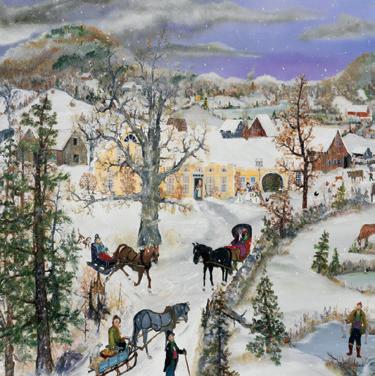
On February 10, I emailed Robert. “I took a walk up the road yesterday to scope out your drive.... Wanted to alert you that I may have grossly underestimated the time necessary to clear it [in my zeal, I’d previously told him it could take “a couple of hours”] ... there’s a LOT of snow....” Robert was understanding, and we decided to move forward based on my assurances that I’d do my best to get the drive cleared as quickly as possible. And also maybe based on the fact that he and Emily didn’t have a heck of a lot of options, as they’d soon be arriving in Vermont with their vehicles packed with all their worldly possessions. They were obviously rugged folk—who else moves to Vermont in the middle of winter, into a cabin with no utilities at the end of a half-mile driveway that starts above 2,000 feet in elevation and then climbs? I hadn’t even met them in person, and I was already a bit in awe.
Frankly, I was also (maybe just the littlest, tiniest, teensiest) in over my head. By now, the snow at our place was at least four feet on the ground. There was simply no way our plow truck was up to the task; this was a tractor job all the way. But clearing snow with a tractor is significantly slower than plowing, and even with the extra-deep bucket on our Kubota, I knew it was going to be like bailing a bathtub with a teaspoon. Fortunately, I also knew that our neighbor Scott had just taken delivery of a brand-
new tractor and that, like any rightminded fellow who’s just taken delivery of a brand-new tractor, he’d be eager to put it to the test. “I’ve got an amazing opportunity for you” is what I said when I stopped by Scott’s place. He laughed. But he didn’t say no. And that’s how it got done. Between the two of us, Scott and I put nearly 20 hours into the job. In places, the snow on Robert and Emily’s driveway was an honest six feet deep, and there were portions of driveway that were so steep I could barely make it up even after I’d moved the snow. I cleared snow two or three hours at a time, until I was too cold to carry on; then I’d return home to warm myself by the fire and drink another cup of coffee before heading out again. I kept my fingers crossed that we wouldn’t get a big storm the week before their arrival, and miraculously, we didn’t.

I finished moving snow the evening before Robert and Emily arrived, working by the tractor’s dim headlights, stopping every 15 minutes or so to warm my hands against the engine block. I hoped they’d be able to make it all the way to the cabin in their truck, although frankly, I wasn’t sure (turns out, they did—barely). But I’d done all I could do. At the height of the driveway, in the dooryard of their little cabin, I shut the tractor down and sat for a minute. The silence, particularly in the aftermath of the tractor’s diesel clatter, was complete. The sky above was startlingly clear and cold; the stars improbably bright. I could just make out the slender dark outlines of the surrounding trees against the starlit sky.















I knew there’d be nothing easy about living up here: no electricity, hauling water, the road sure to close in again soon—and even that’d be better traveling than the spring thaw, when it’d turn to mush. But in that moment, cold and tired as I was, I felt just the smallest twinge of envy, and I could understand why they’d fallen for the place. And maybe for the first time in my life, I was really, really glad to be done plowing snow.




EnergAire continuously puri es up to 4,000 cubic feet (a large room) of air and makes it breathable and invigorating. Restores natural ion balance to unhealthy environments caused by industrial pollution, automobile exhaust, central airconditioning, and heating, smoke, dust, pollen, animal fur. . . removes microscopic pollution particles not removed by any other method of air puri cation. EnergAire was rated Number One for speed of removal of cigarette smoke by the leading U.S. consumer protection magazine. It has no noisy fan, no costly lter, and requires no maintenance. Uses less than 2 watts. 9" high. 3" diameter. Weighs less than 1 pound. $69.95

RODAR is the super-powerful professional ultrasonic pest repeller with up to 60 or more times the power of other devices — and power is what makes RODAR so e ective. RODAR ultrasound equals a jet engine — noise unbearable to pests but at frequencies humans and pets cannot hear. RODAR units are completely safe. RODAR drives pests out and keeps them from getting in. Handsome simulated walnut cabinet 5-5/8" high. Weight 1-1/2 pounds. Uses less than 5 watts. $99.95

90-day money-back guarantee — 12-month warranty.To order: Send cost for unit(s) plus $10.00 each for shipping and handling (in Mass. add 6.25% tax) by check, money order, MasterCard, Visa, or Discover number and expiration date to Micron Corp. Call Toll-Free 1-800-456-0734


www.MicronCorp.com/yankee
















on Cape Cod HANDMADE on Cape Cod made in USA



mark them clearly.________________________________________________________ SANDWICH LANTERN

www.sandwichlantern.com

Your BEST DEFENSE against winter’s worst…

RABIDEAU

proof necessary) Signature:
DR® SNOW BLOWERS!








needed. (send new proof) Signature:
Professional-duty performance you can depend on...year after year!
responsible for errors once proof has been signed— or if not returned by the above date. that color proof/pdf is to show color break only. Colors do not accurately actual printed advertisement as it will appear in the publication. 508.771.6549 ONION LIGHTS ANCHOR LIGHTS CHANDELIERS • SCONCES SOLID SOLID BRASS 17 Jan Sebastian Dr., Unit #1, Sandwich, MA 02563
SIMPLER STRONGER FASTER






4 MODELS from 24" to 34" wide, and with engines from 7 to 14 HP.
EZ-TURN™ STEERING for effortless 180º turns at the end of your driveway.





RABIDEAU MEDIA GROUP
6 SPEEDS FORWARD/2 REVERSE on all models.
EXTRA-WIDE IMPELLERS throw snow up to 50'.


protected drive gears for speed and durability. LED HEADLIGHT & HEATED HAND
with separate on/off controls.
GRIPS

proof necessary) Signature: _________________________________________________ needed. (send new proof) Signature:









or fluids to leak or DRlogsplitters.com 1A81CB © 2020 DRsnowblowers.com 1A81CA © 2020 Go Online or Call for FREE Info Kit! 888-208-5282 TOLL FREE *Assembled in the USA using domestic and foreign parts. Split wood indoors! ELECTRIC MODELS TOO! EASY FINANCING FREE SHIPPING 1 YEAR TRIAL SOME LIMITATIONS APPLY. GO ONLINE OR CALL FOR DETAILS.
RABIDEAU MEDIA GROUP





















“Your

























When you love plowing snow, it’s easy to get in over your head.
hen it snowed in early November, we were not surprised. There is often sticking snow in early November, or even in October, when the stubborn remnants of foliage cling to the trees, and you’d swear you never saw anything more beautiful in your life: all those red and orange leaves against the backdrop of pure white, the land like a slate wiped clean. A new beginning. Or at least the promise of one. But inevitably, invariably, that early snow will melt, and sooner rather than later, that promise will go unfulfilled. Which is exactly what I expected of that early November snow. Still, if I’ve learned anything over the nearly 50 Vermont winters I’ve seen come and go, it’s to take nothing for granted. So I vowed to make the most of it. I retrieved my cross-country skis from the loft over the cows’ run-in shed, where the chickens had enjoyed roosting for much of the summer, leaving my skis coated in a crusted rime of excrement. Nothing says the joys of rural living like scraping dried chicken poop off your cross-country skis. Soon after, I smashed out the driver’s-side window in the plow truck when I slid off the driveway and directly into the gnarled branch of what had previously been one of my favorite apple trees, but which, when viewed though the ragged shards of remaining window glass, suddenly looked like as fine a piece of firewood as ever existed. Nothing says the joys of rural living like a lap full of window glass and a very stuck truck.




















